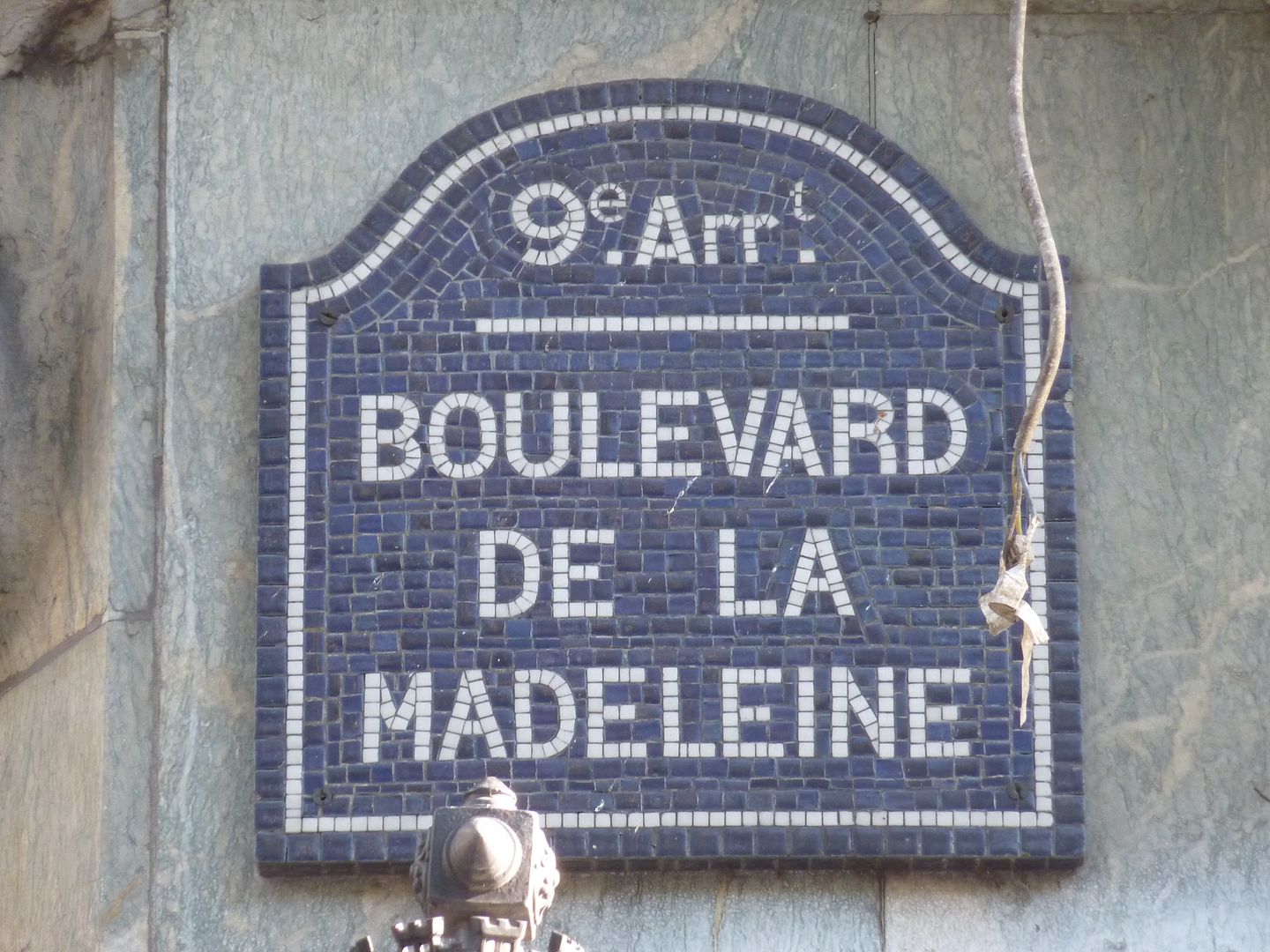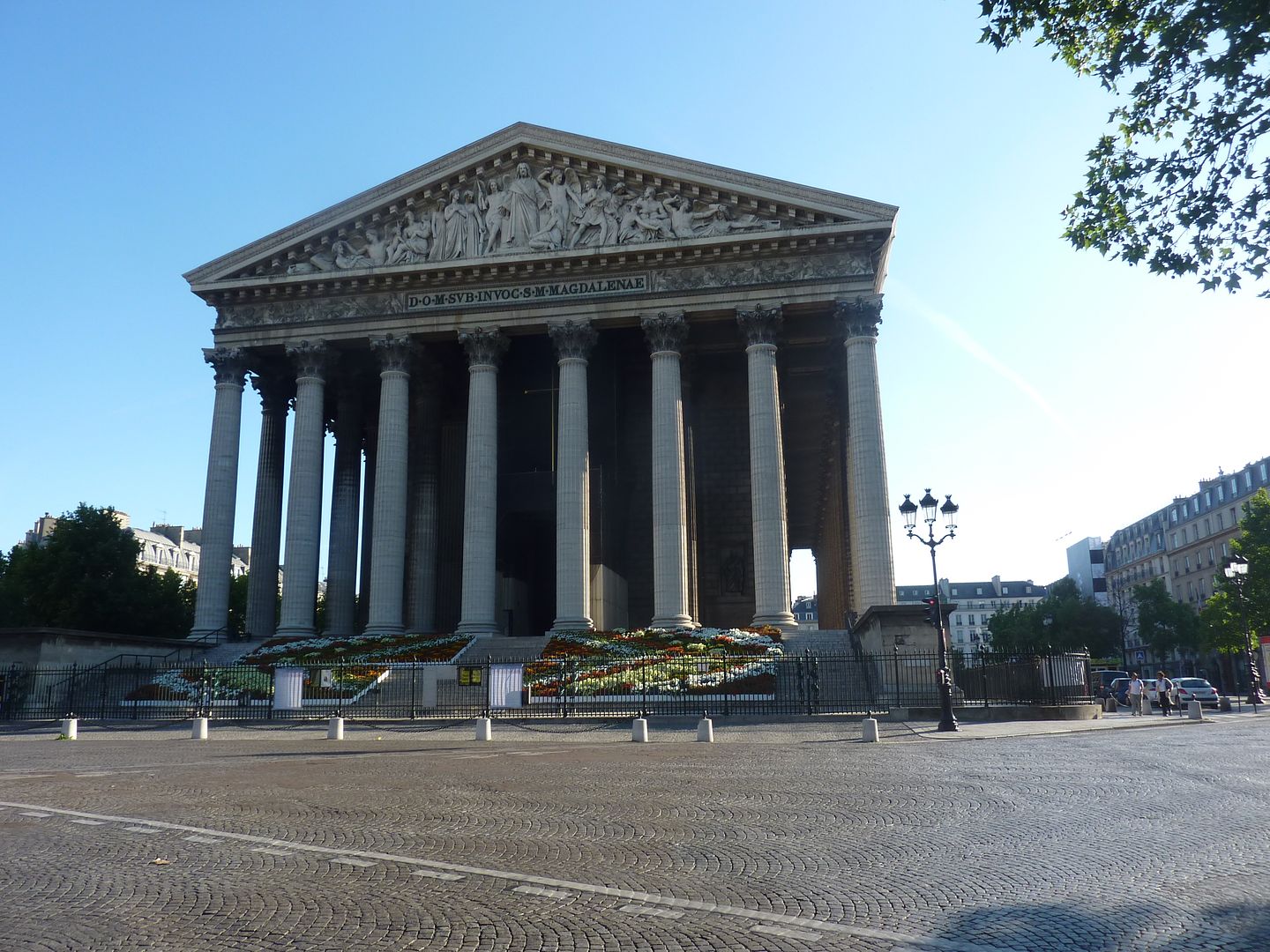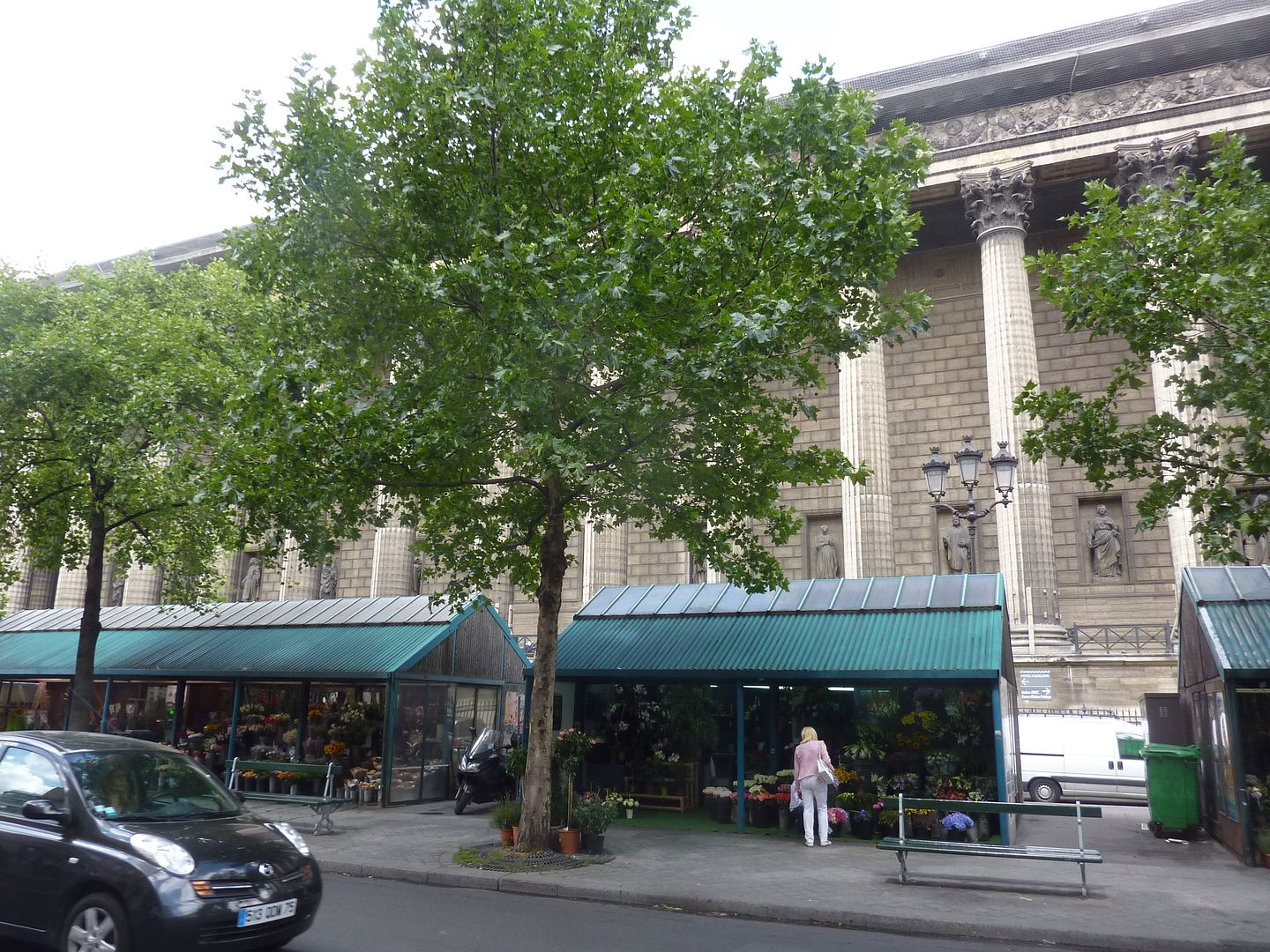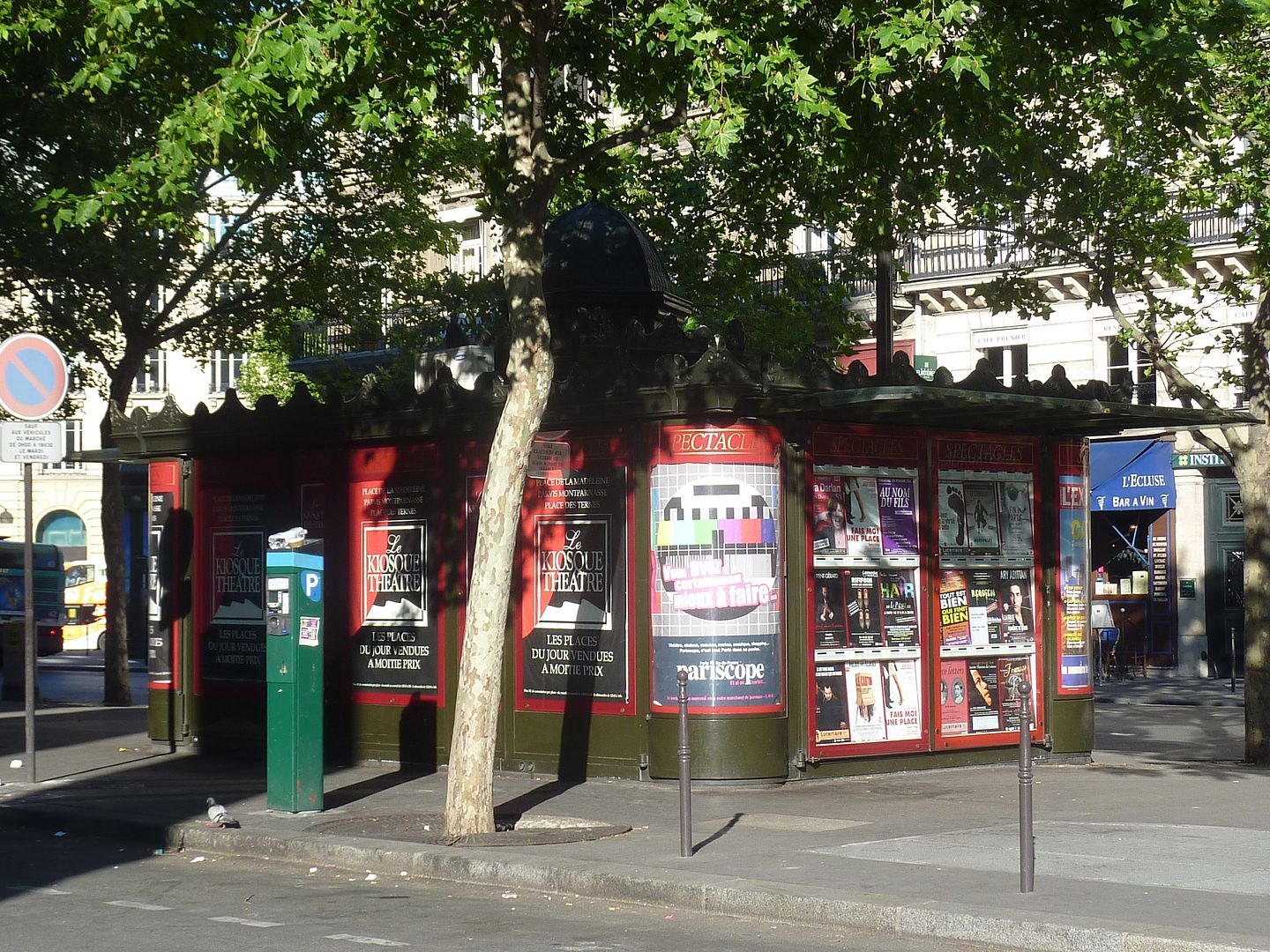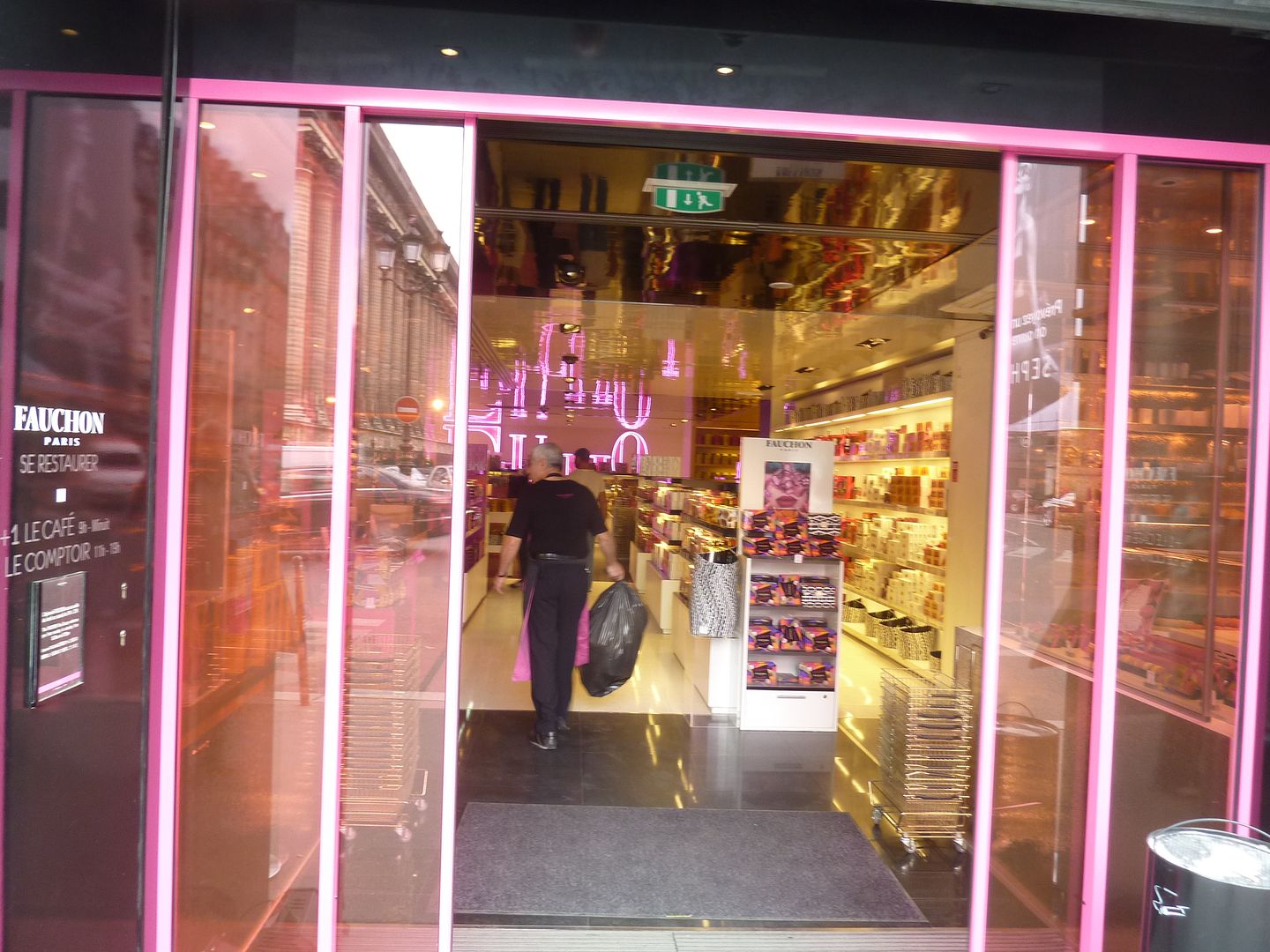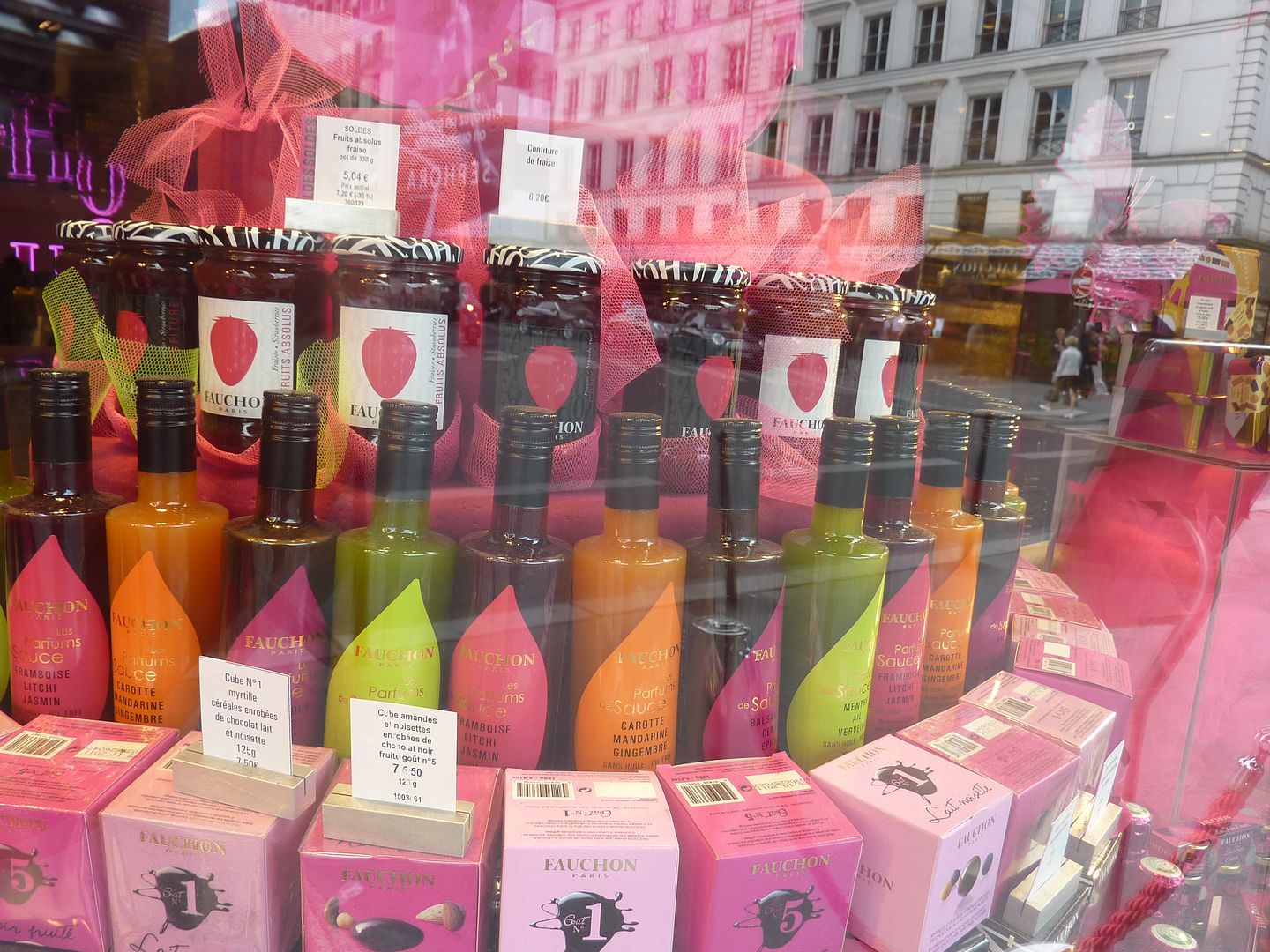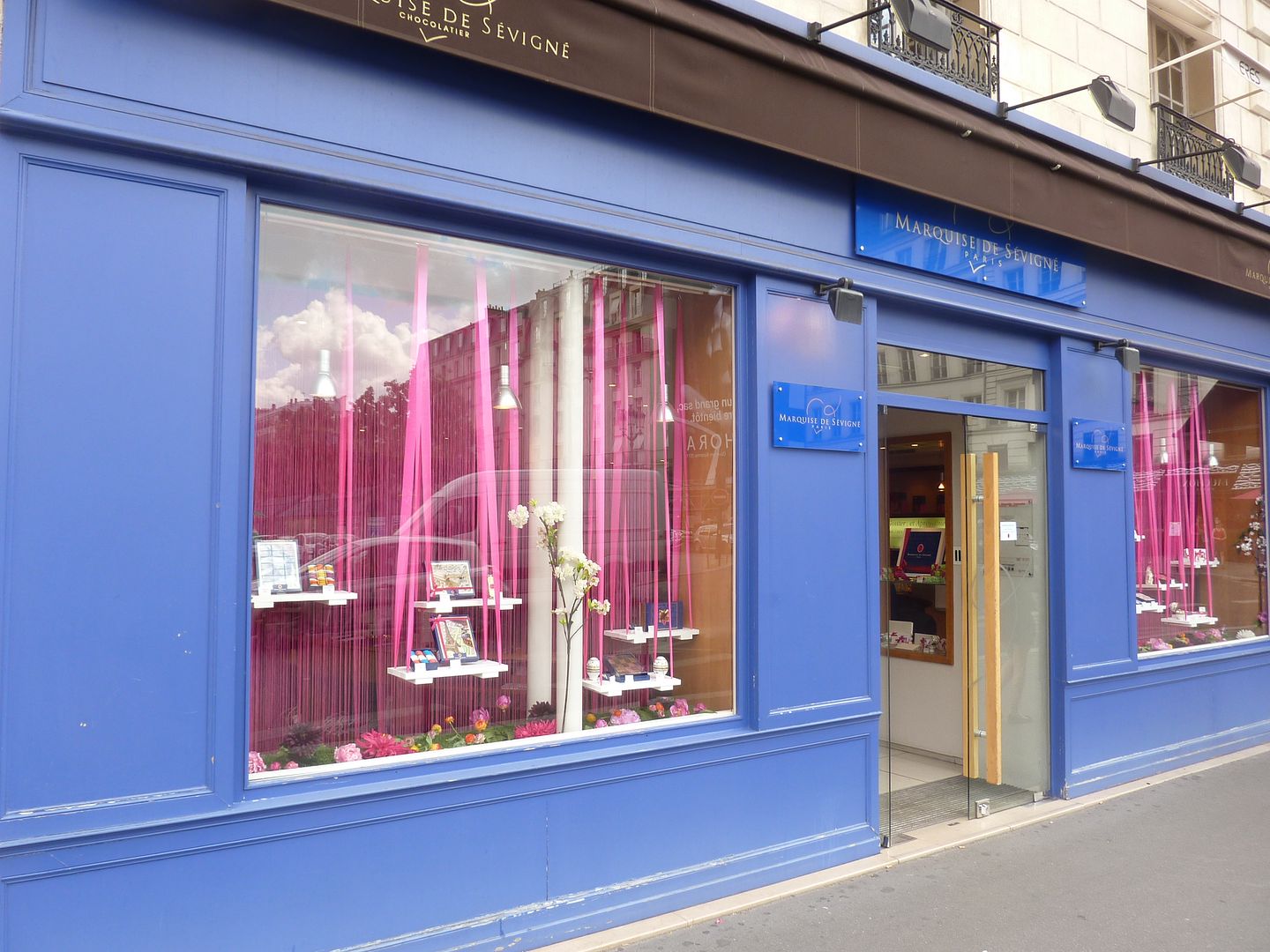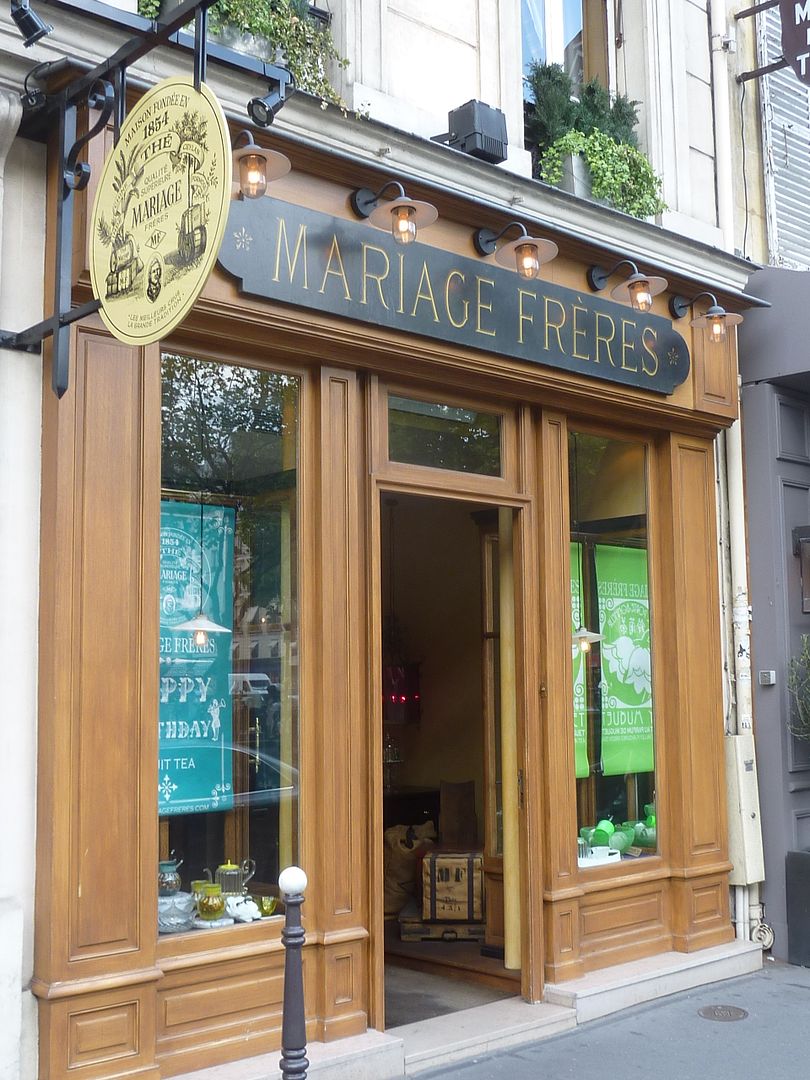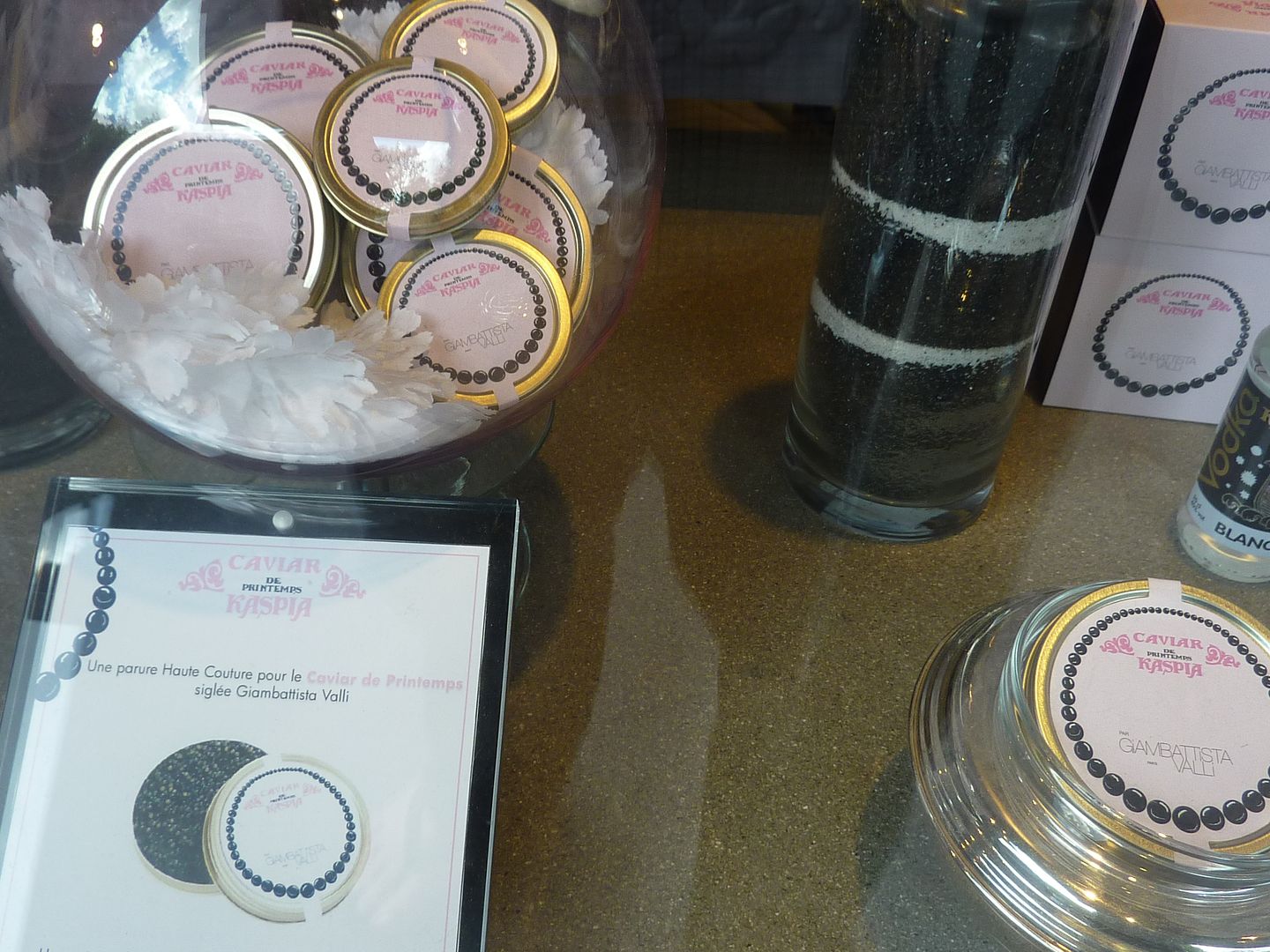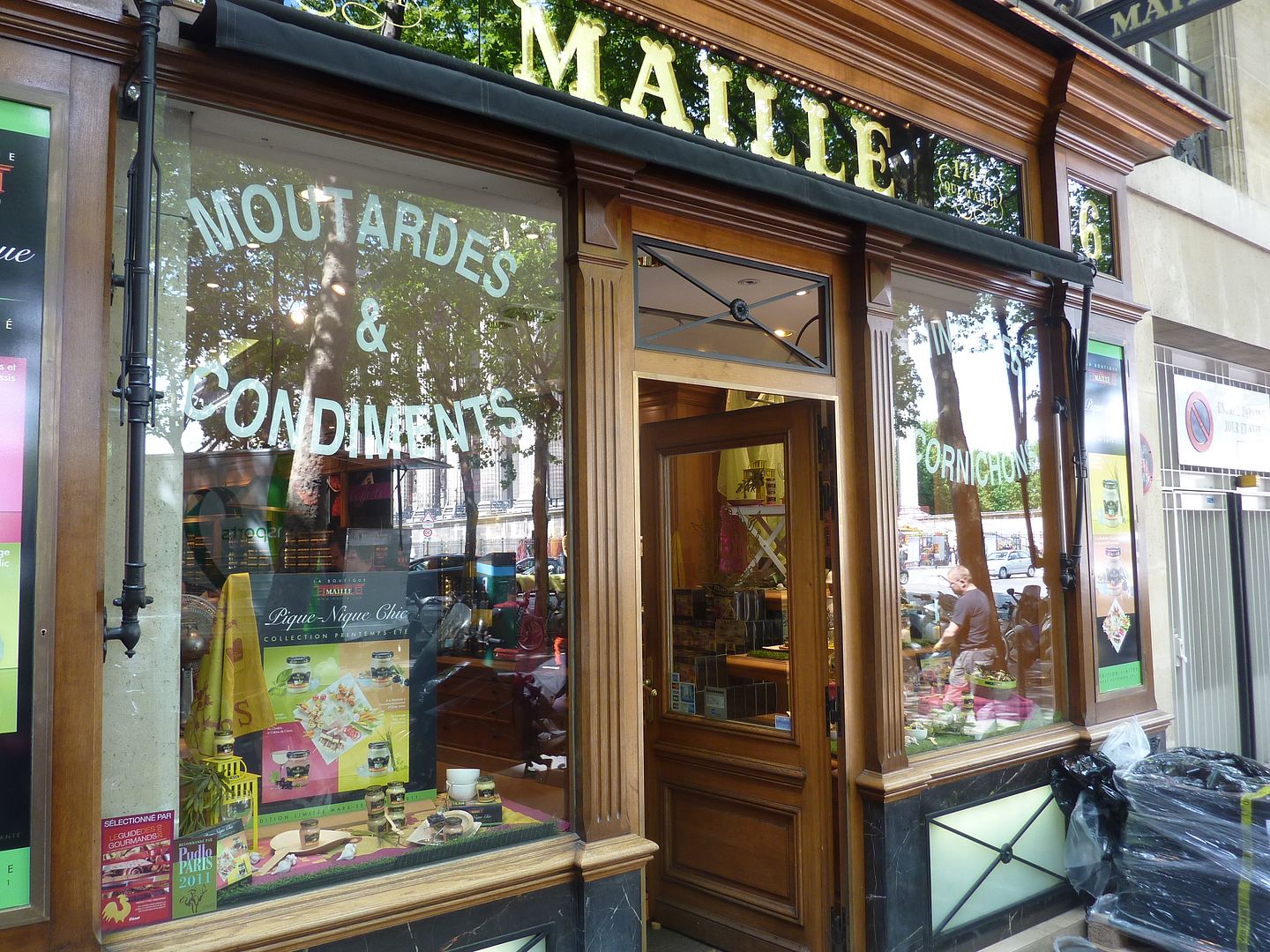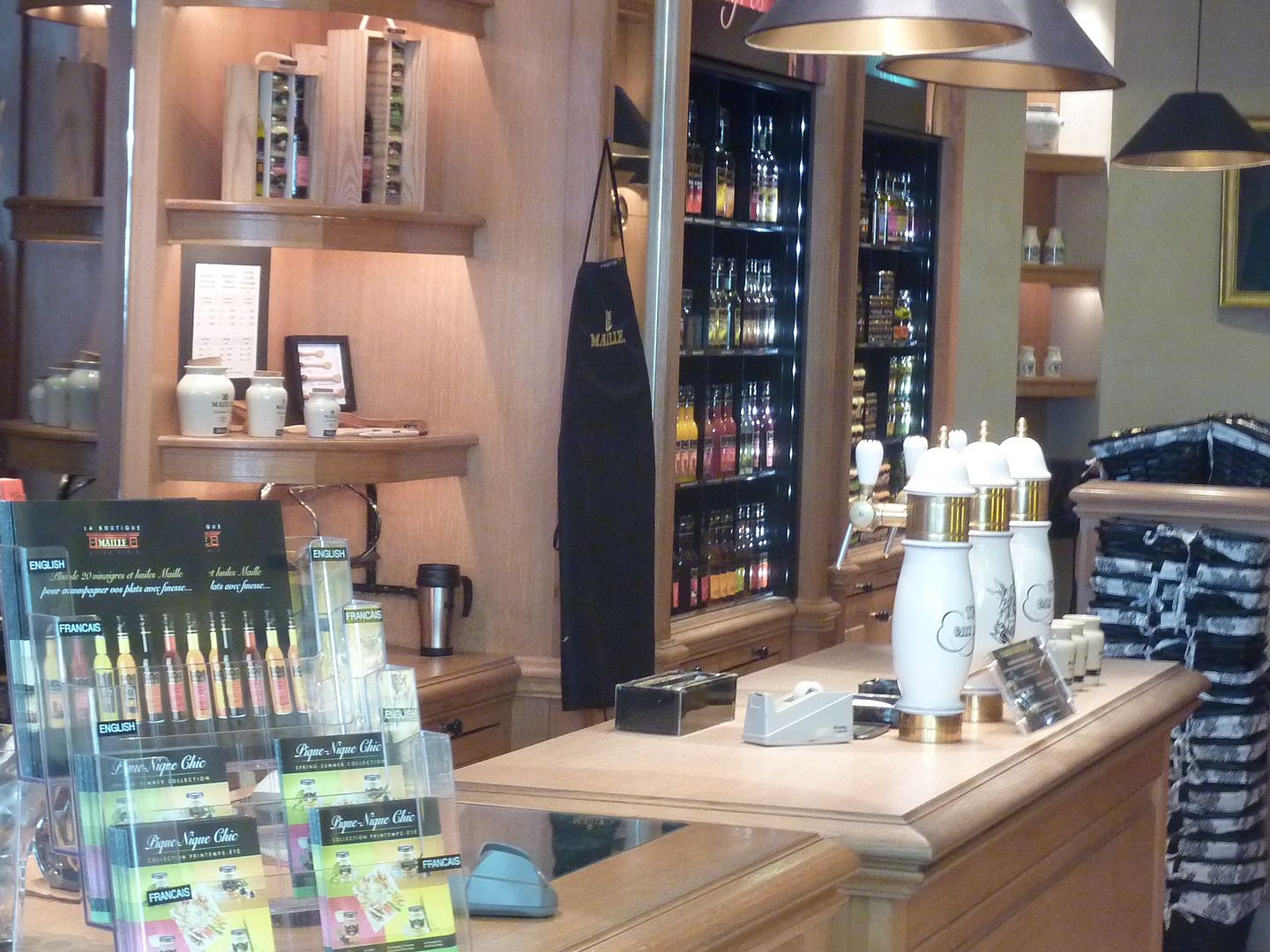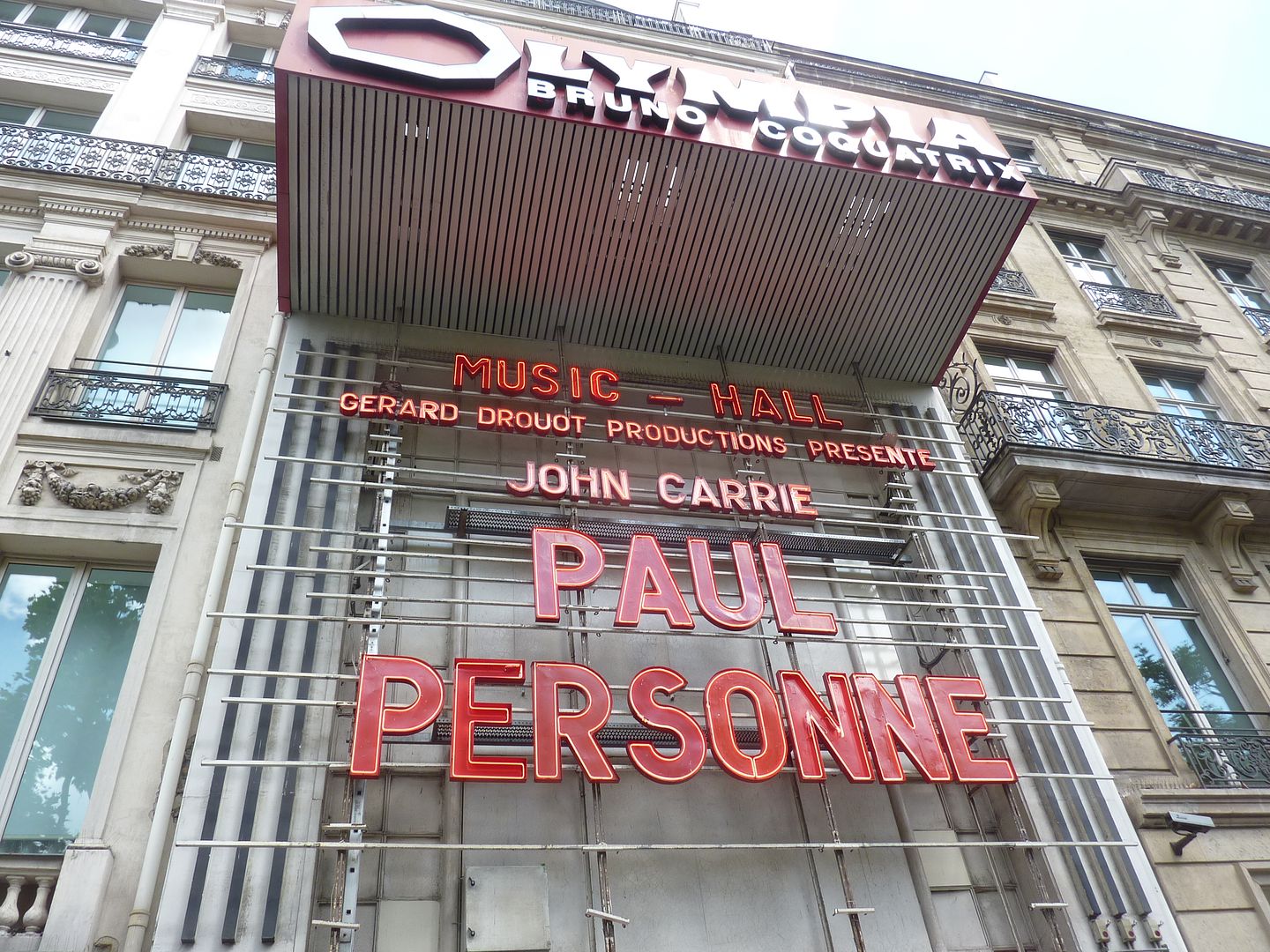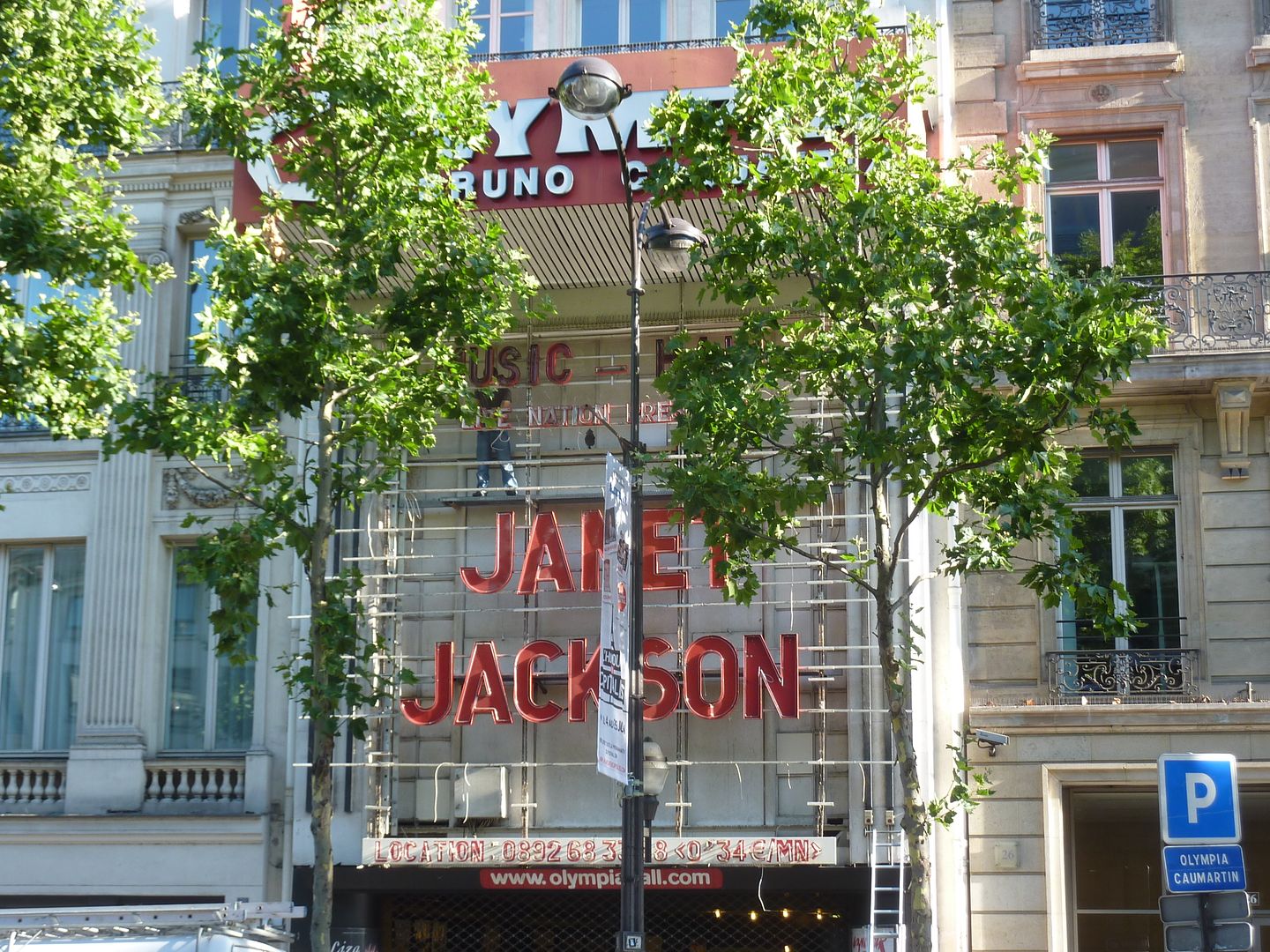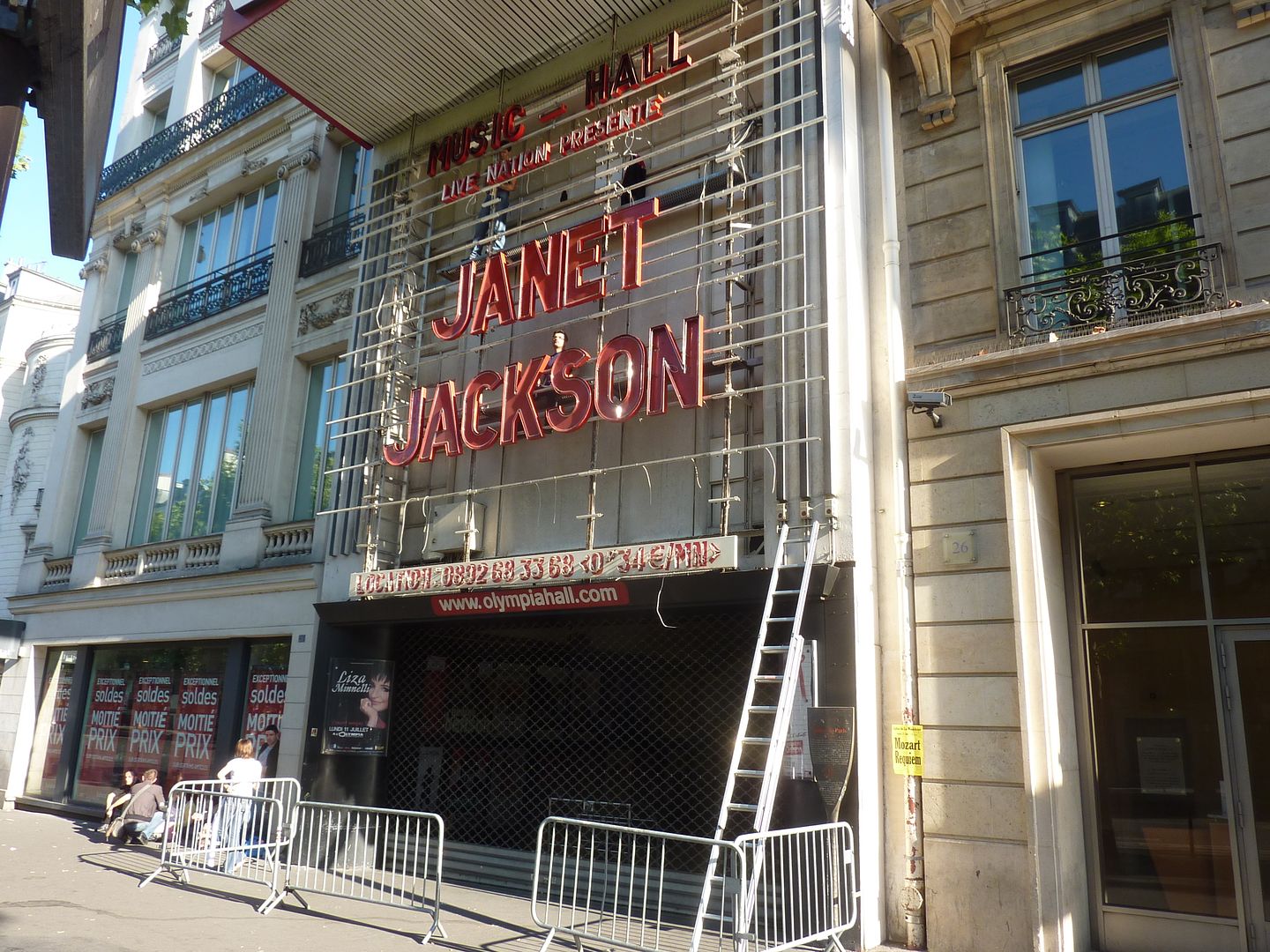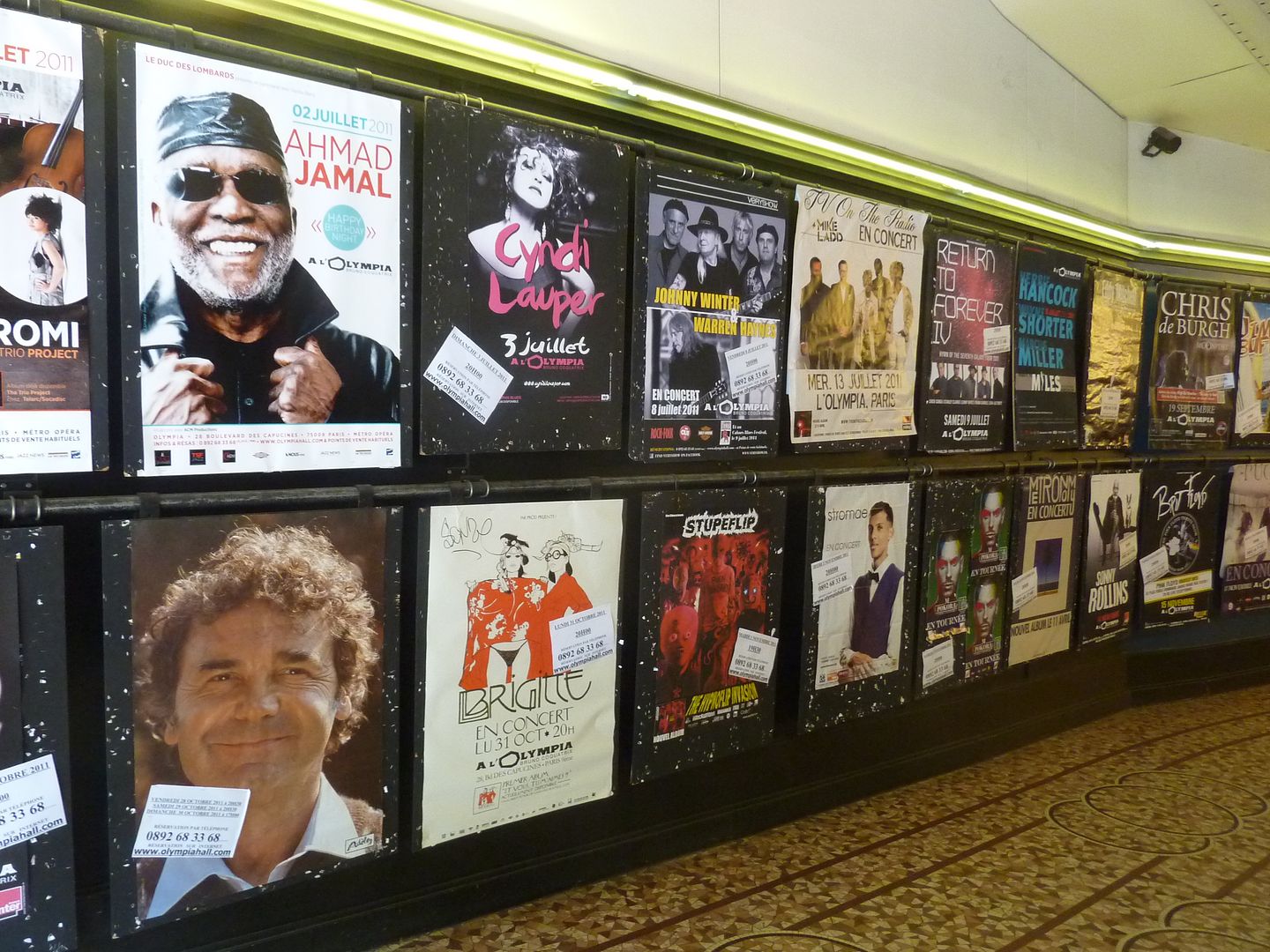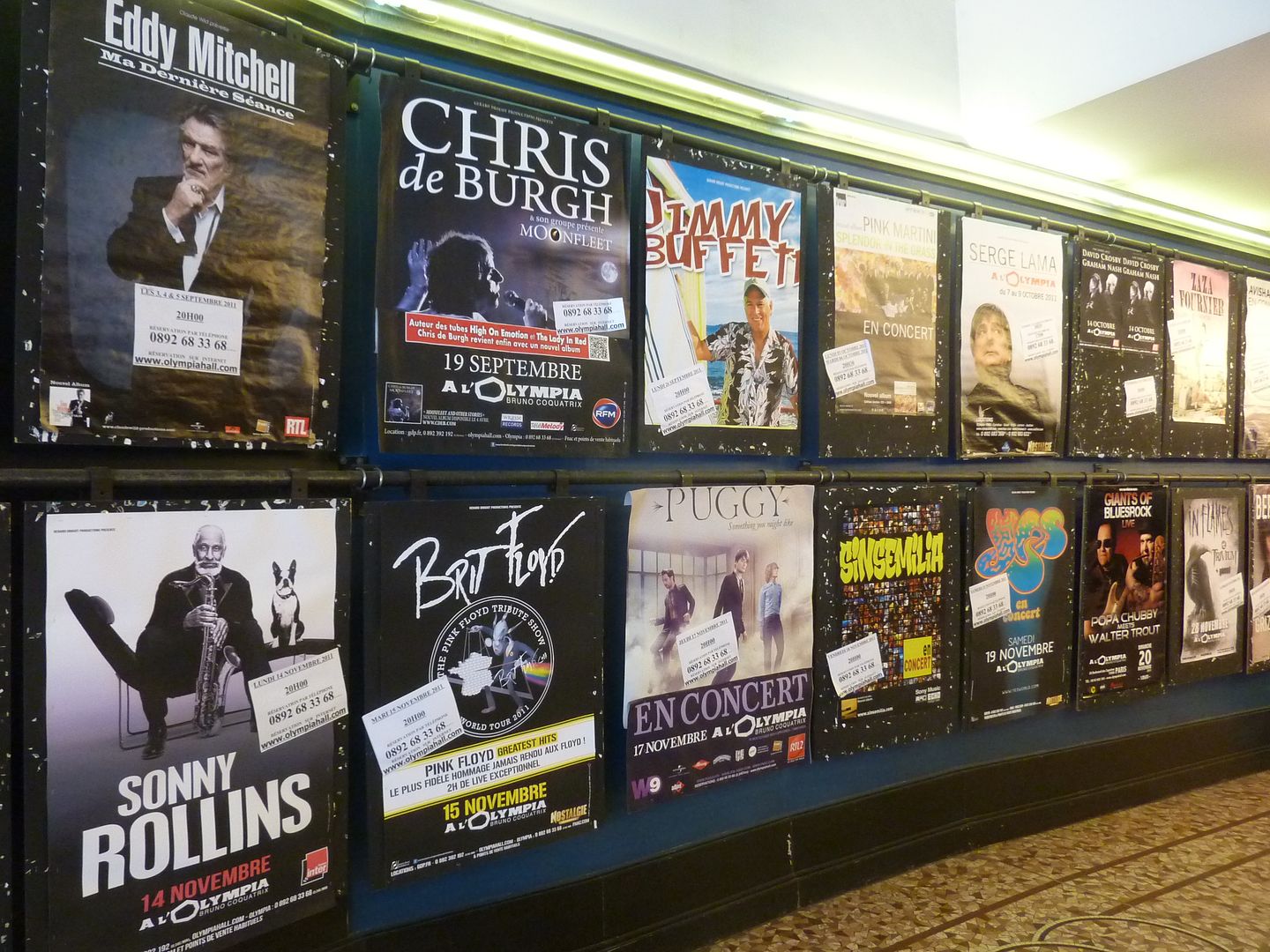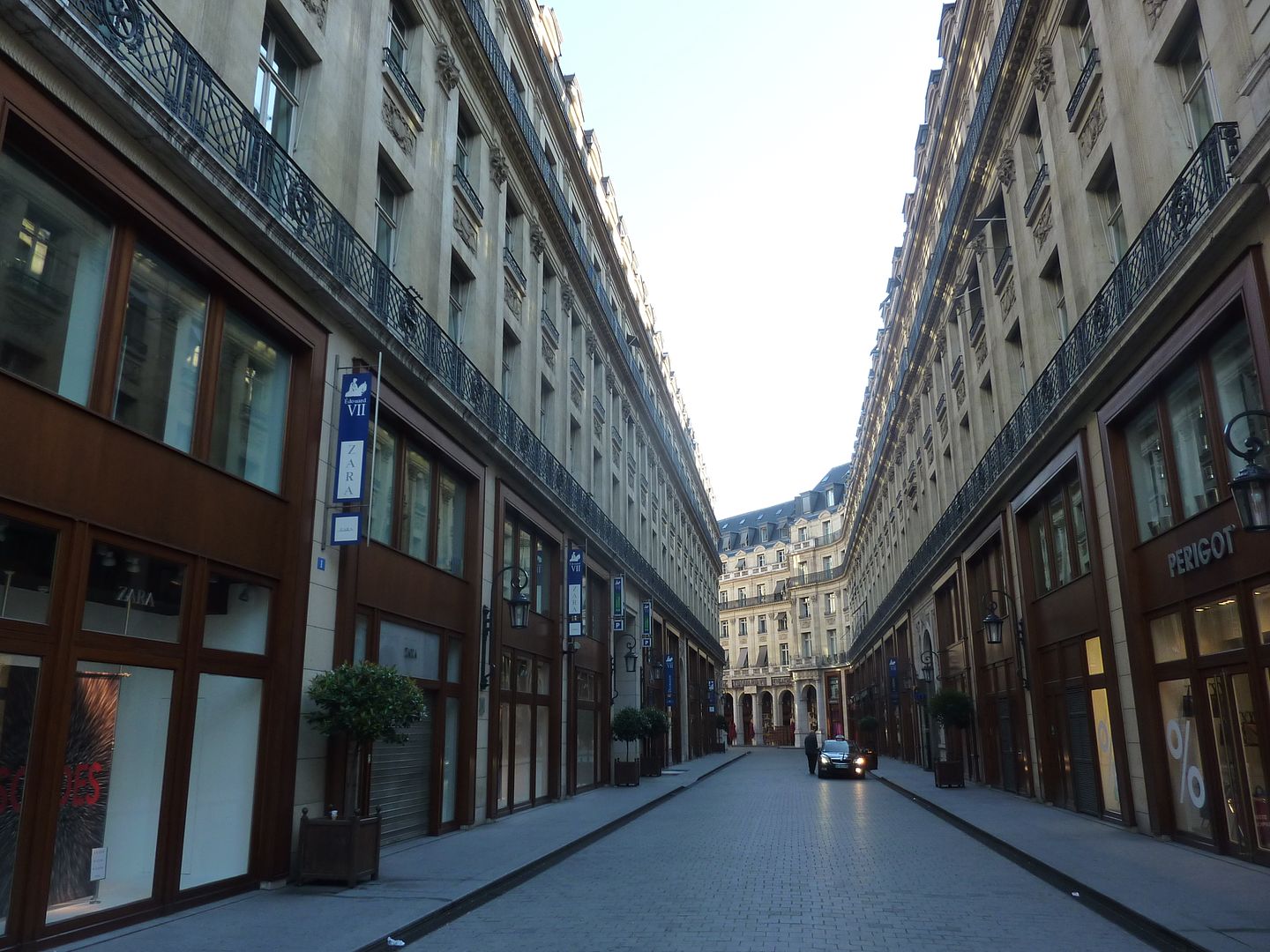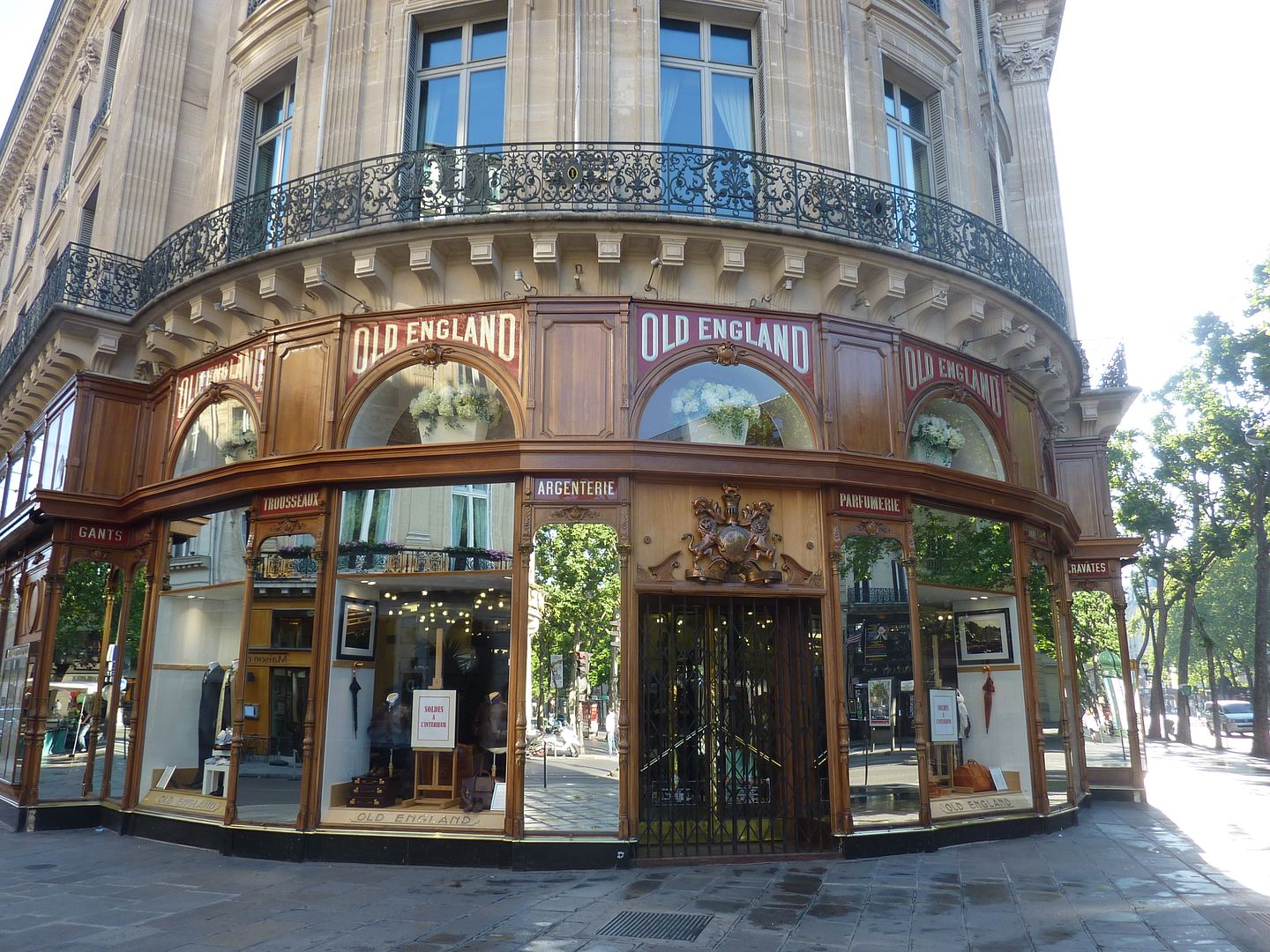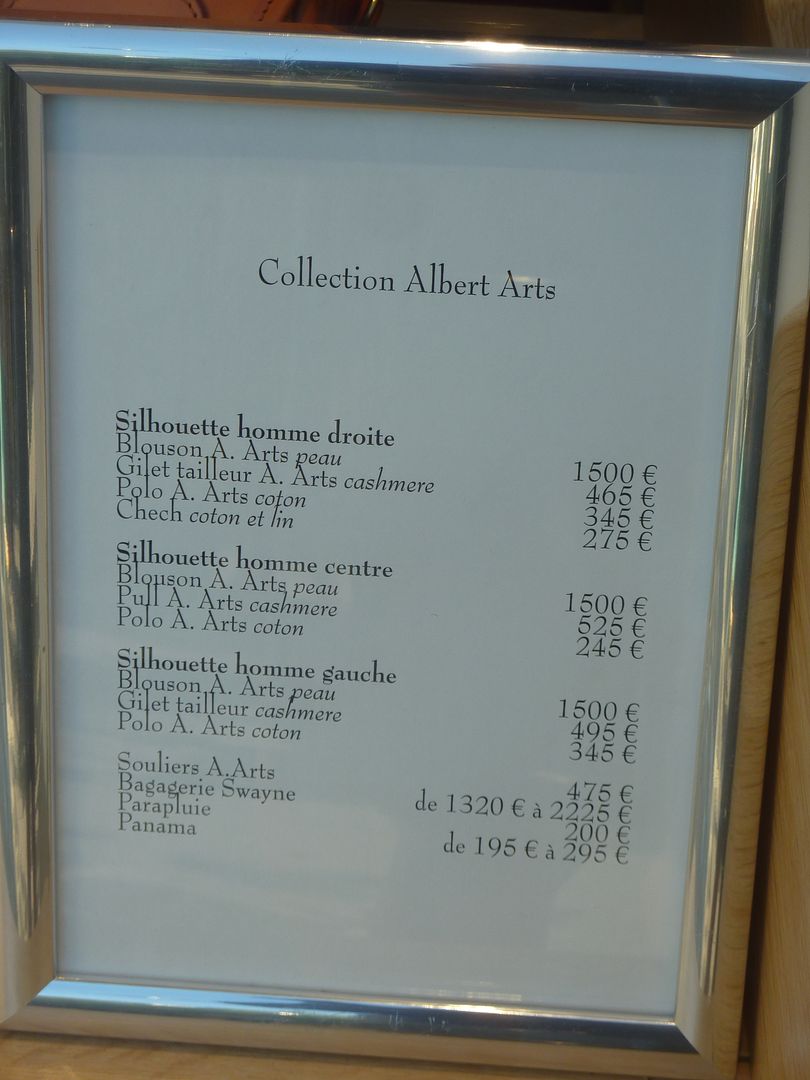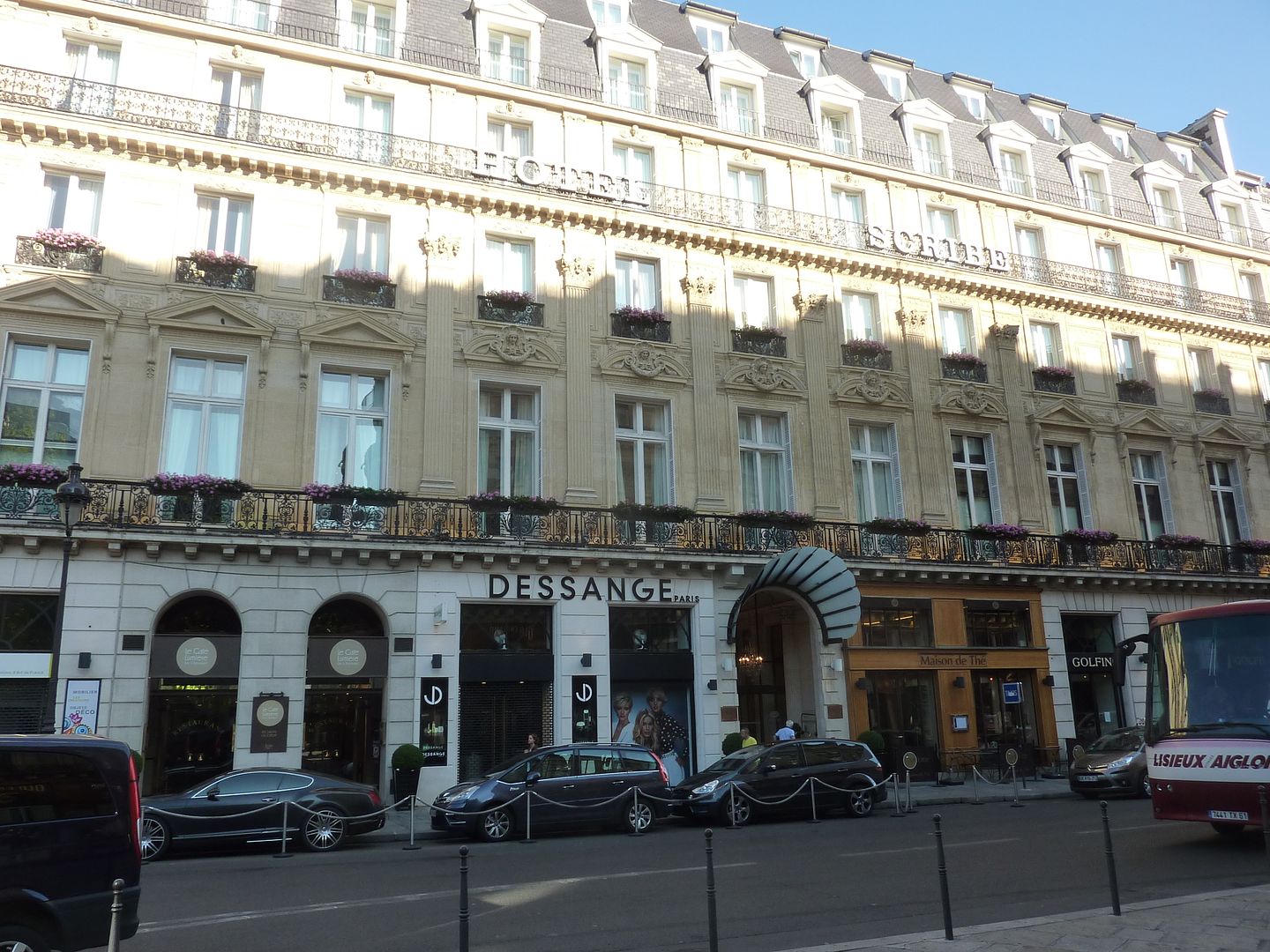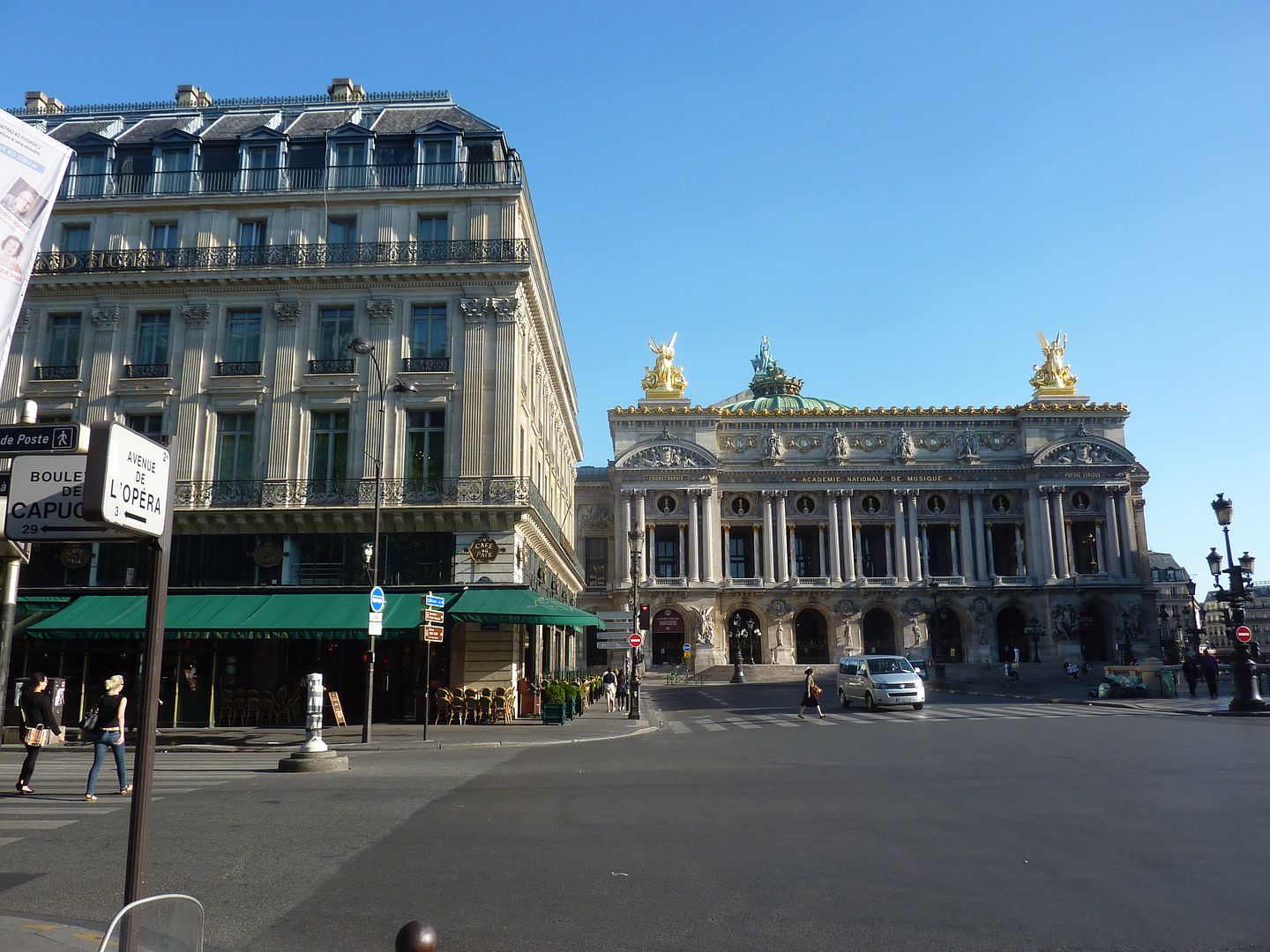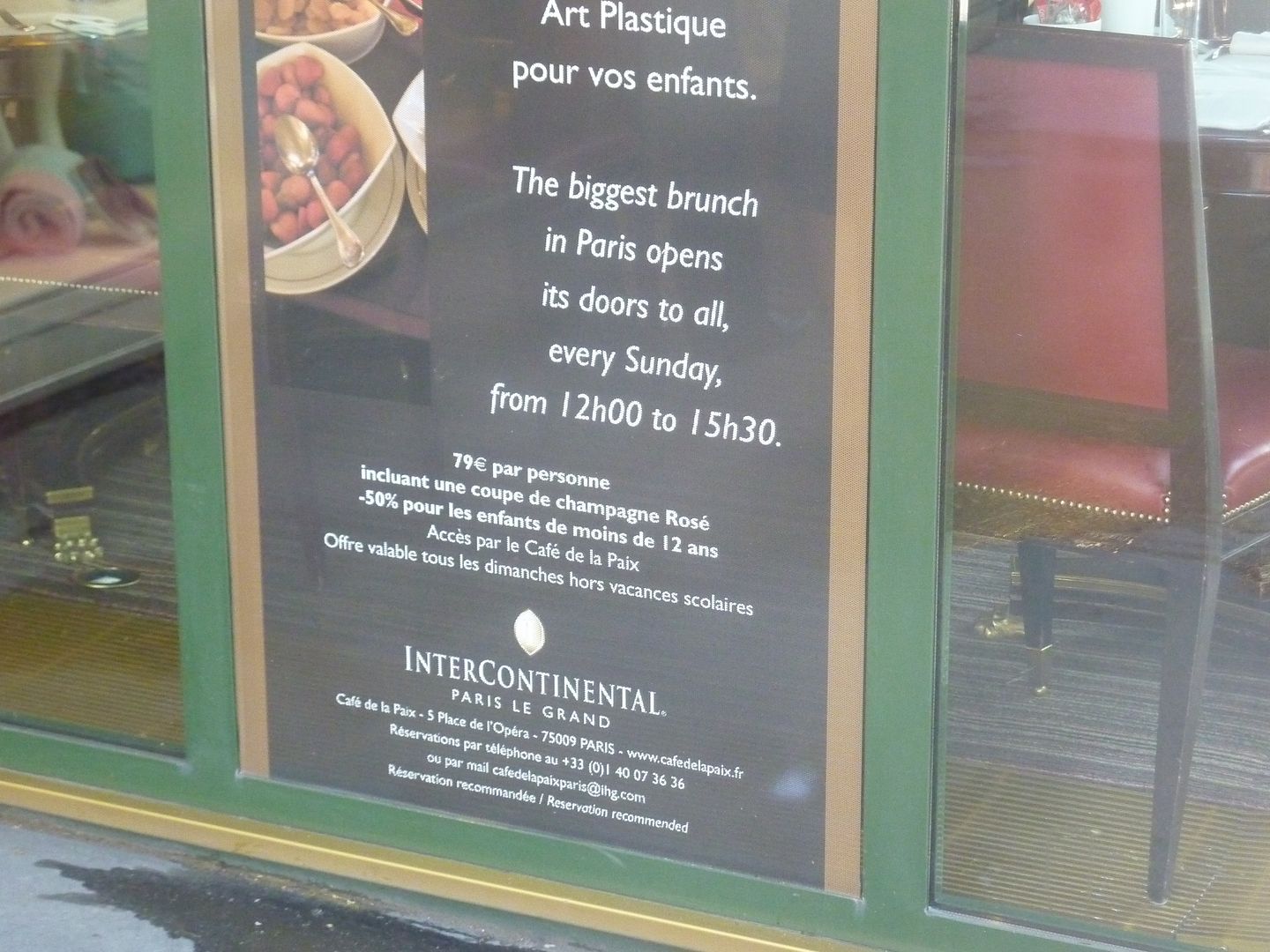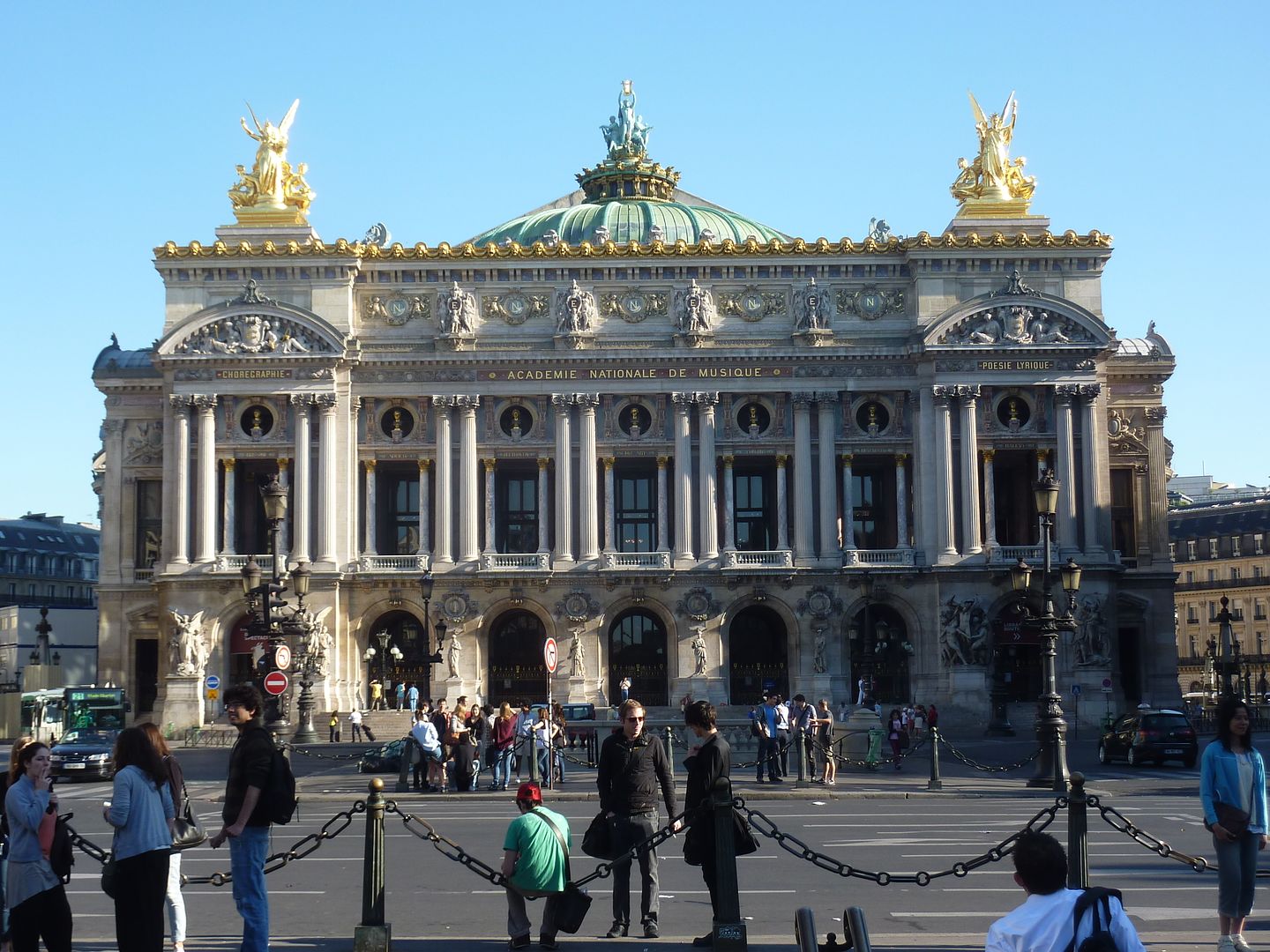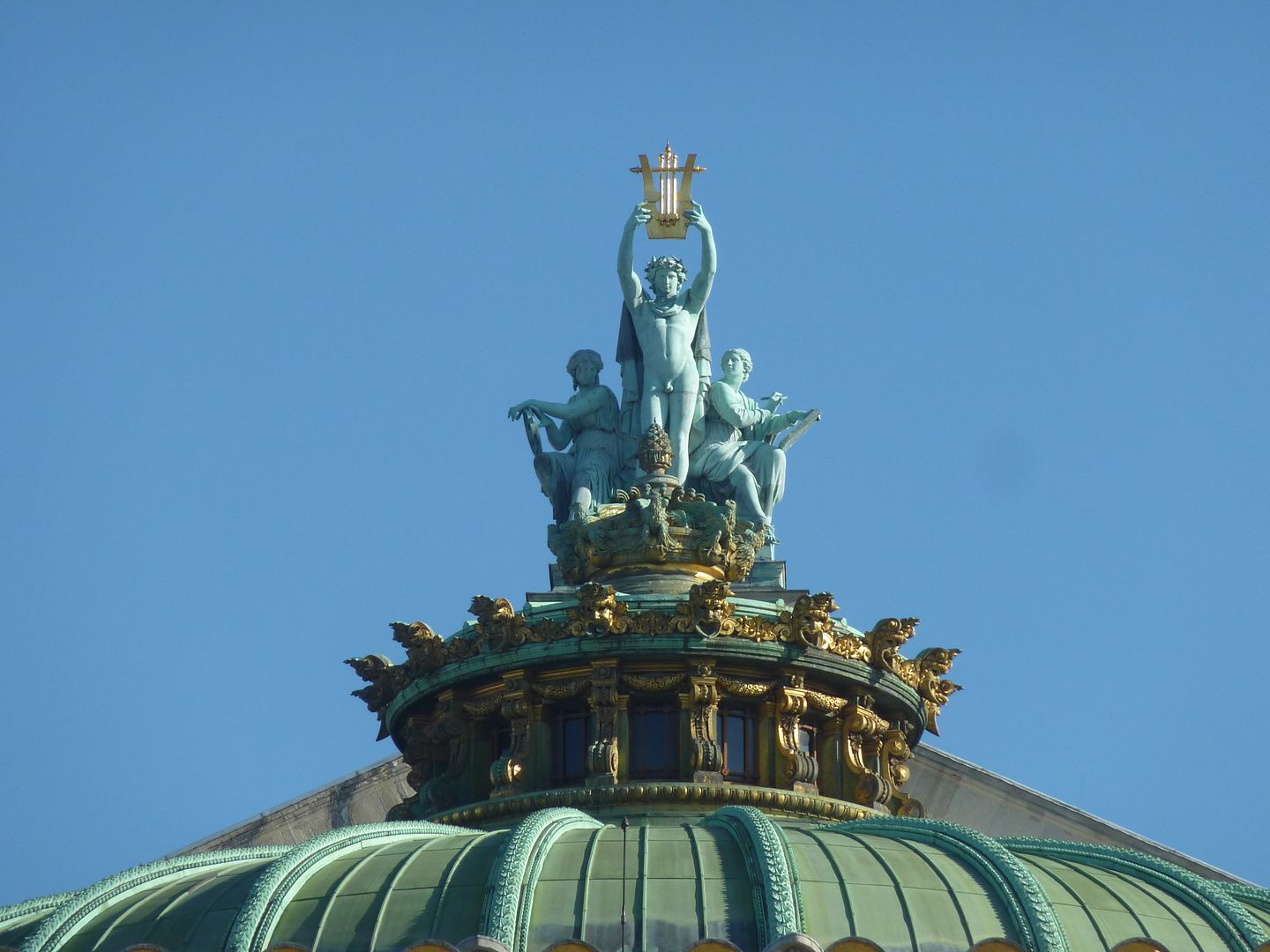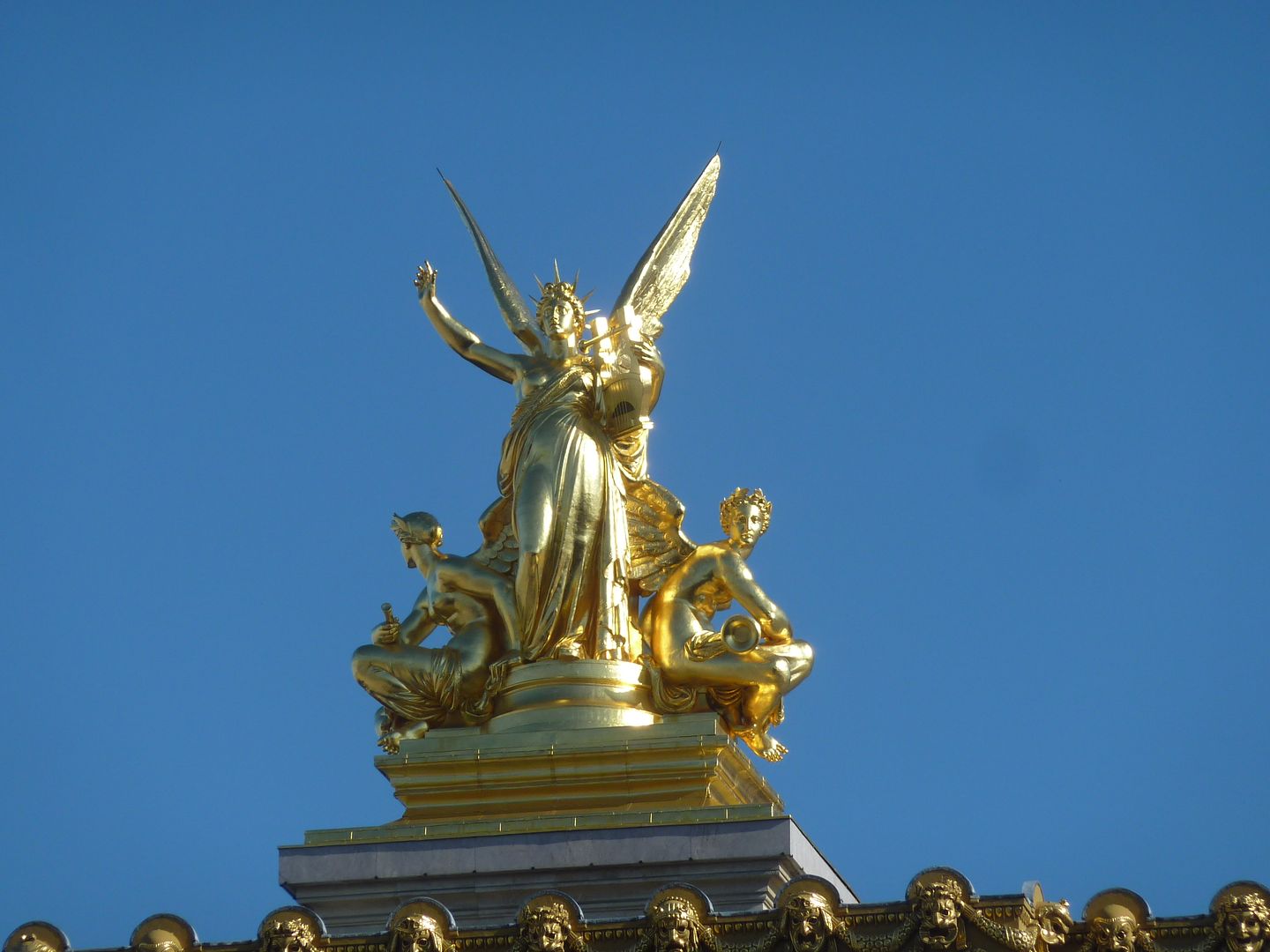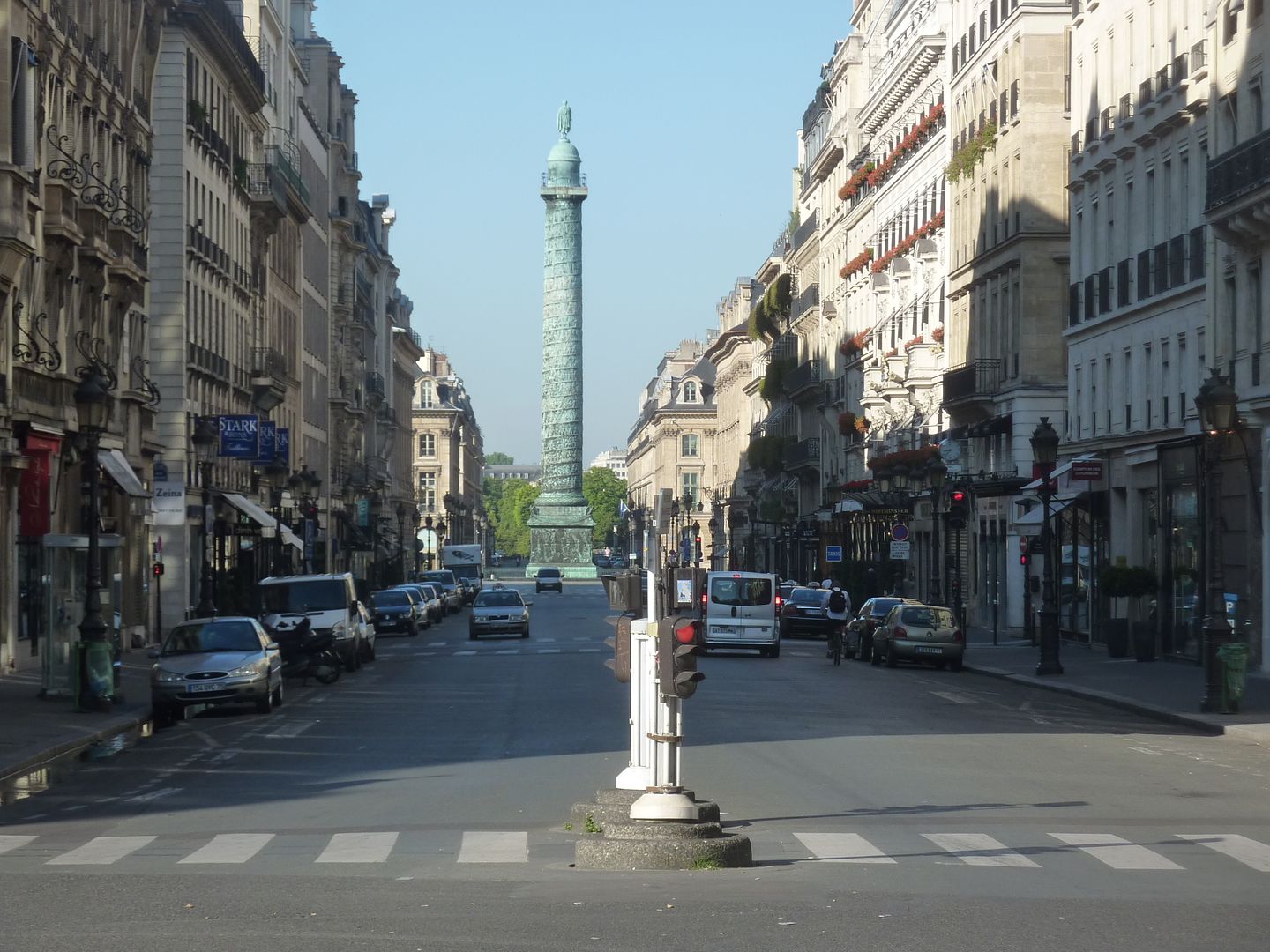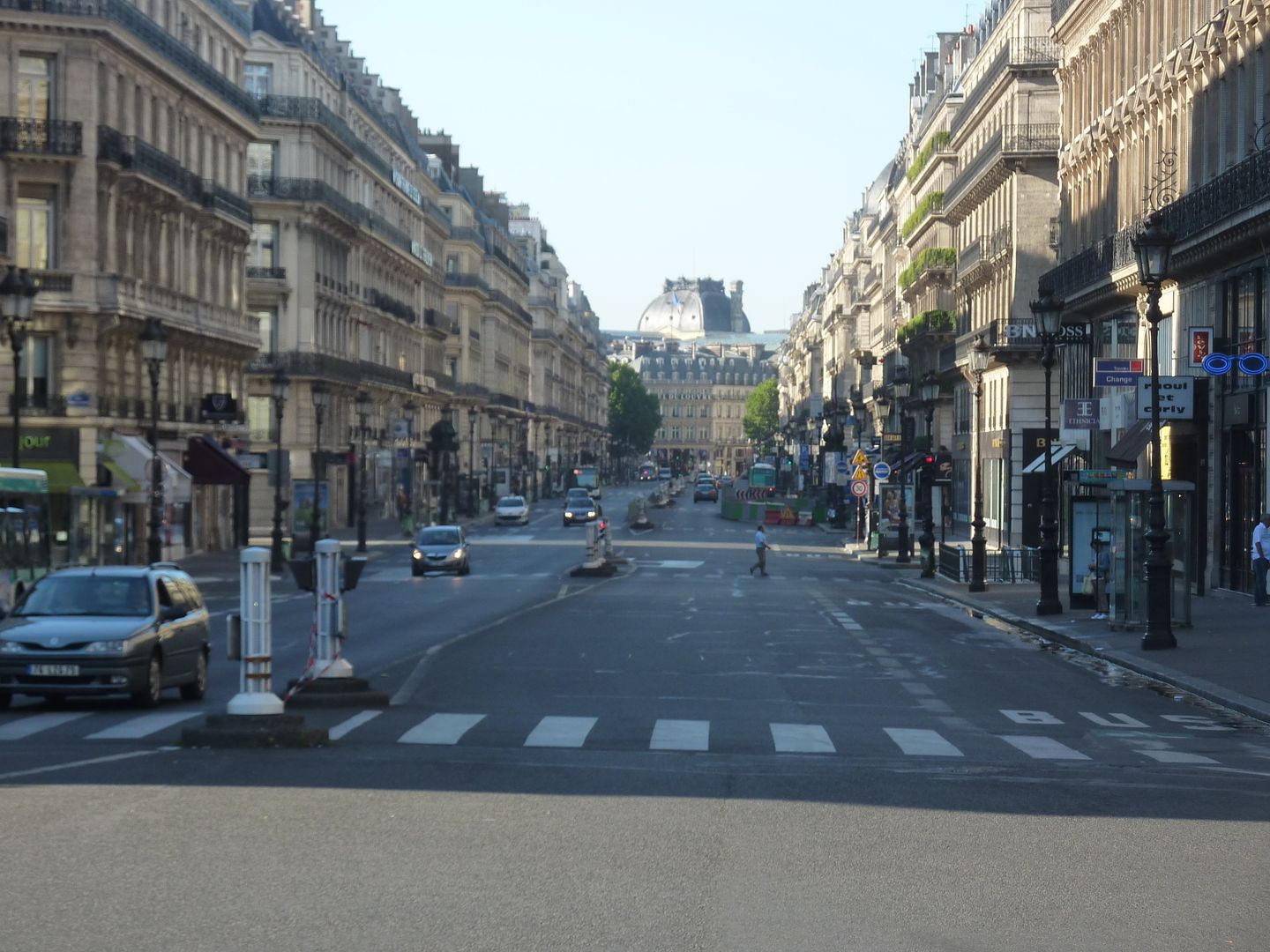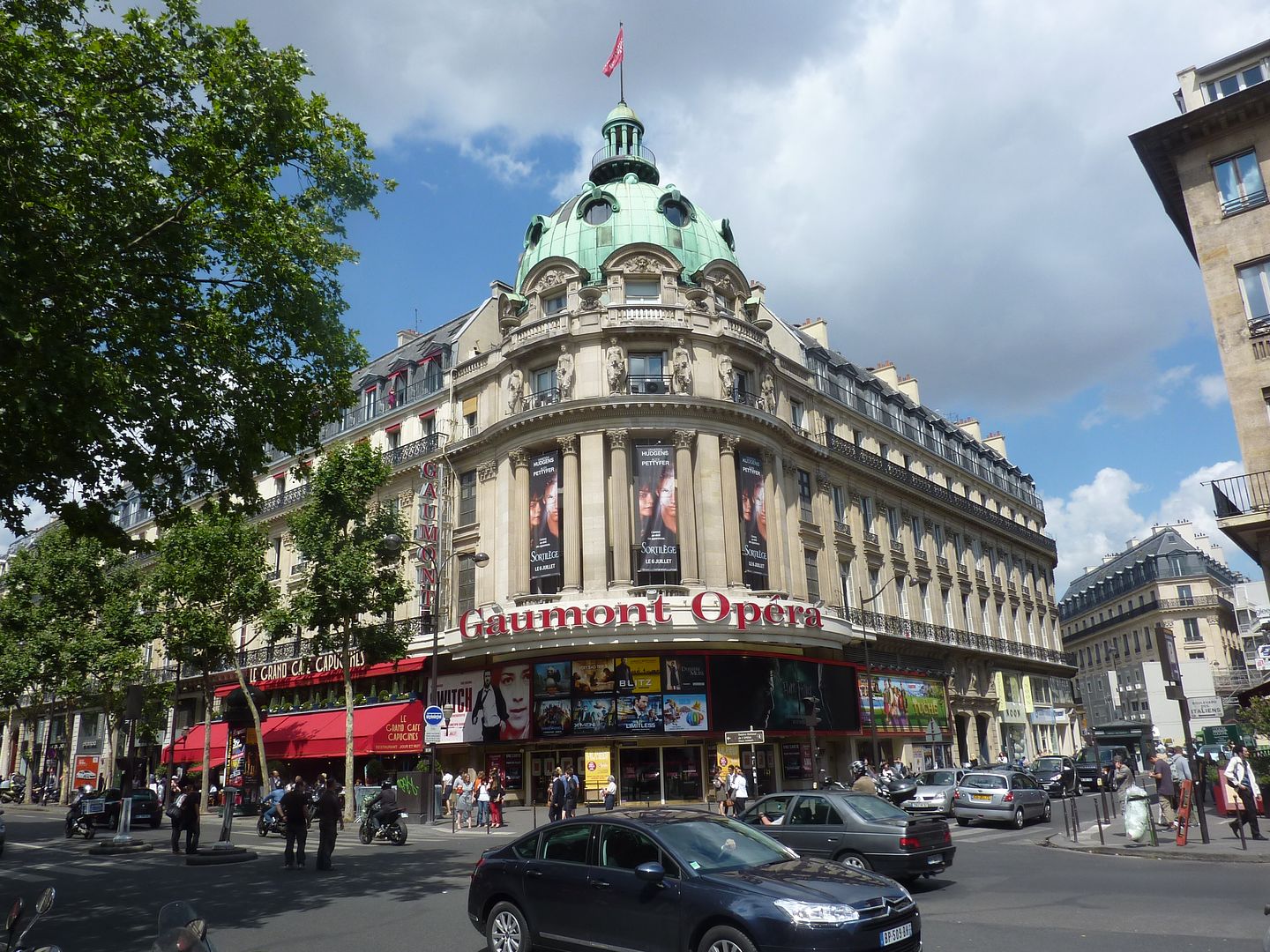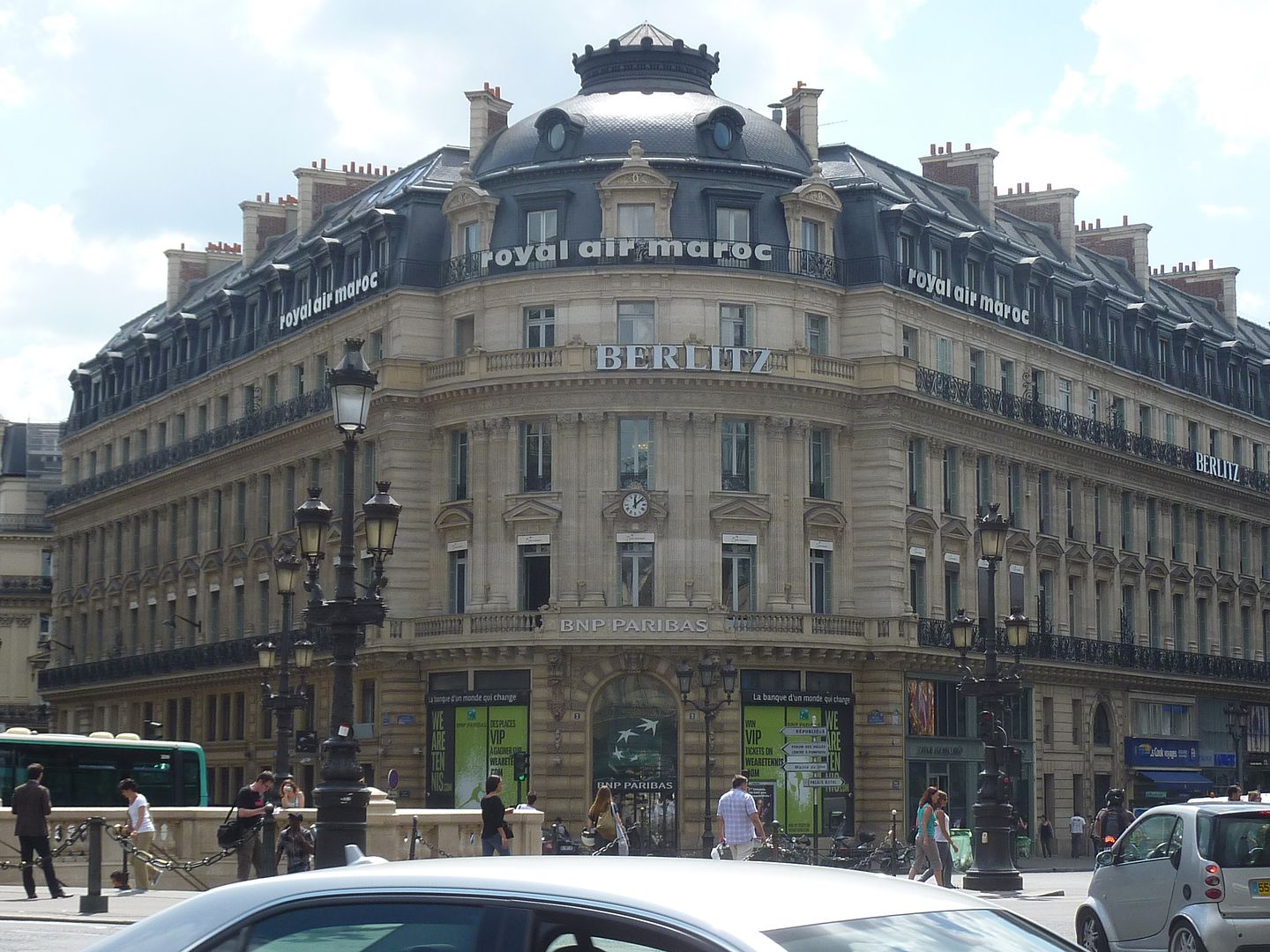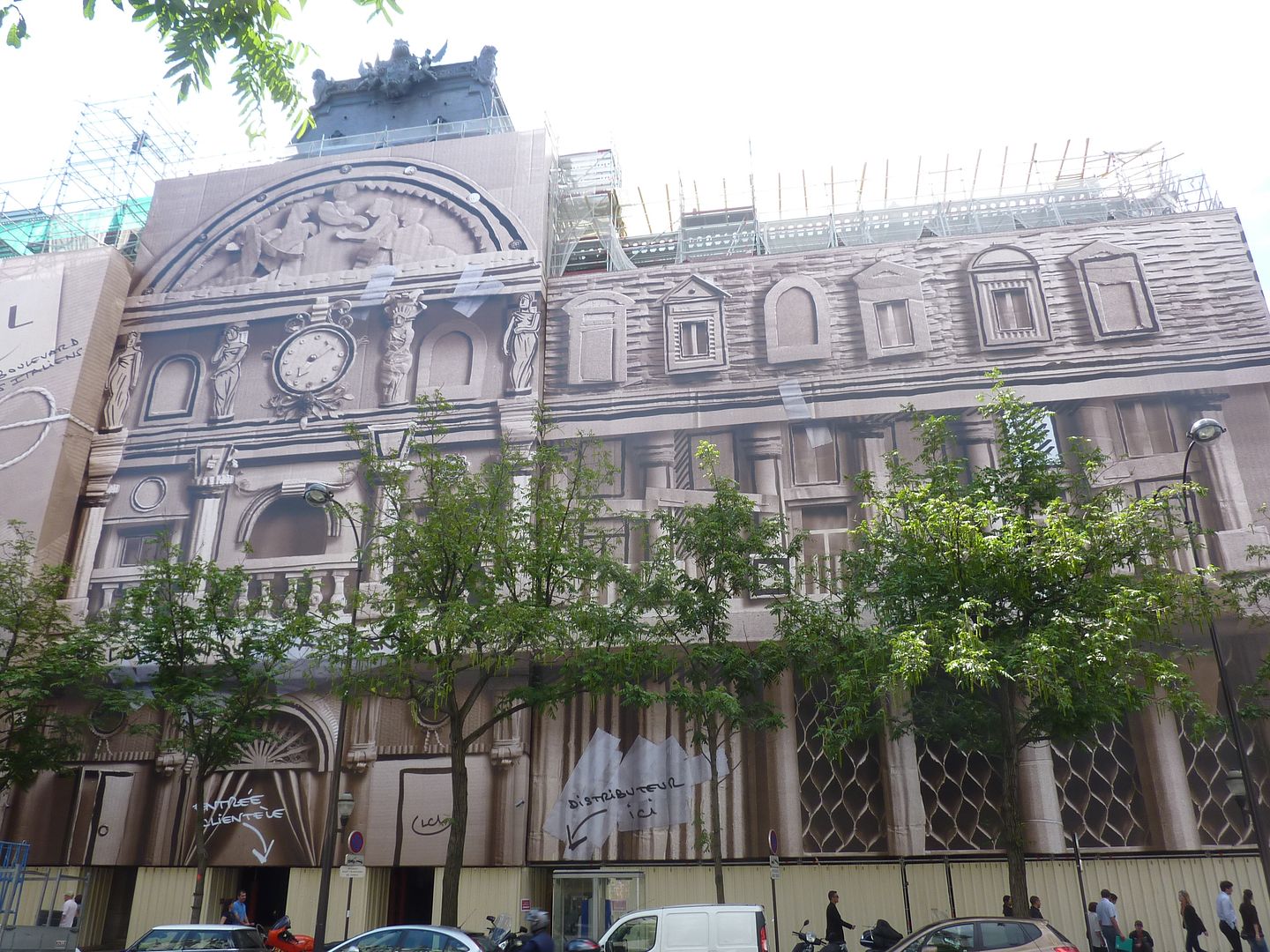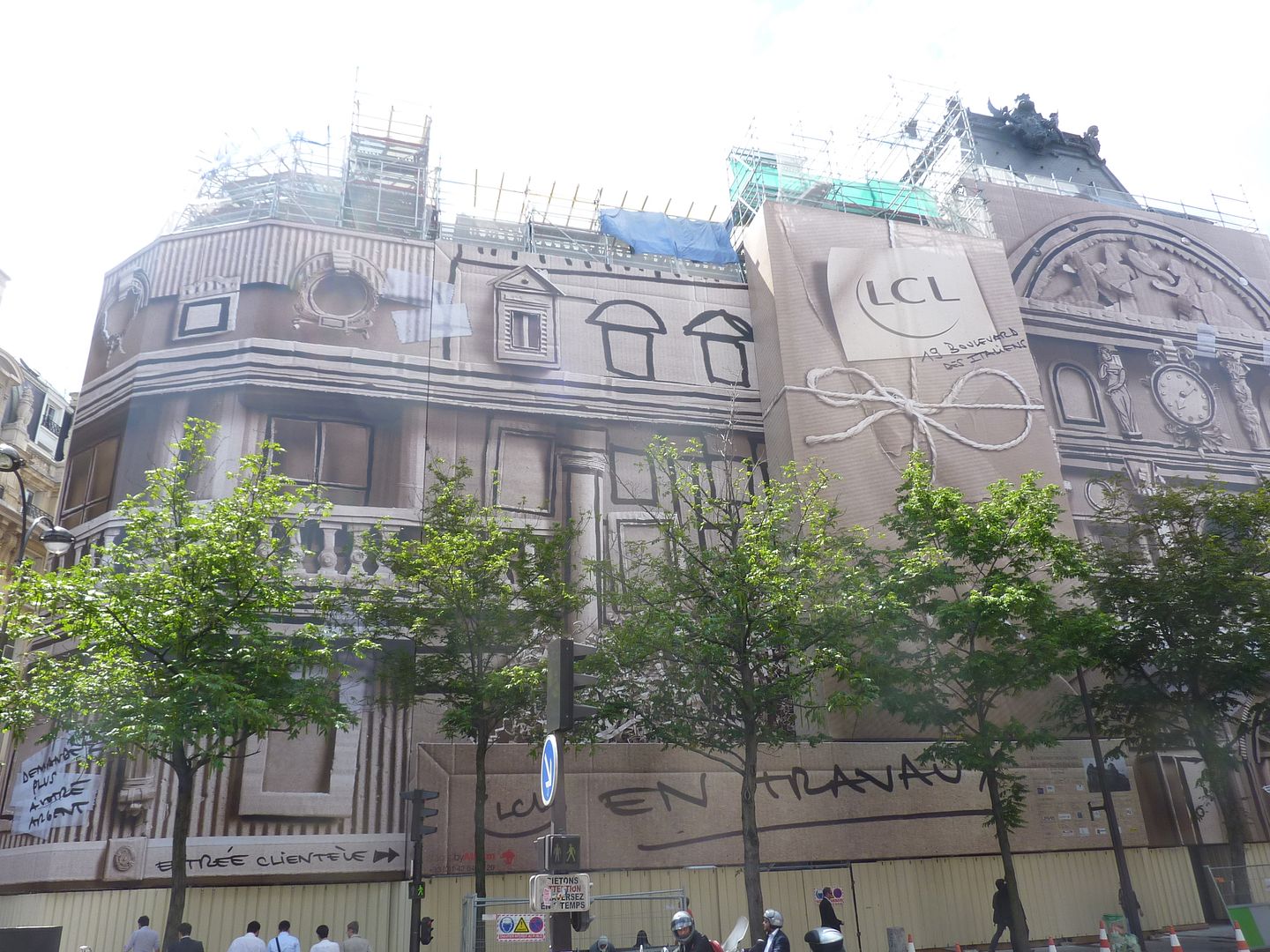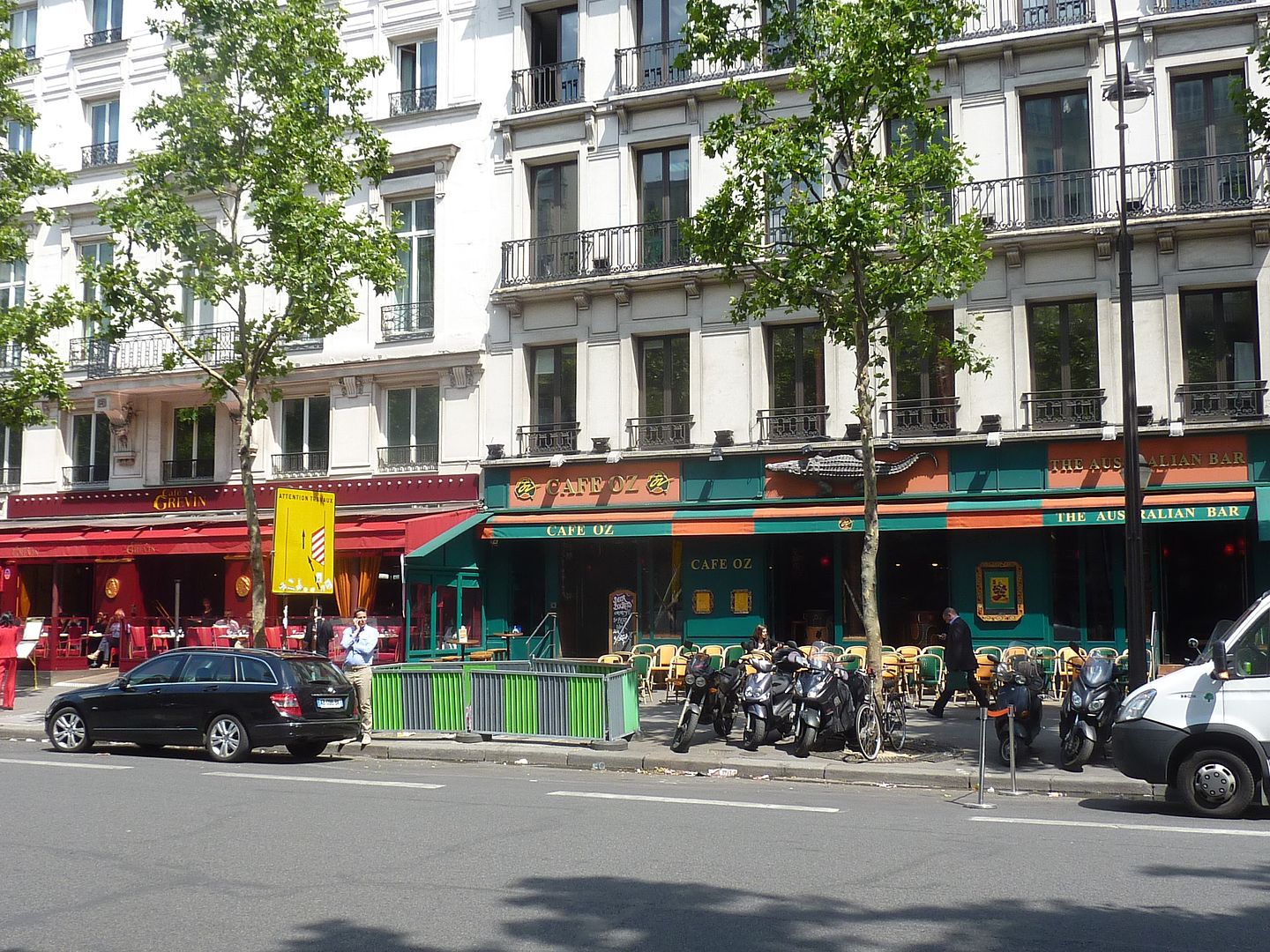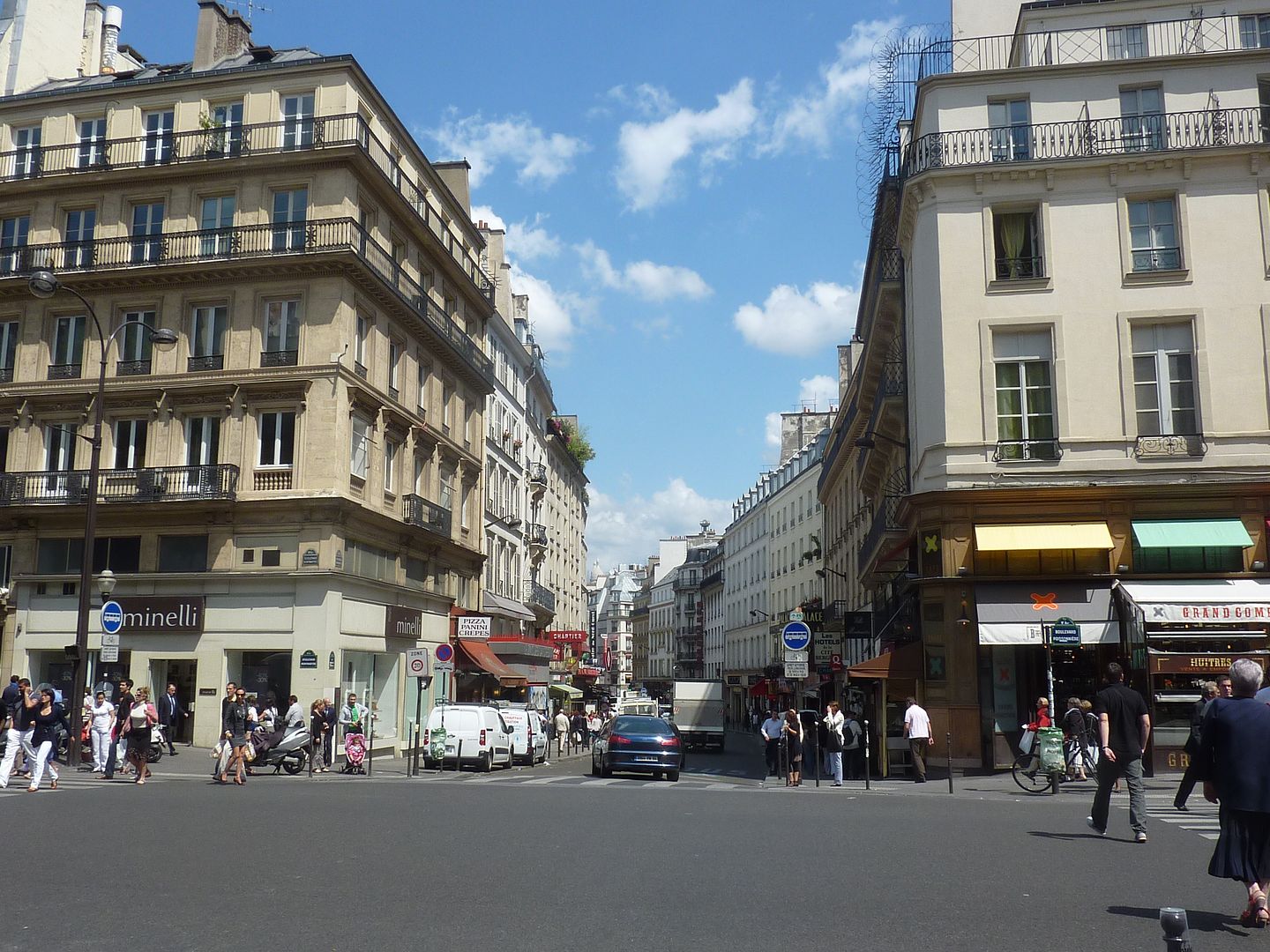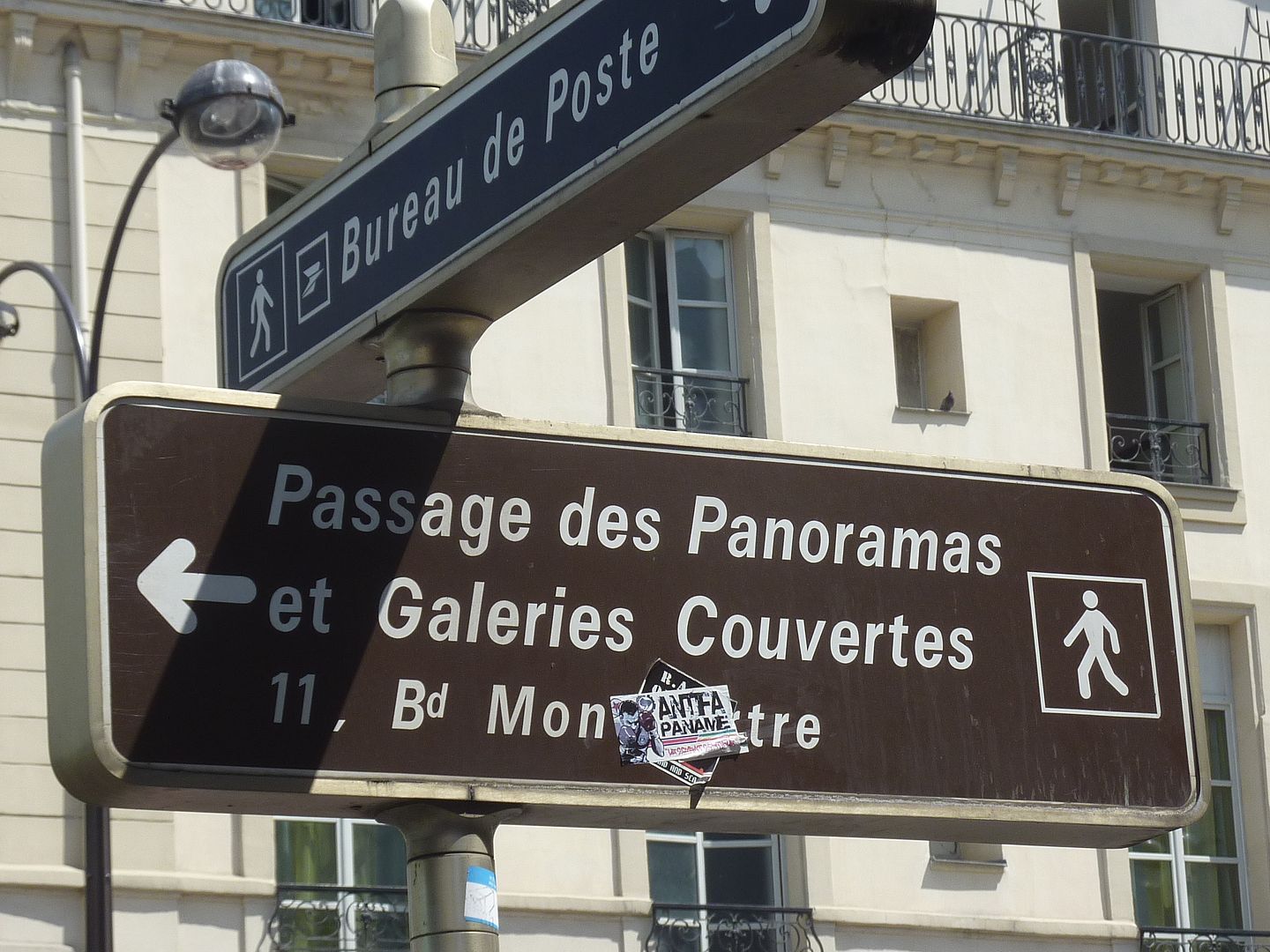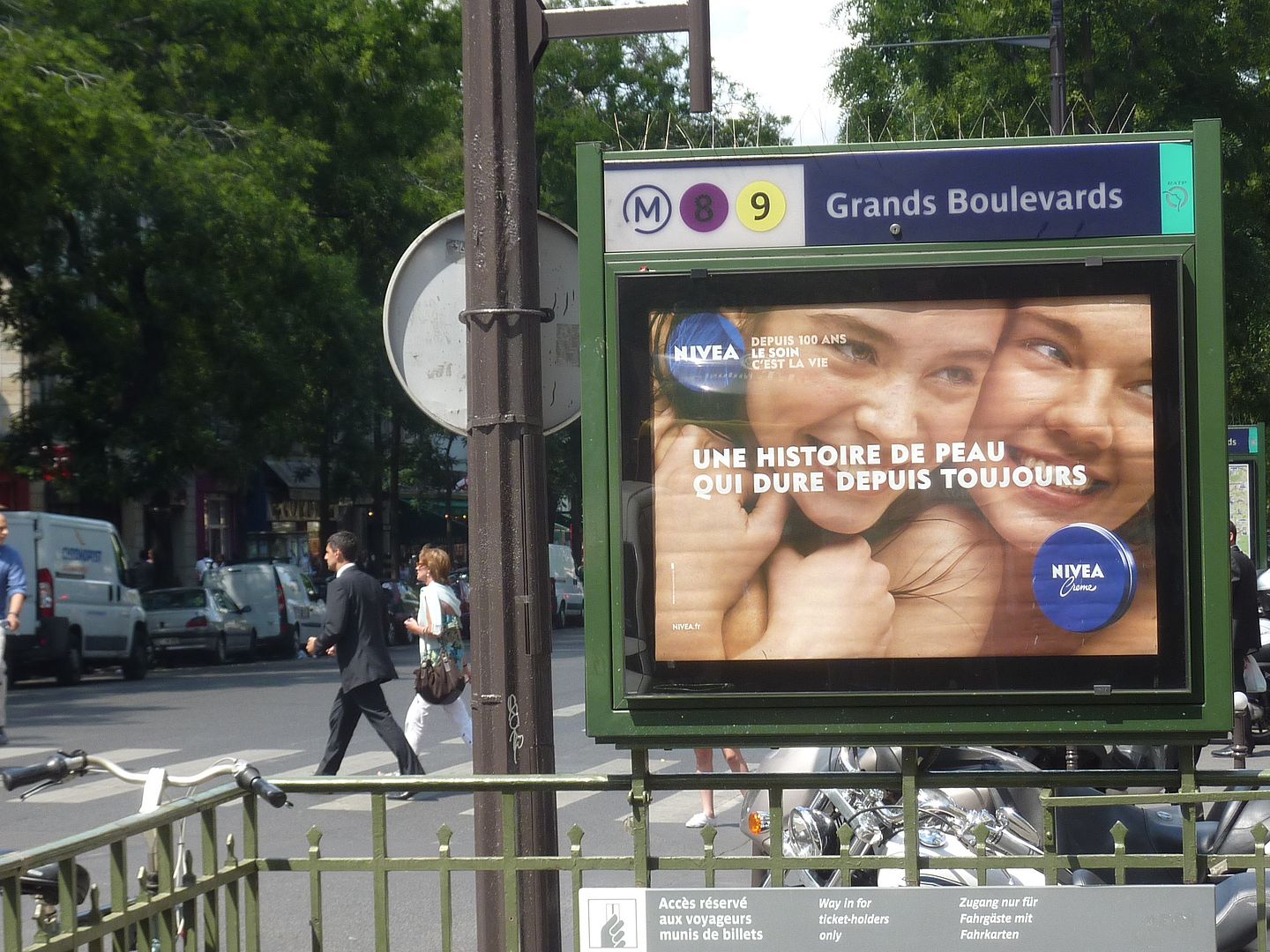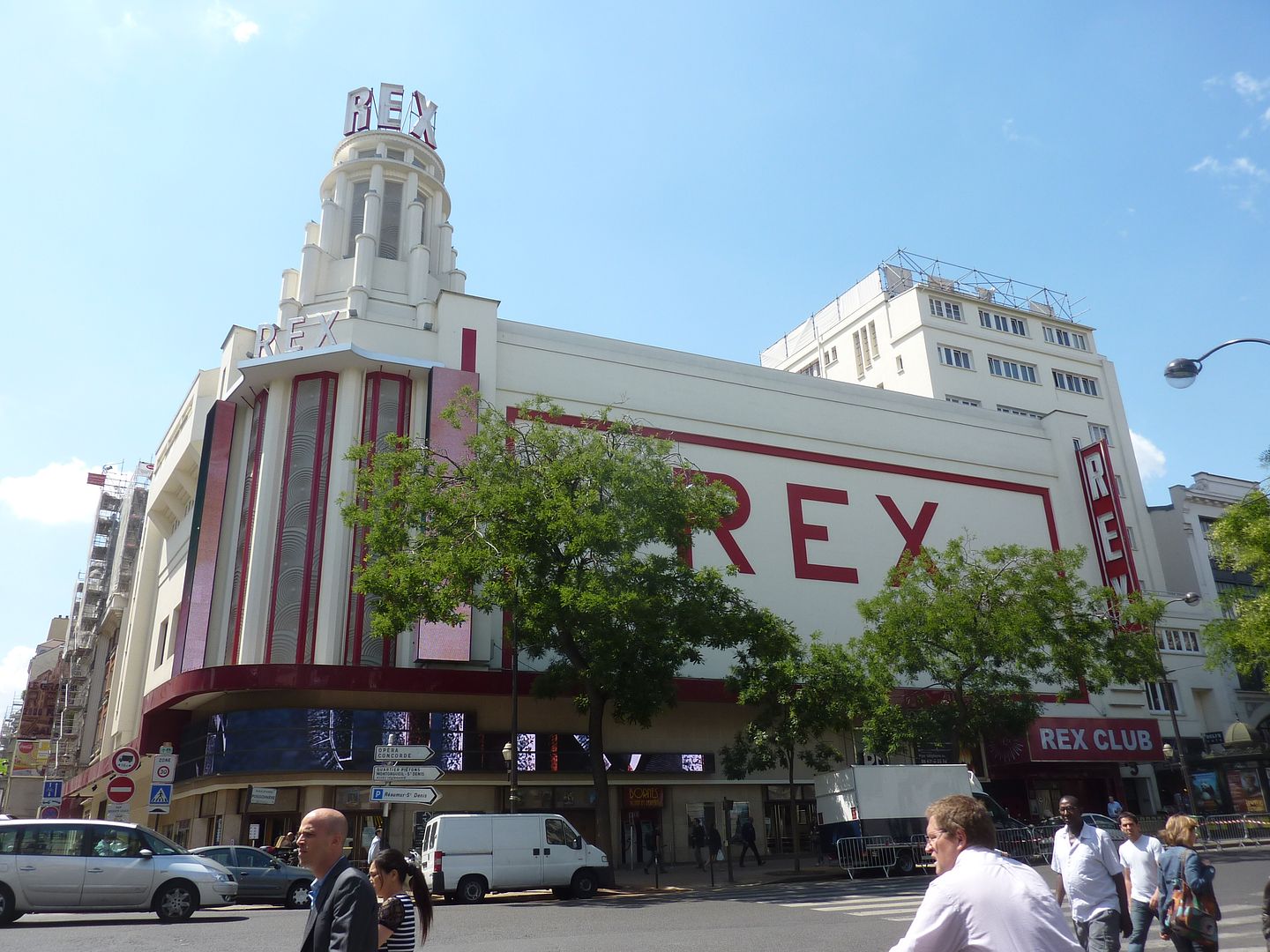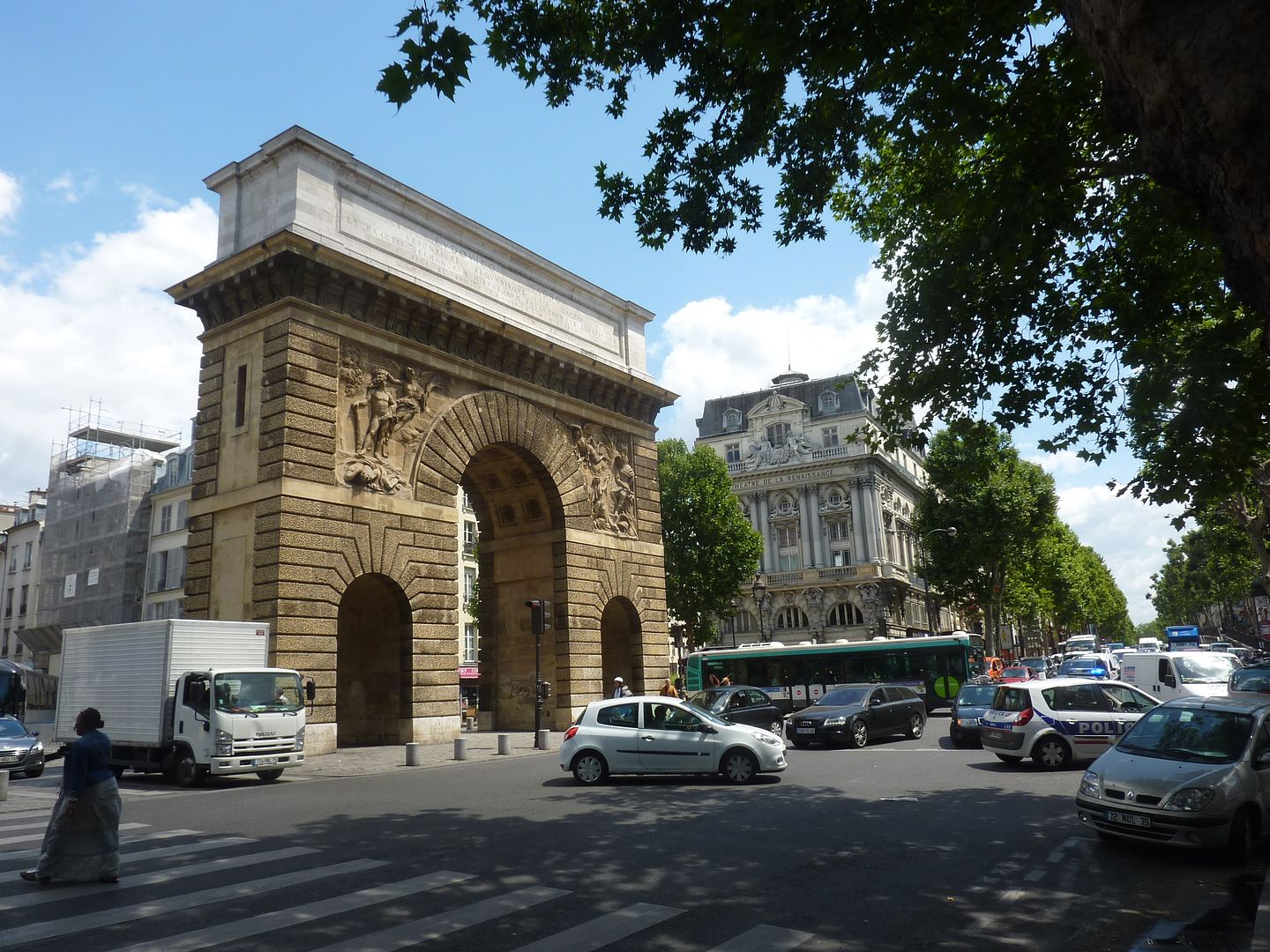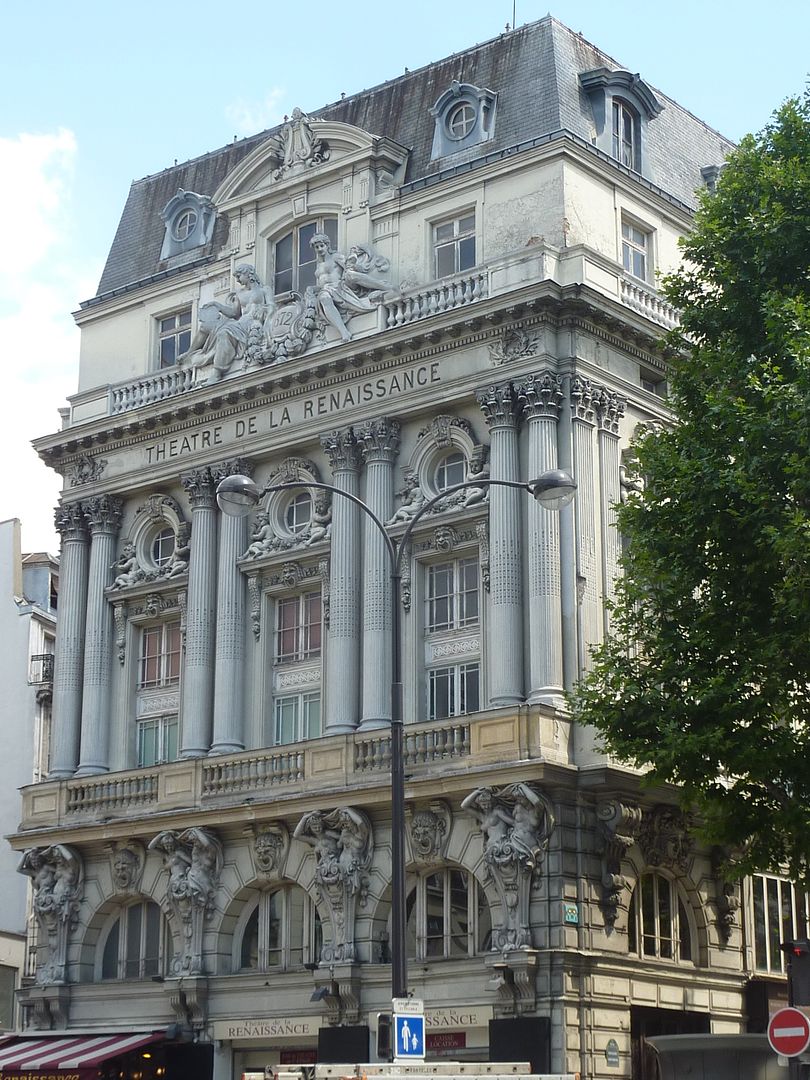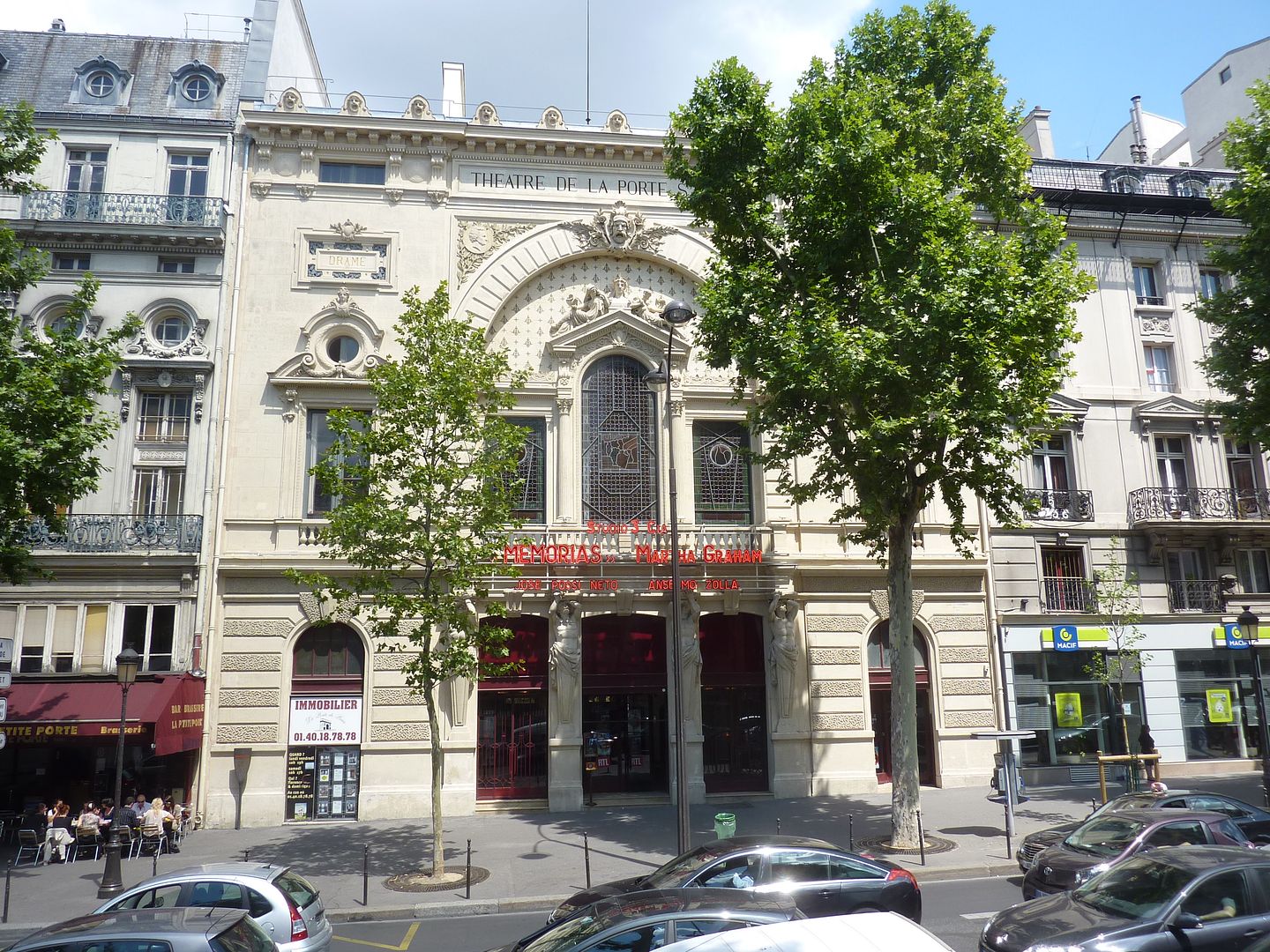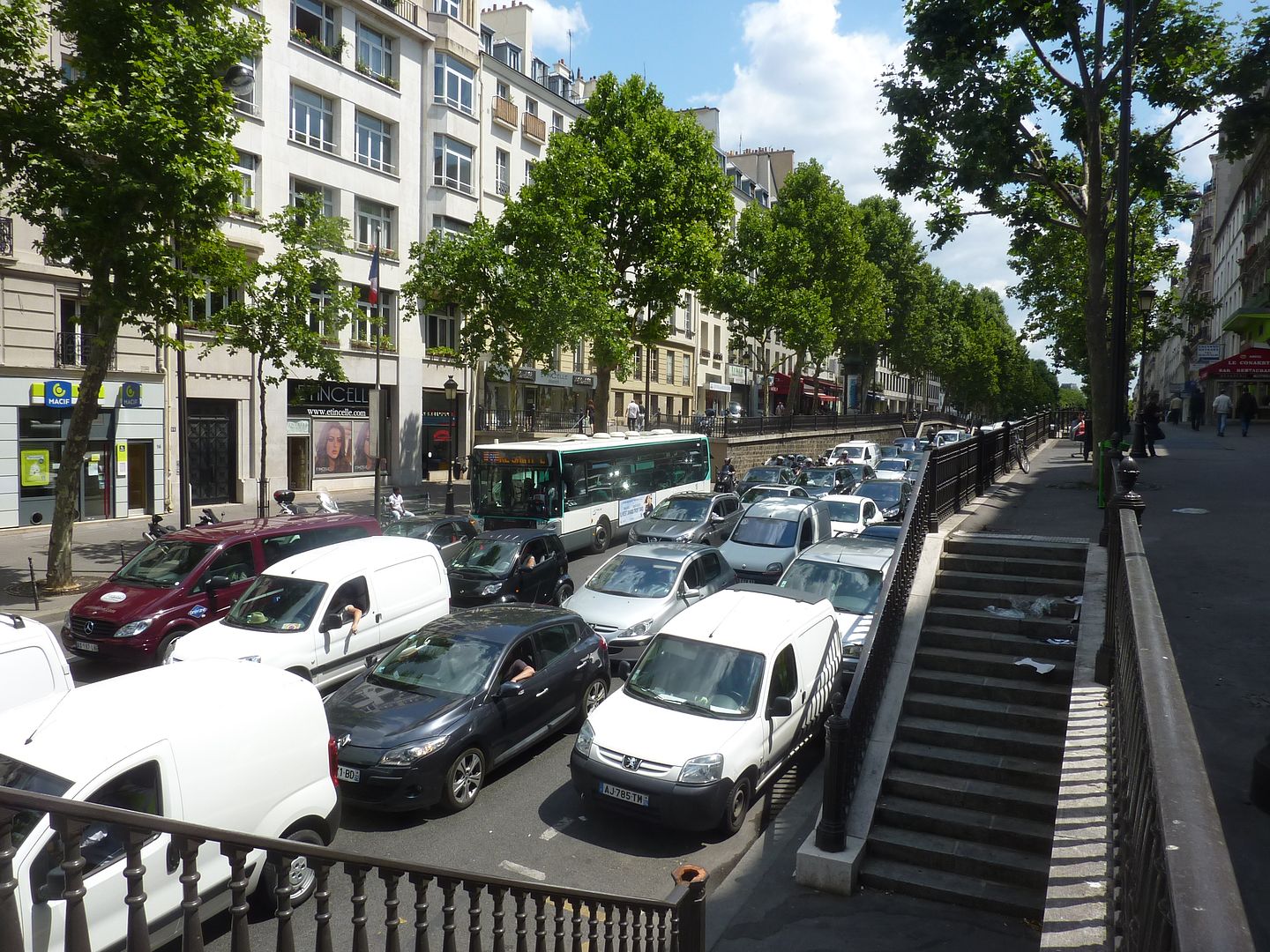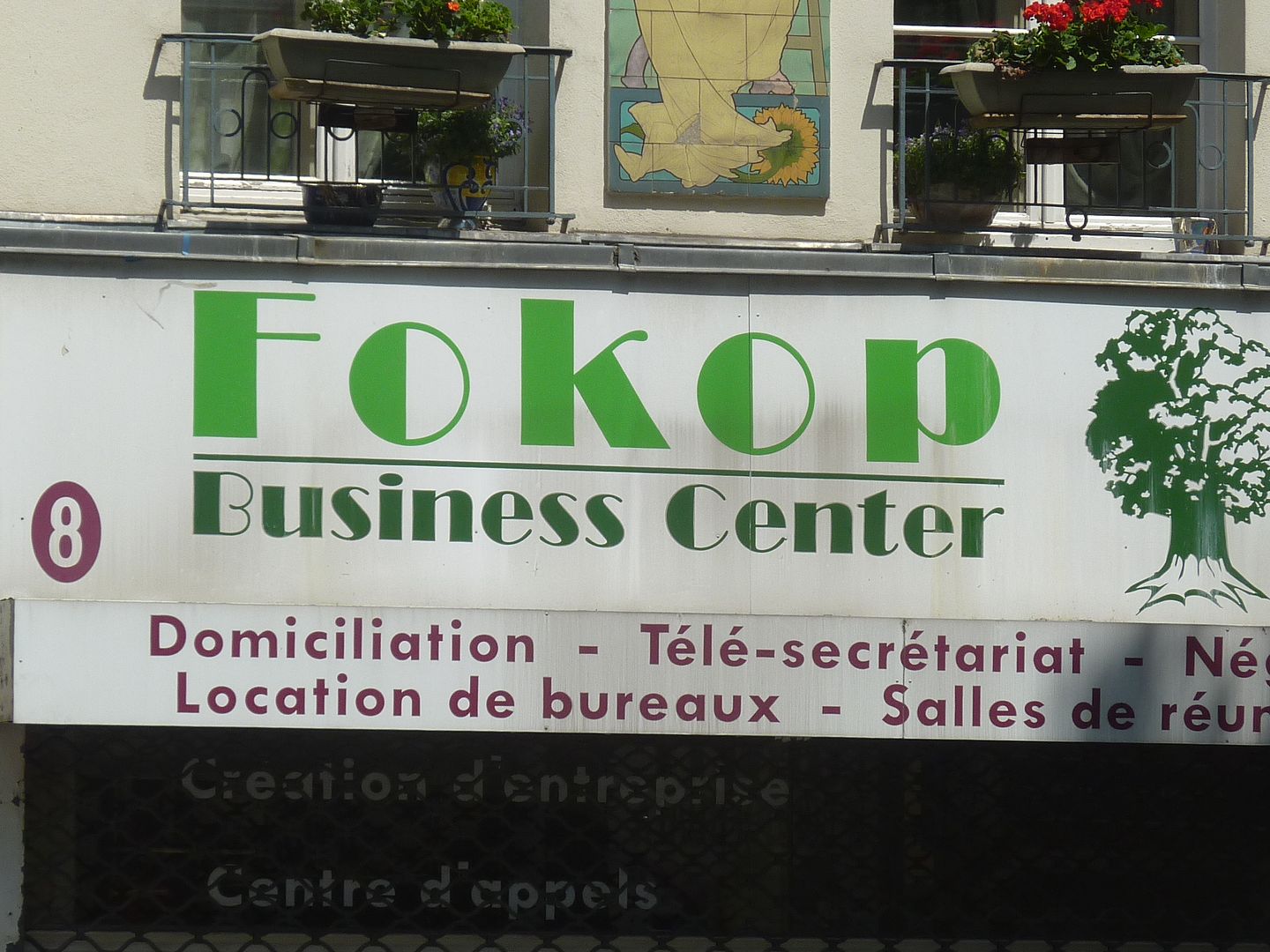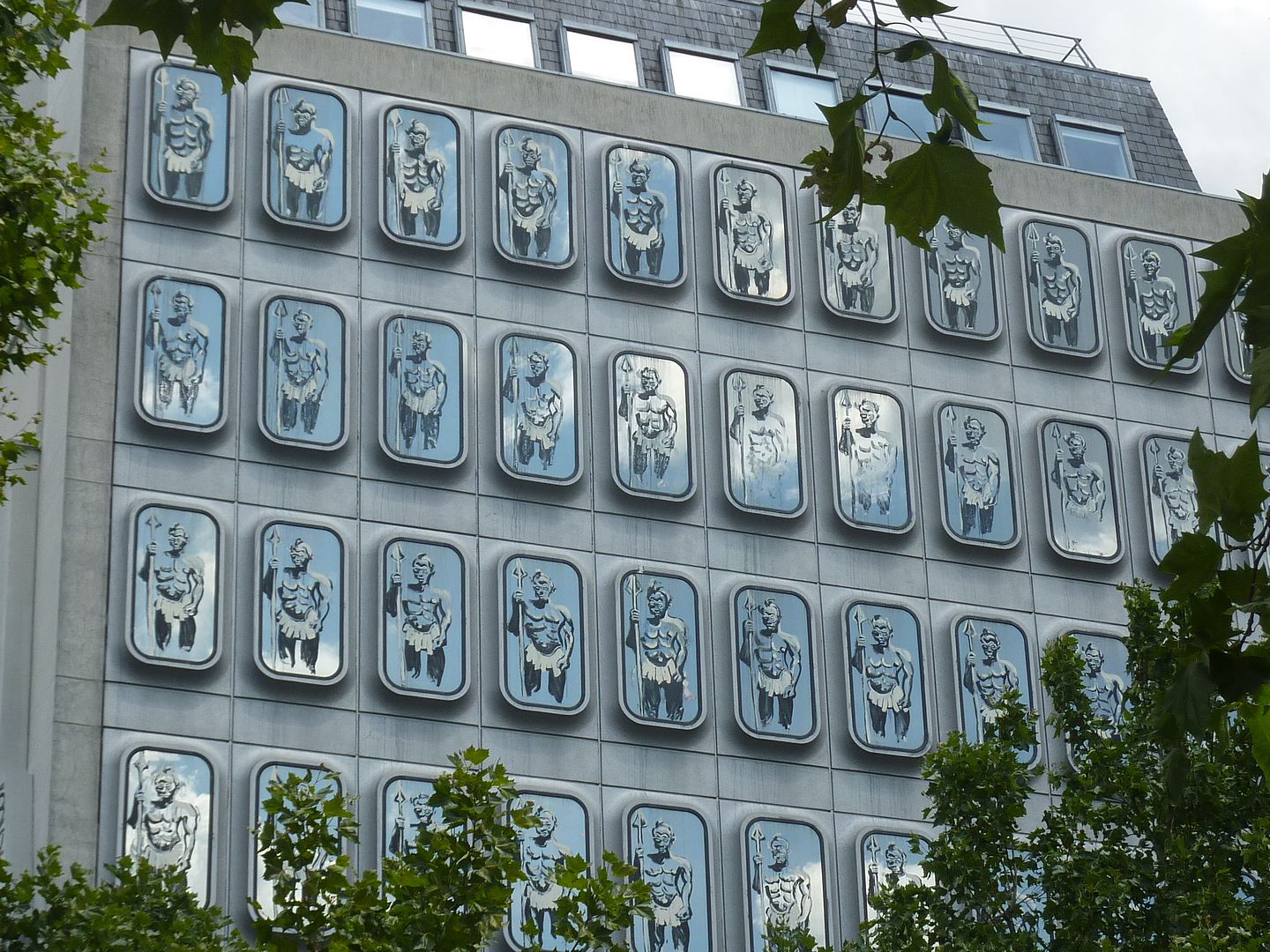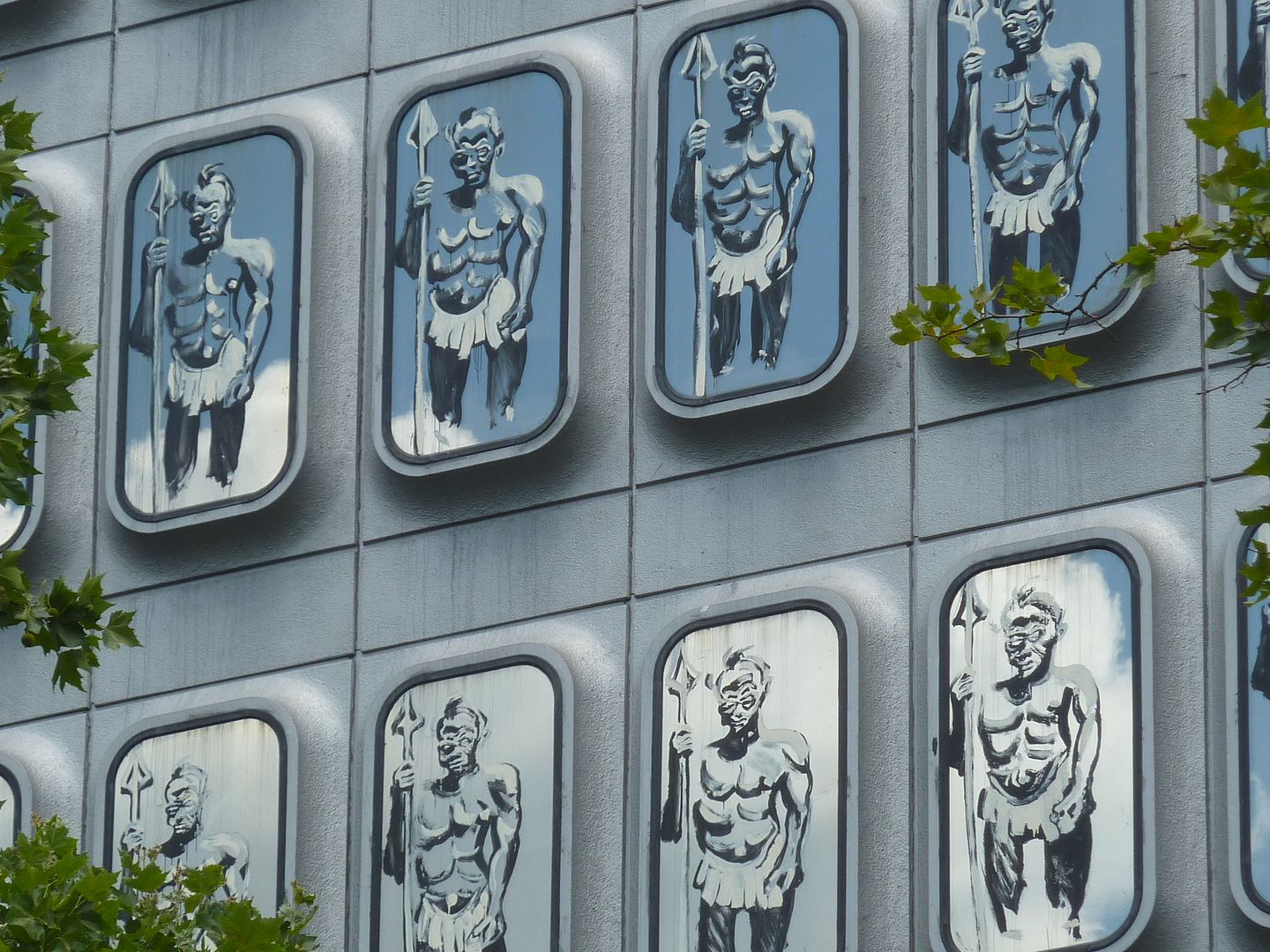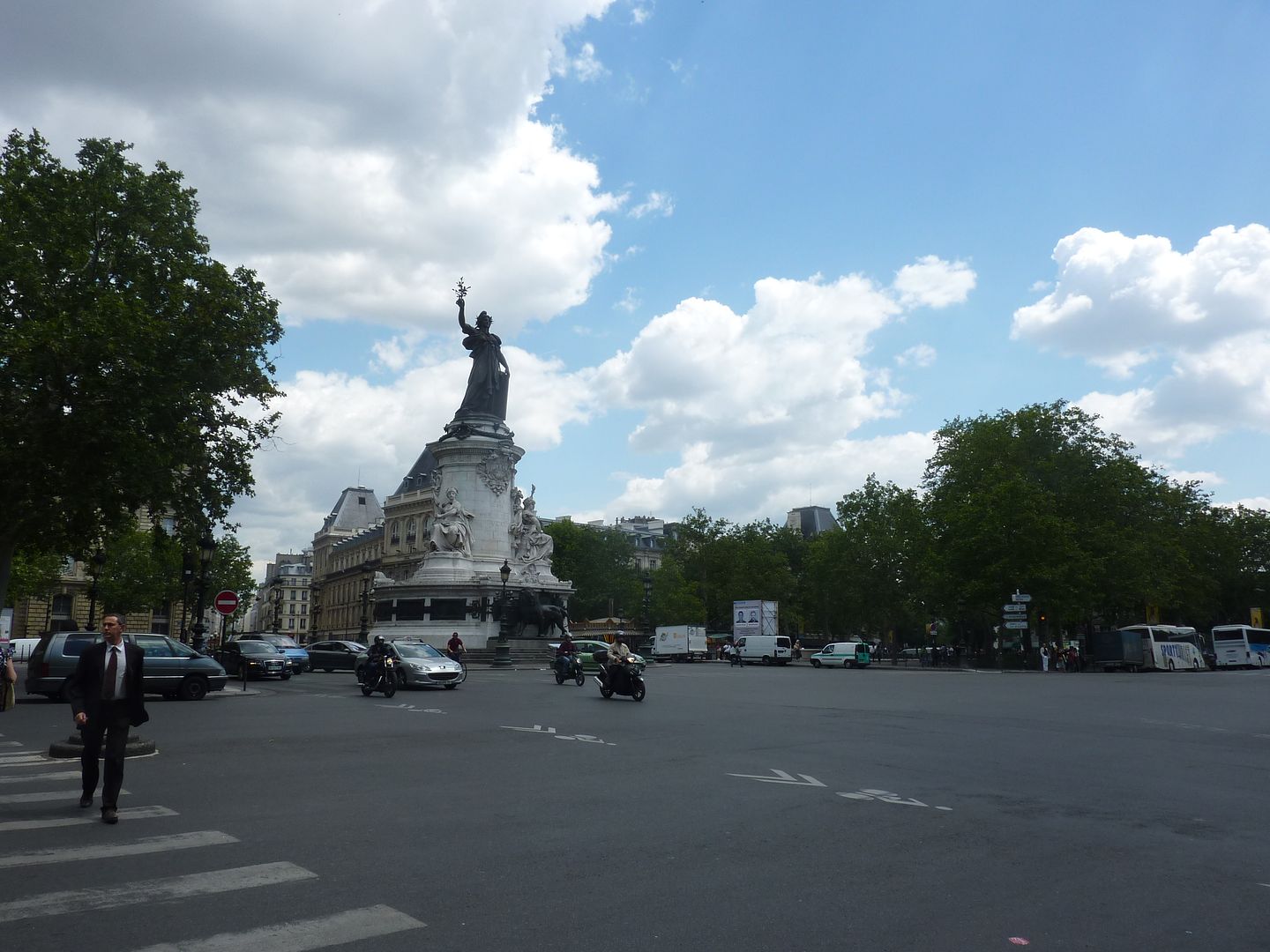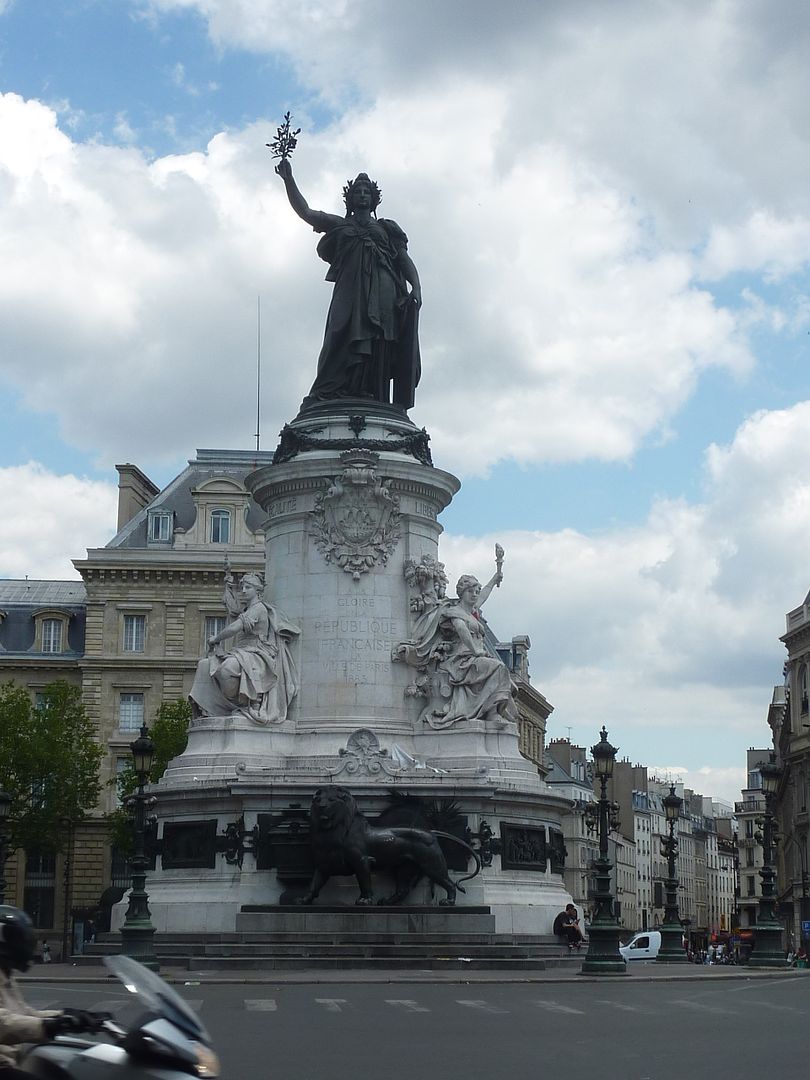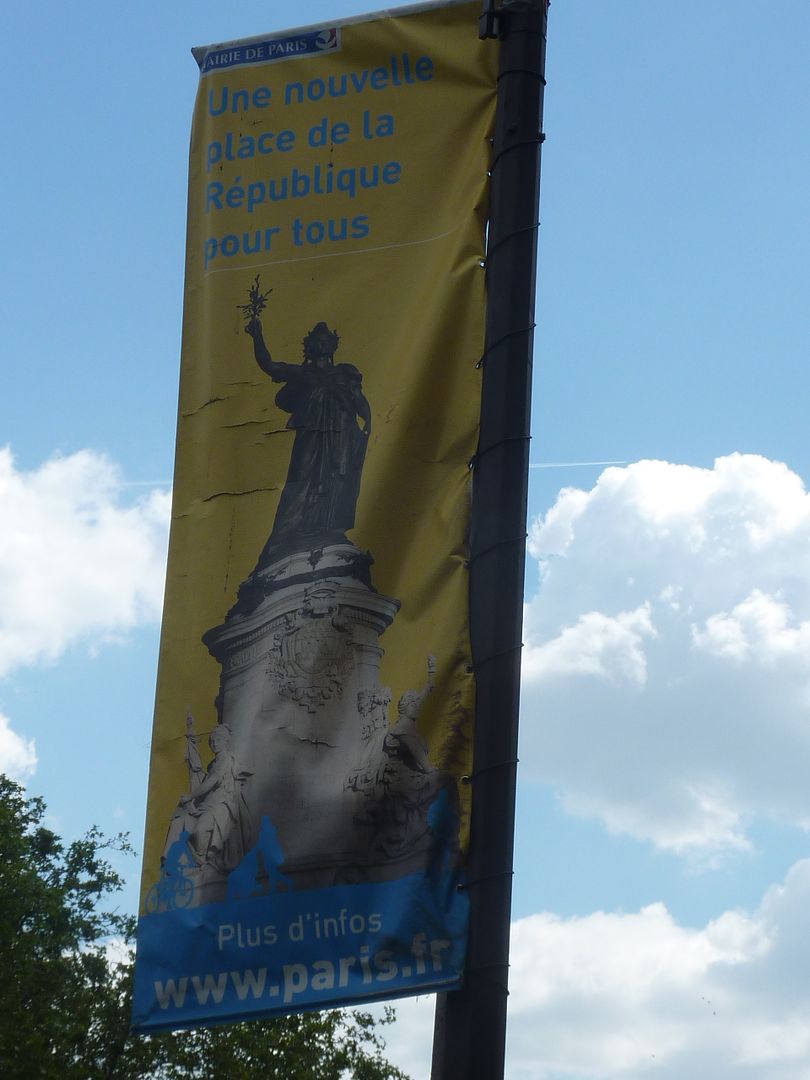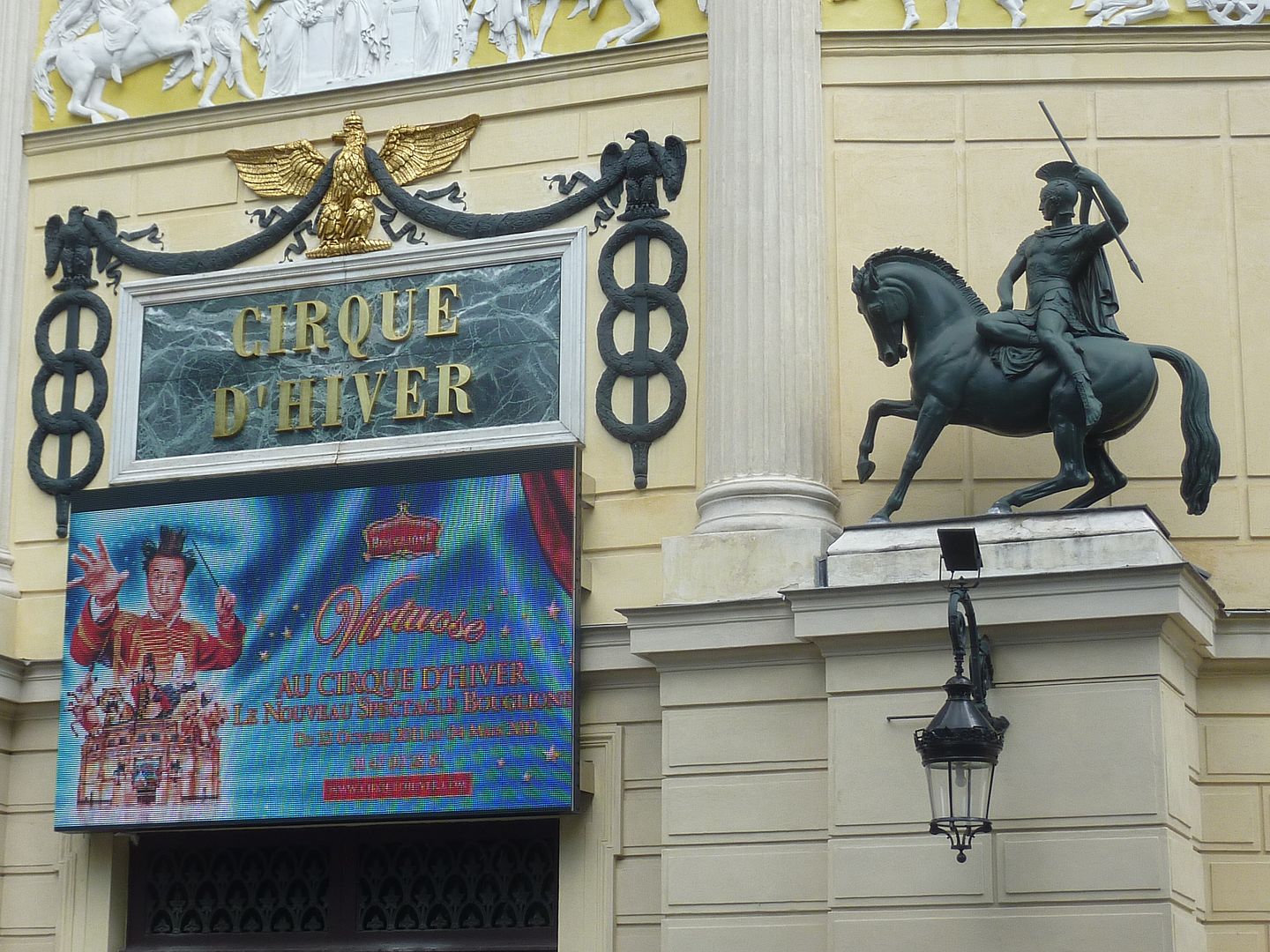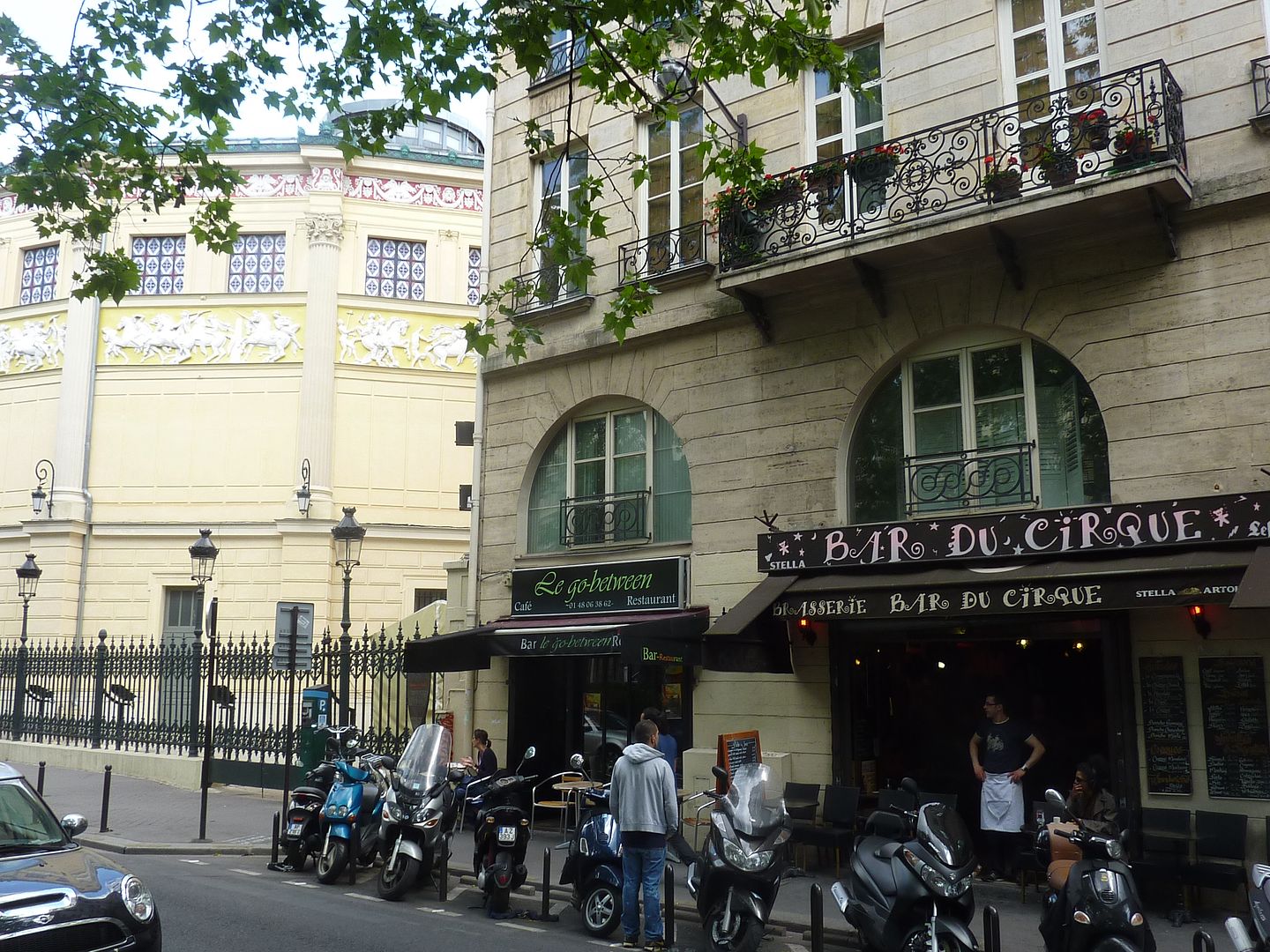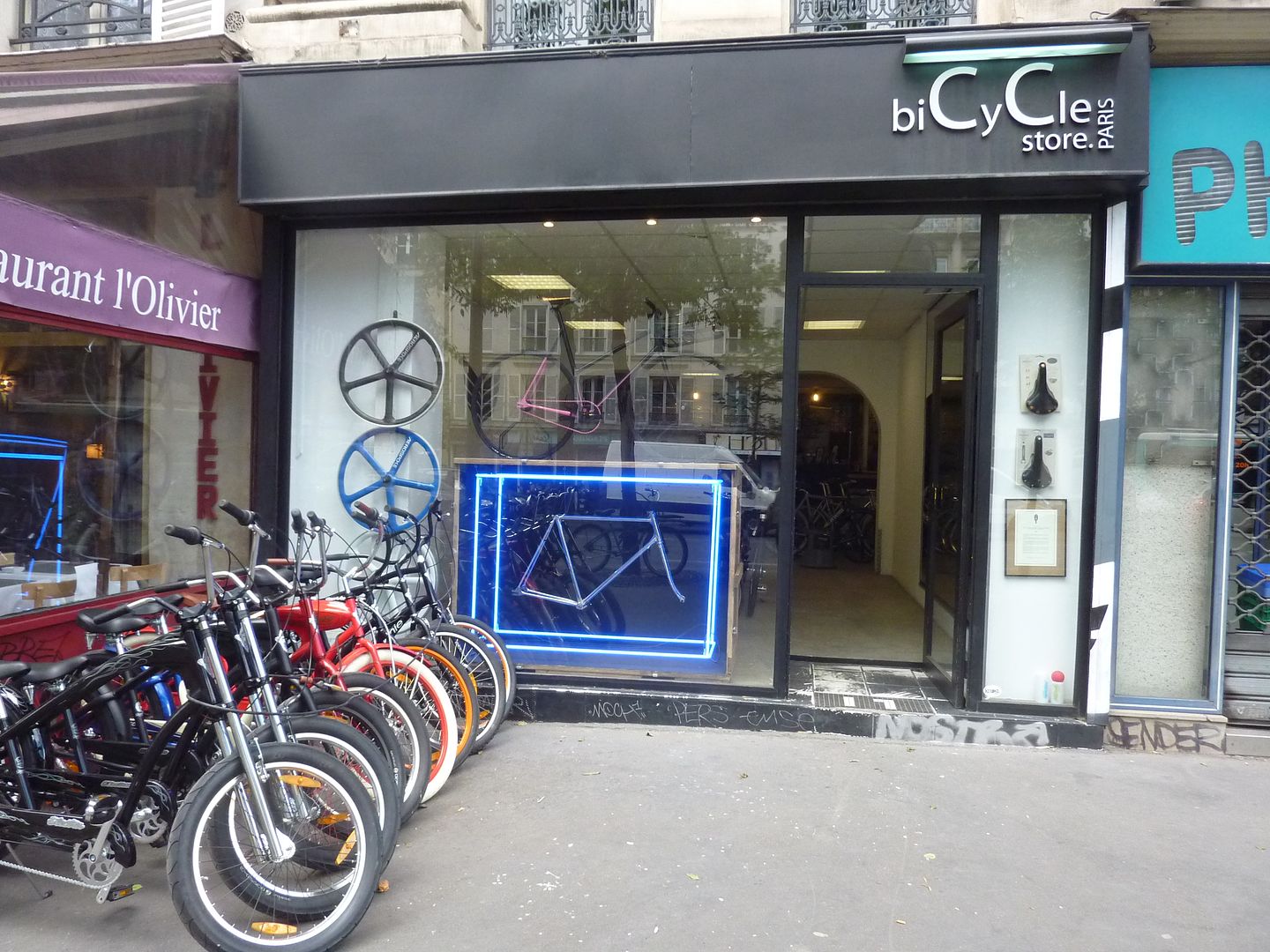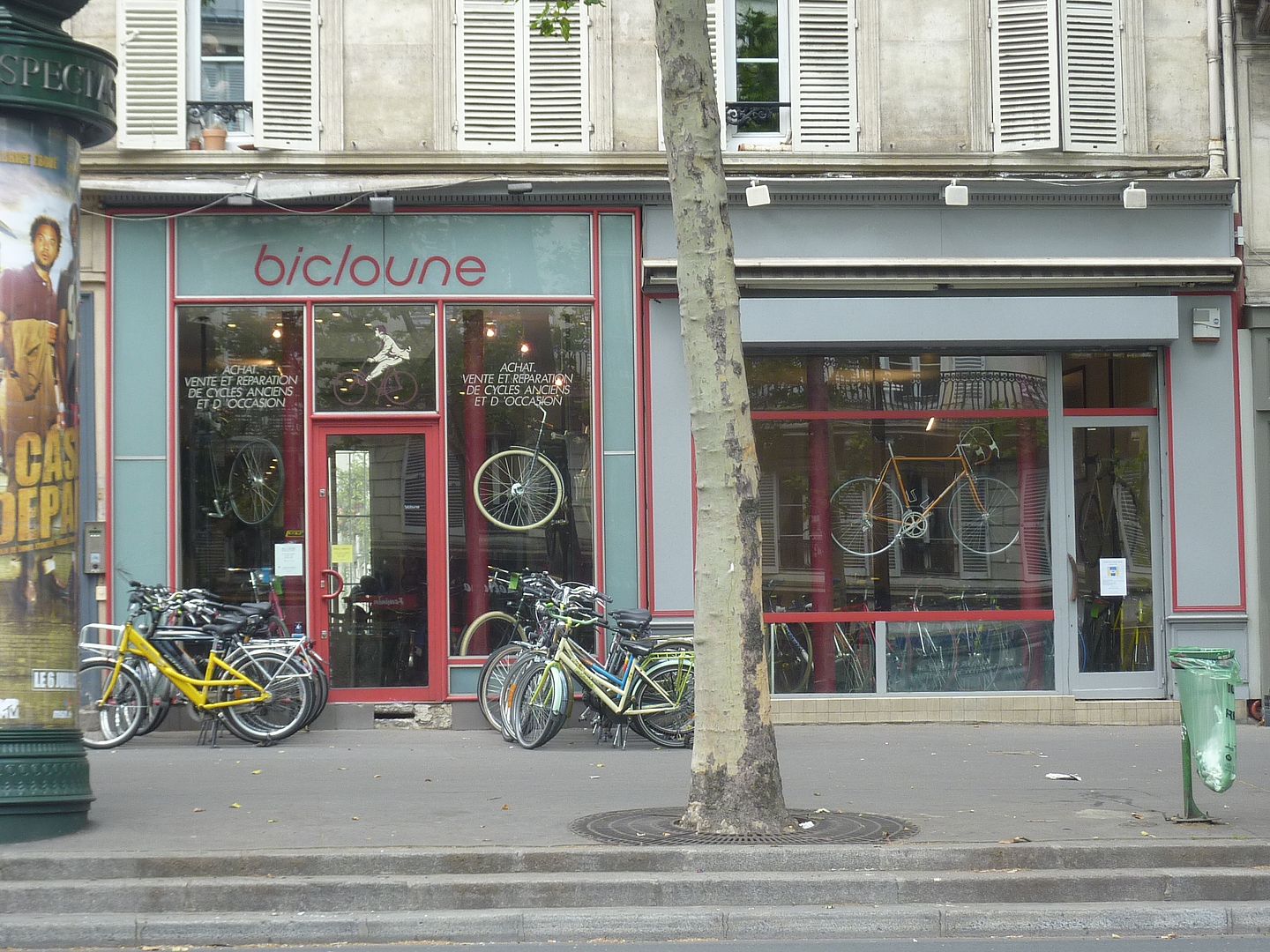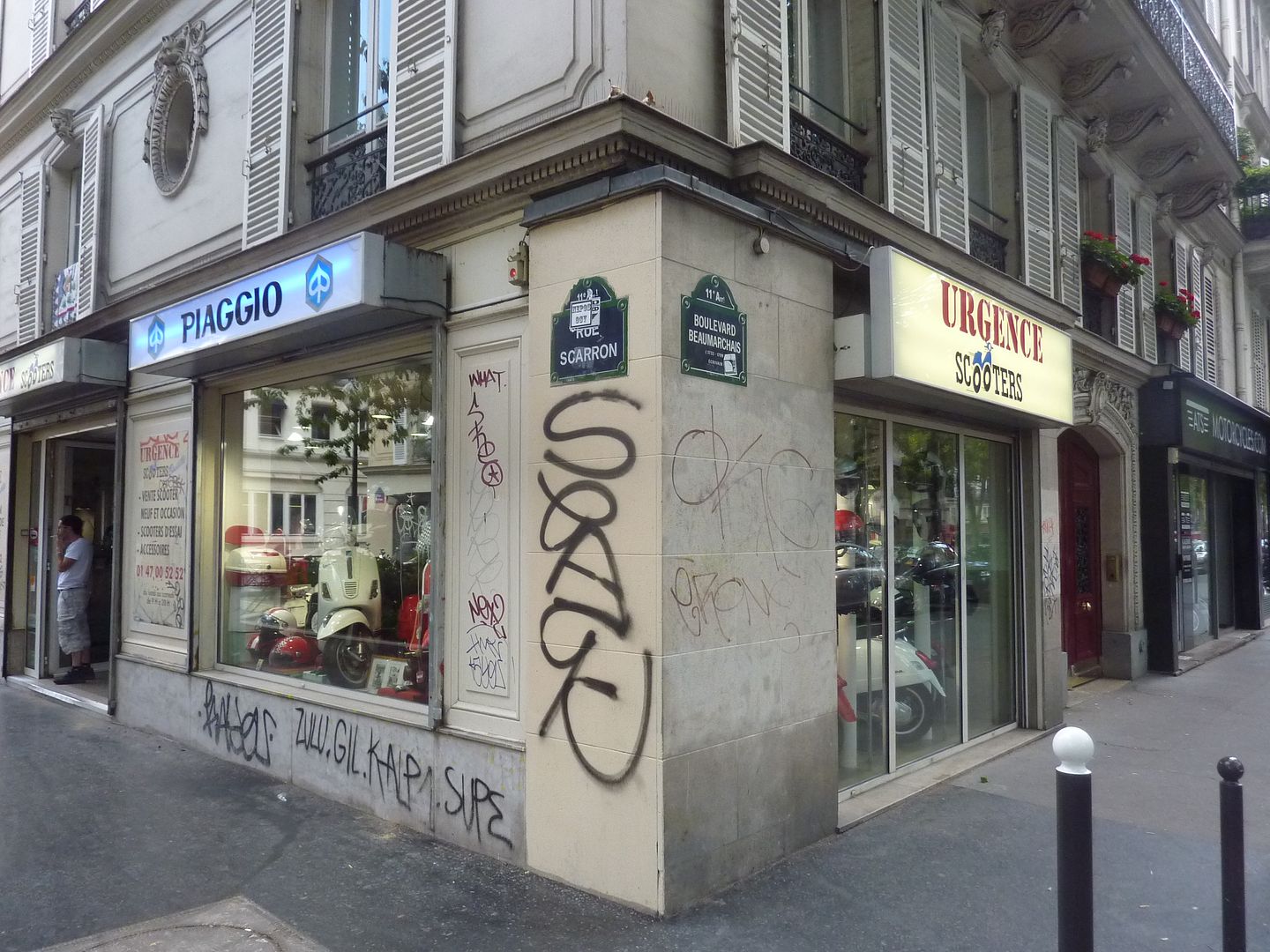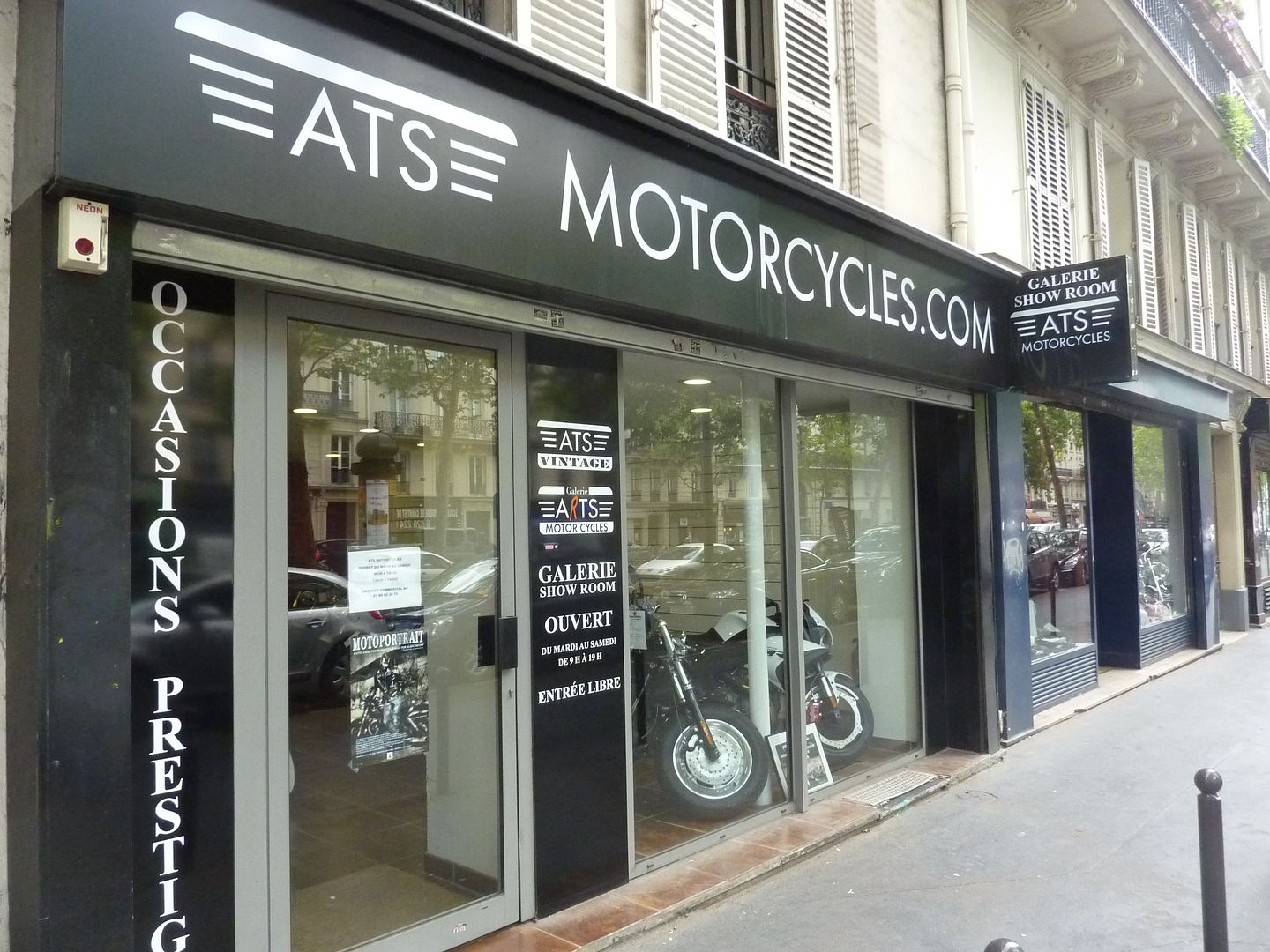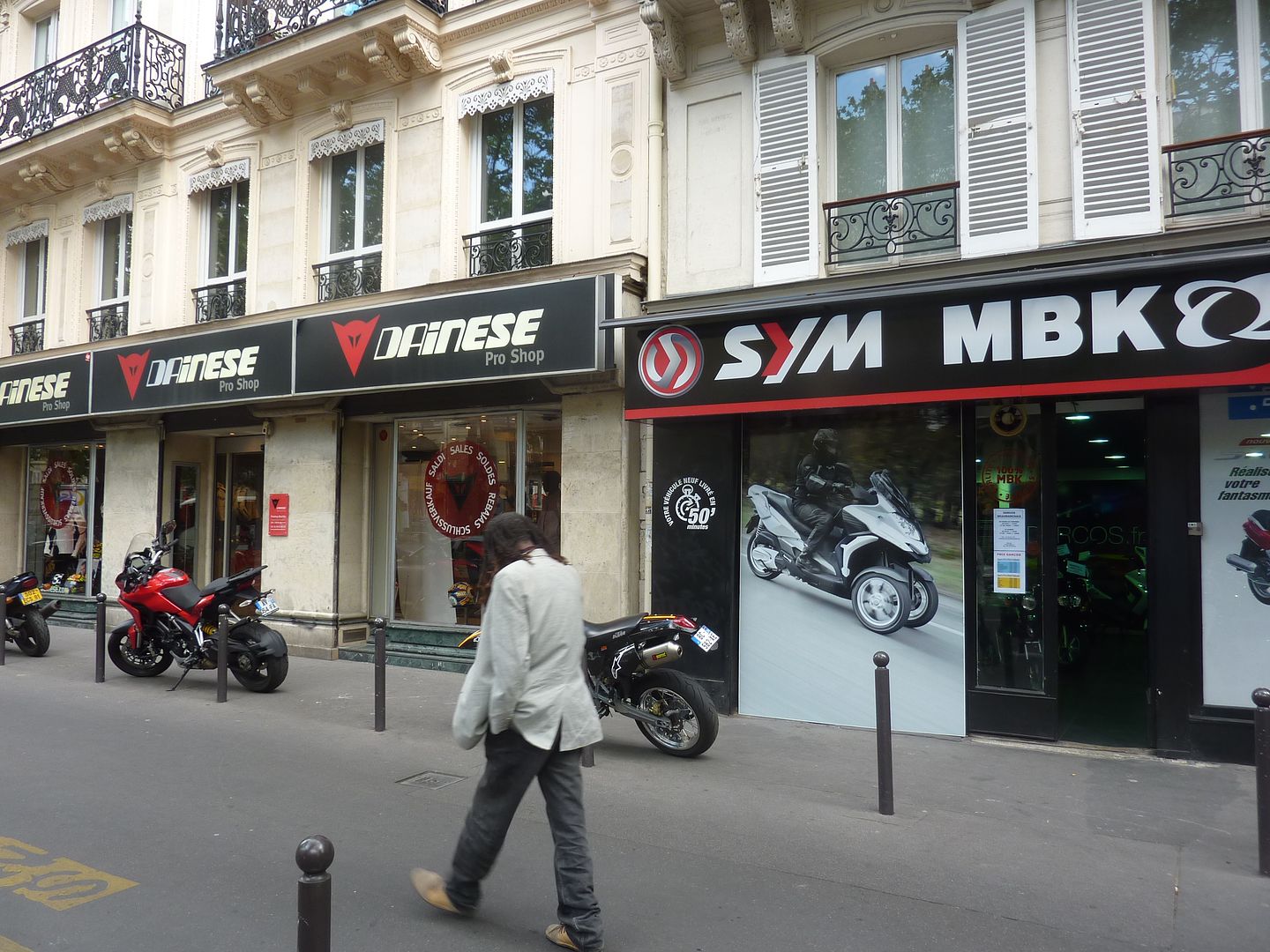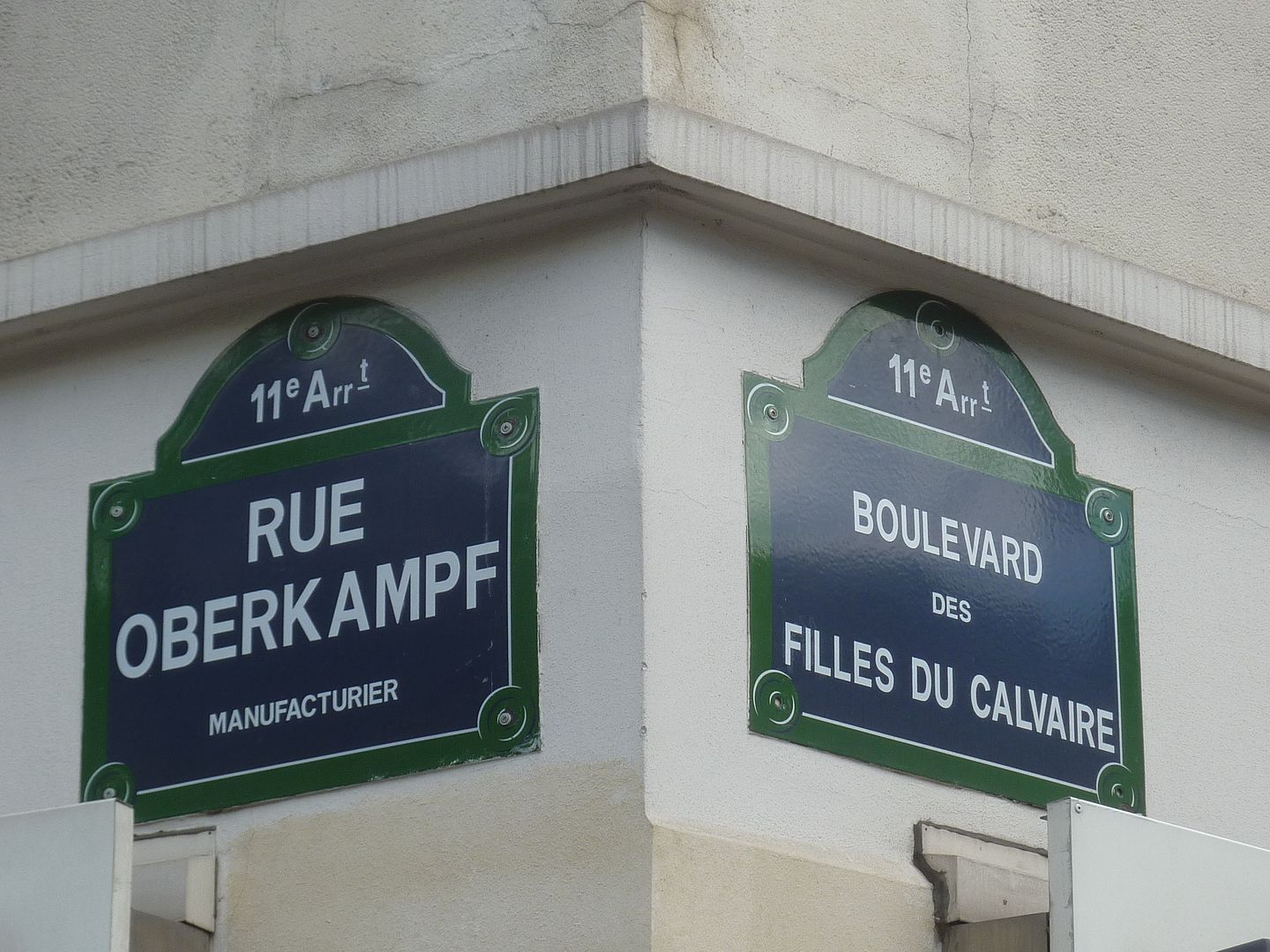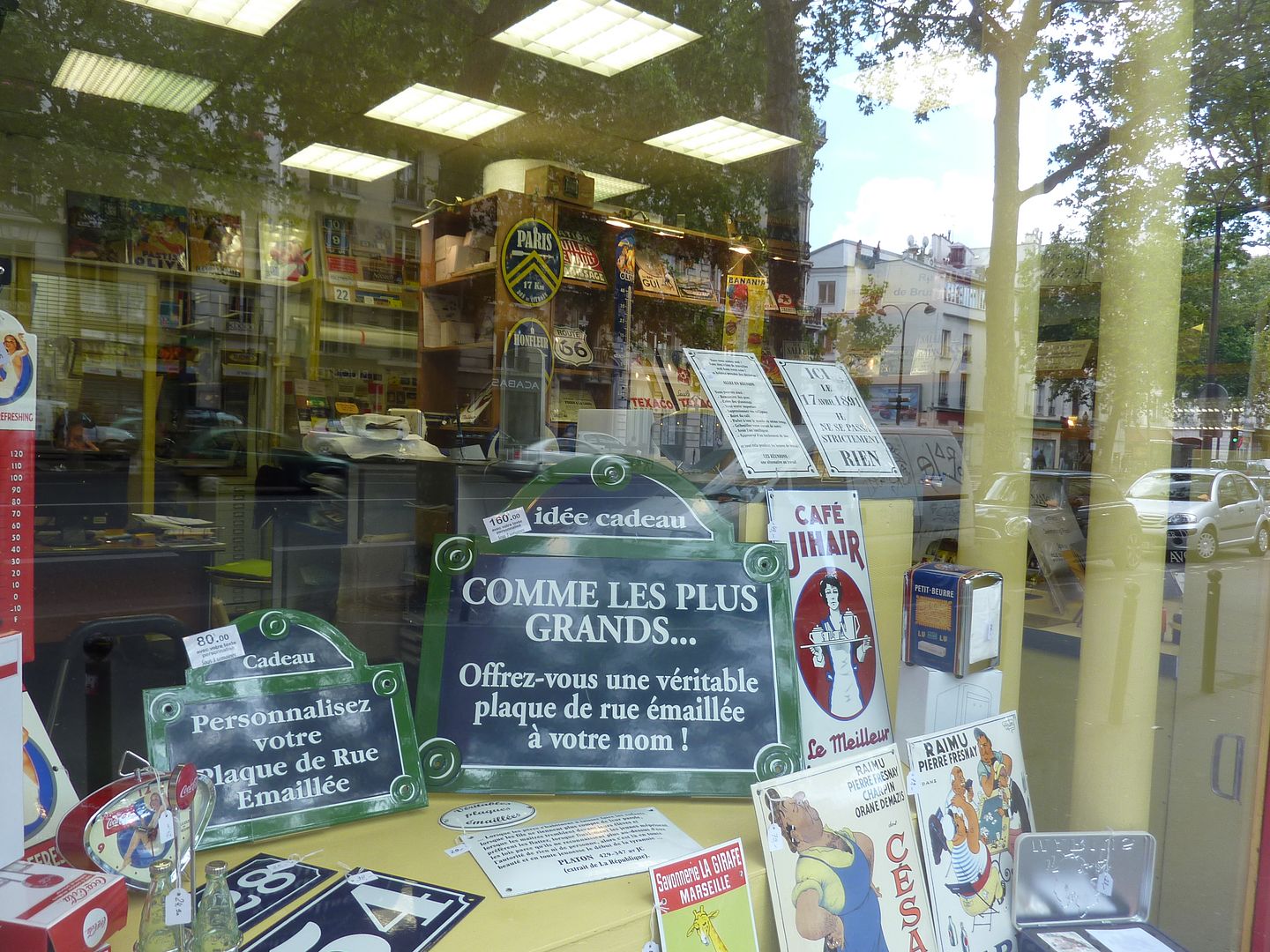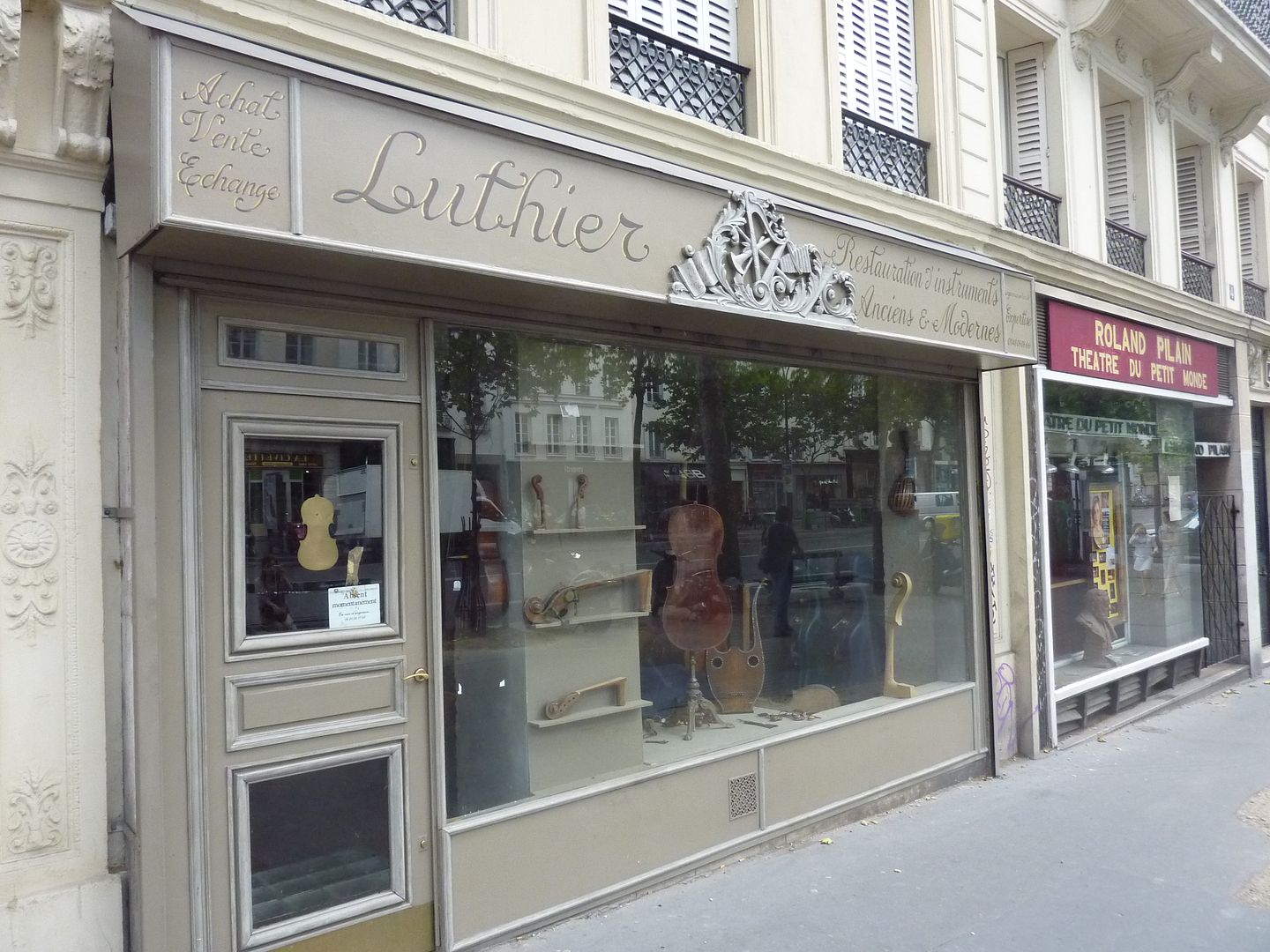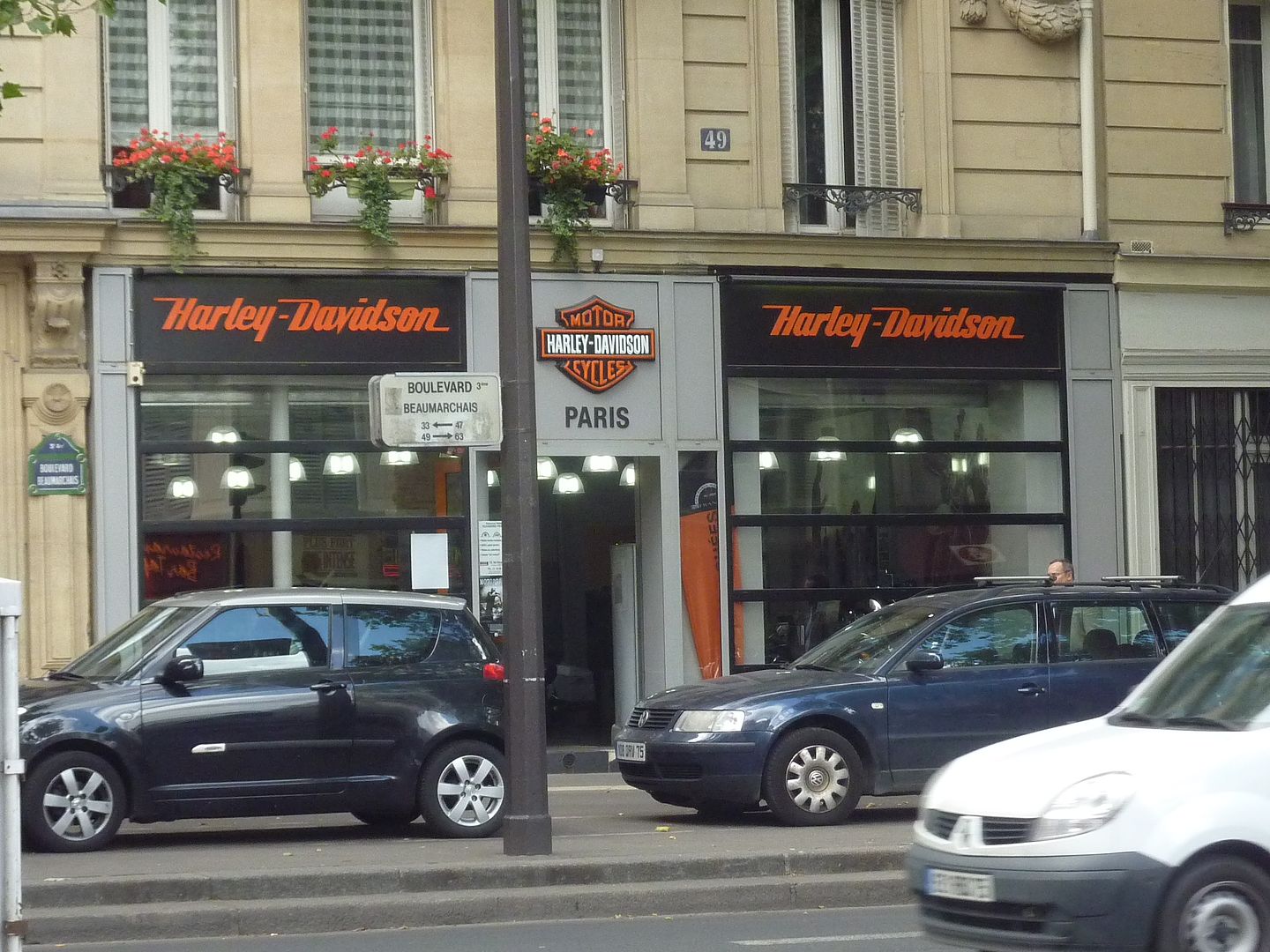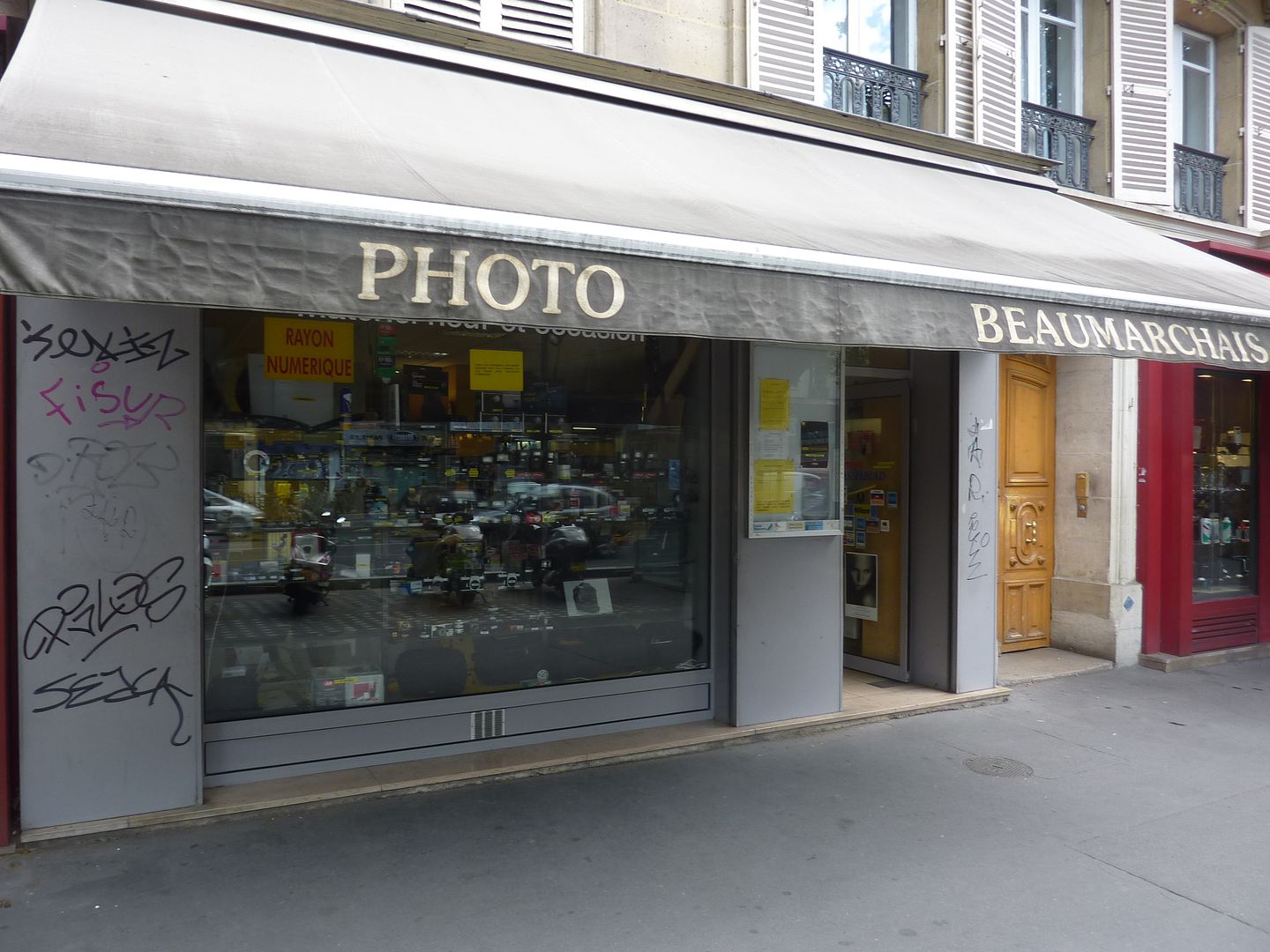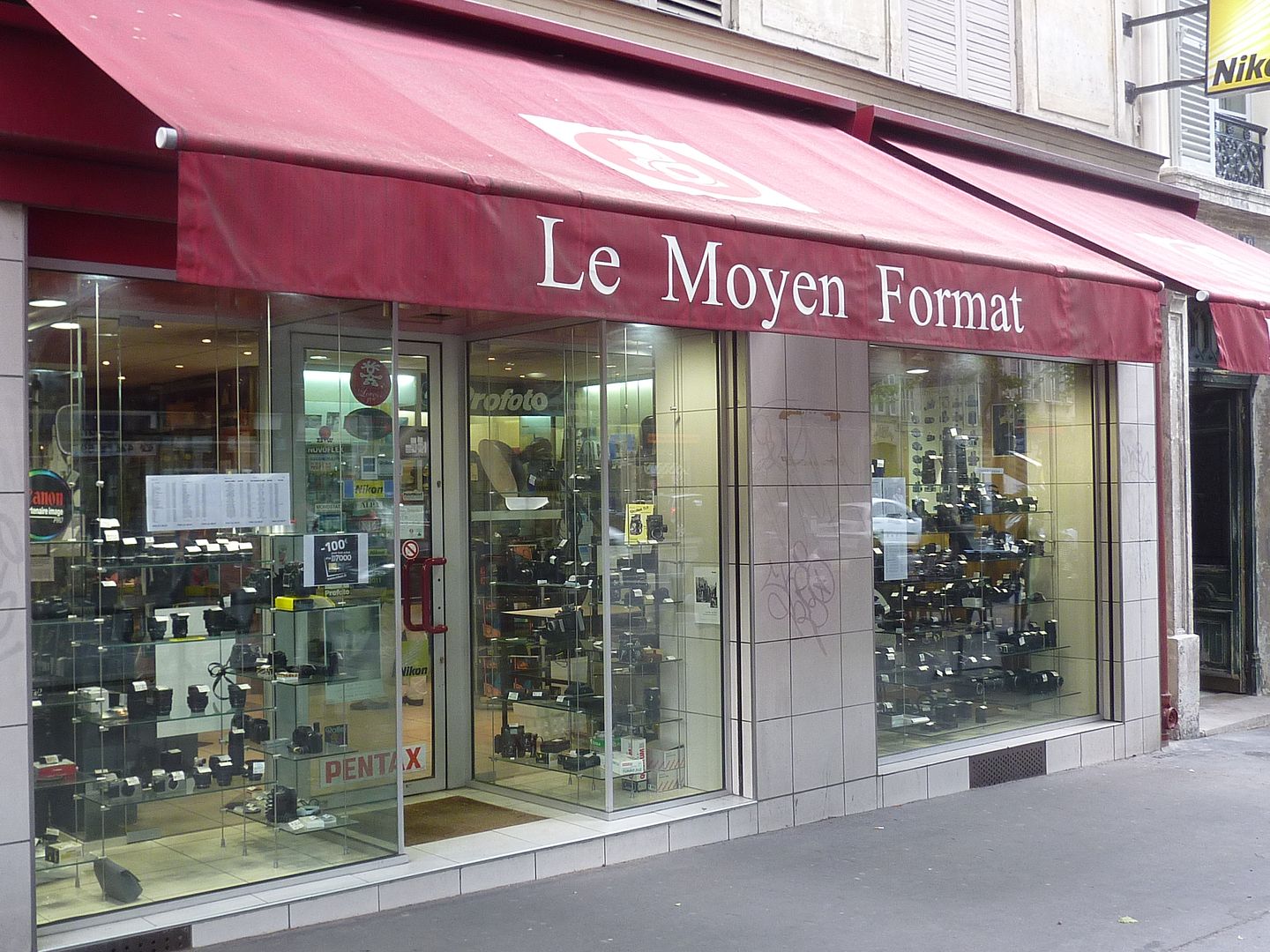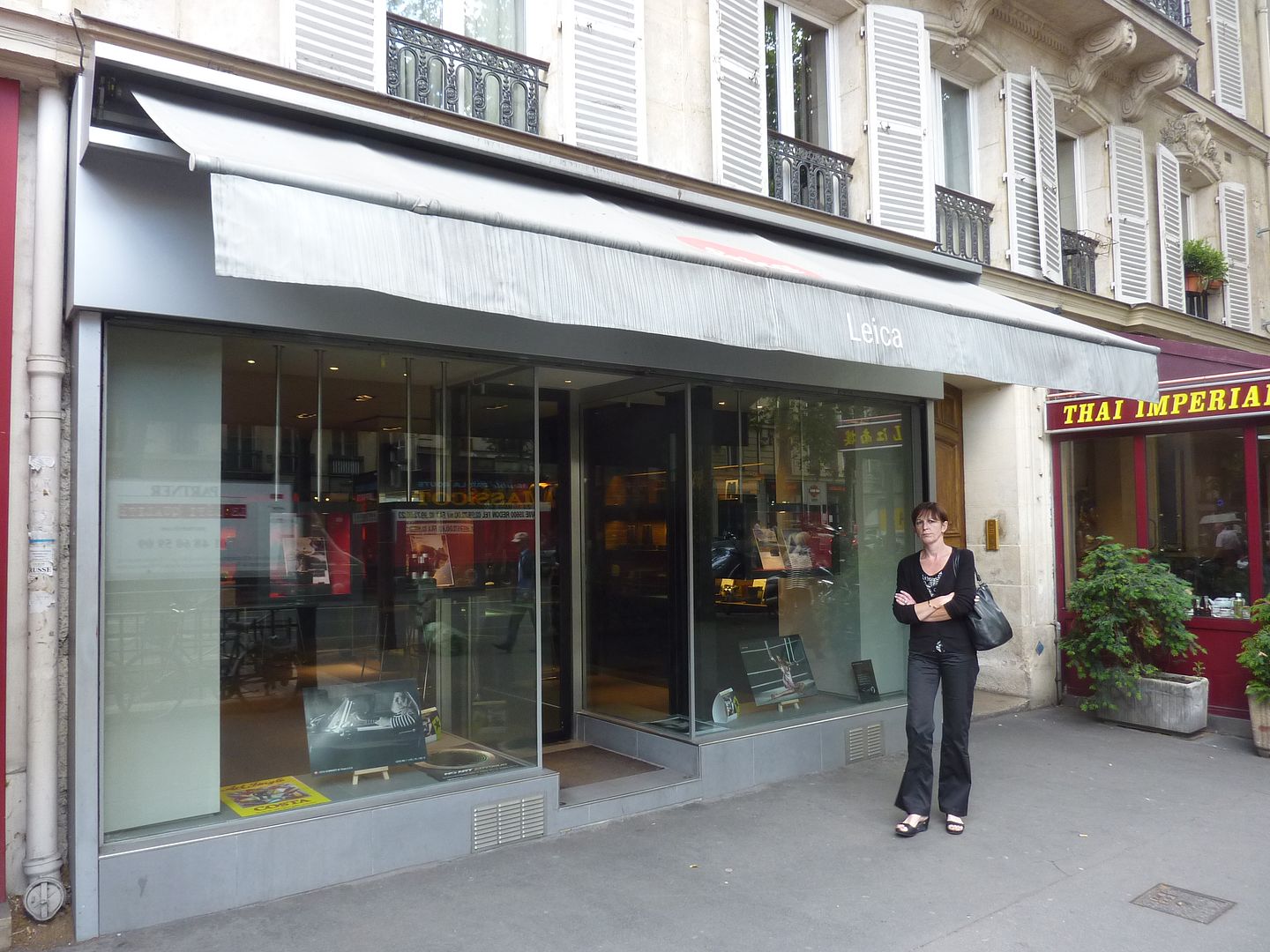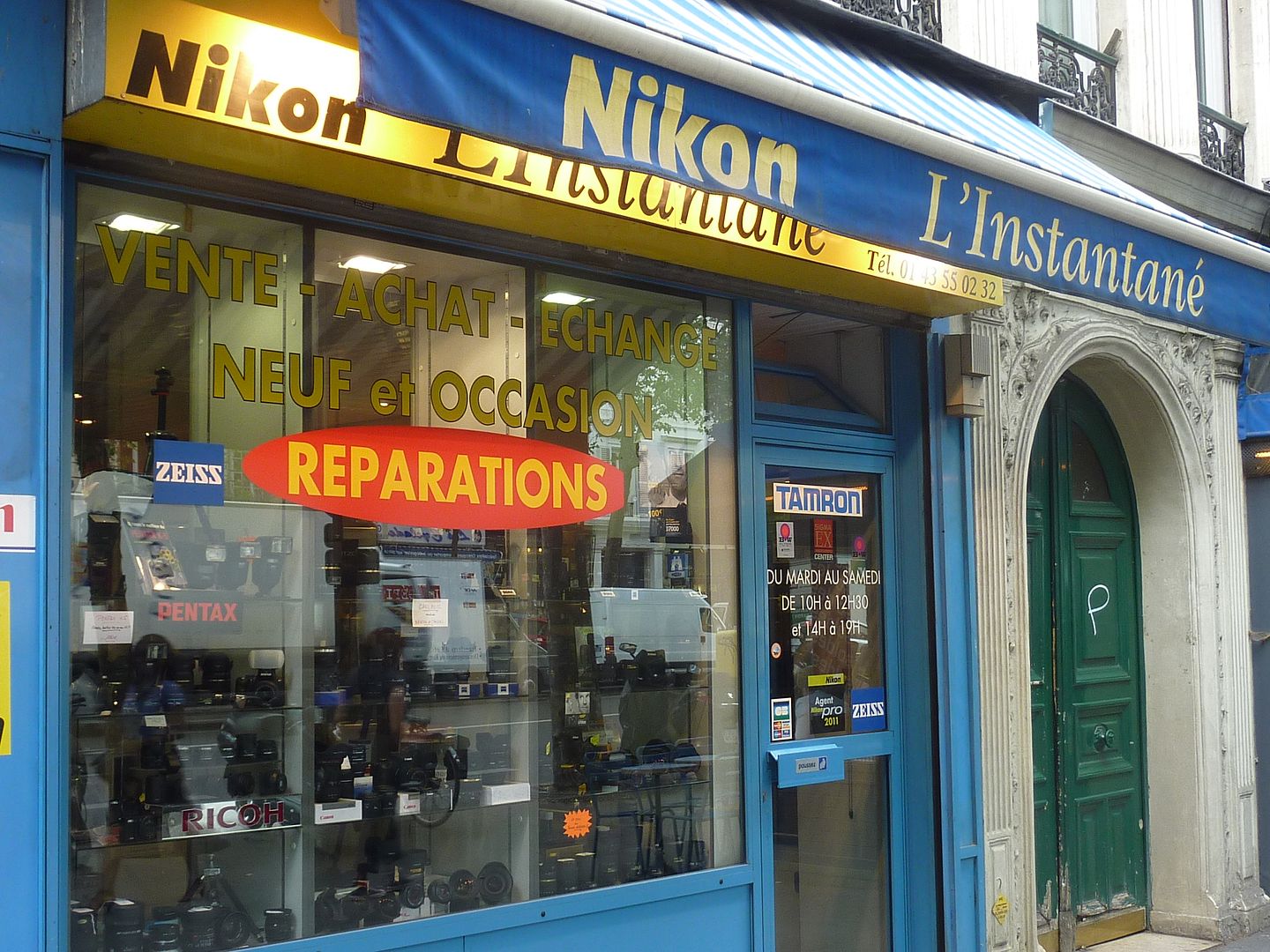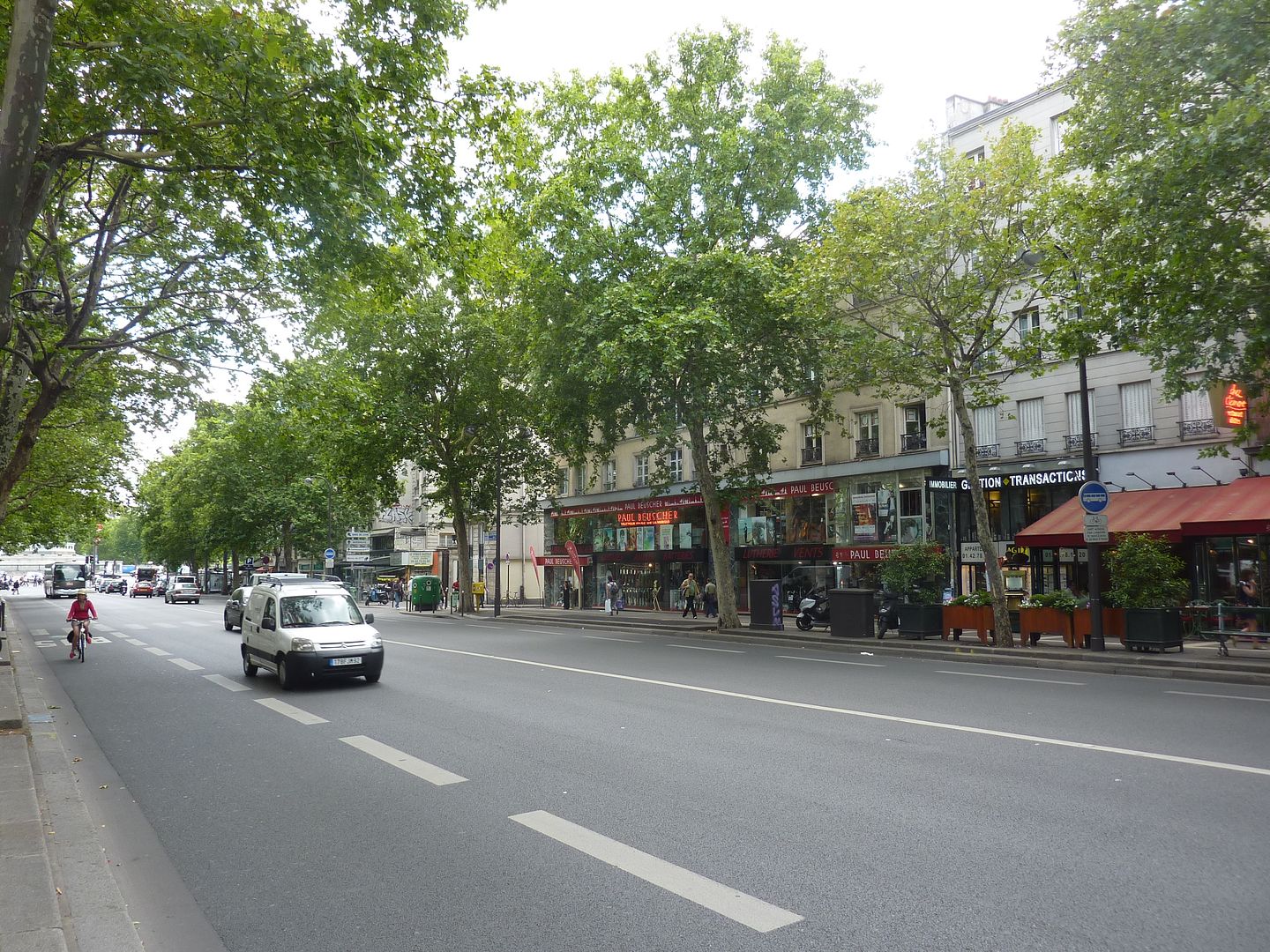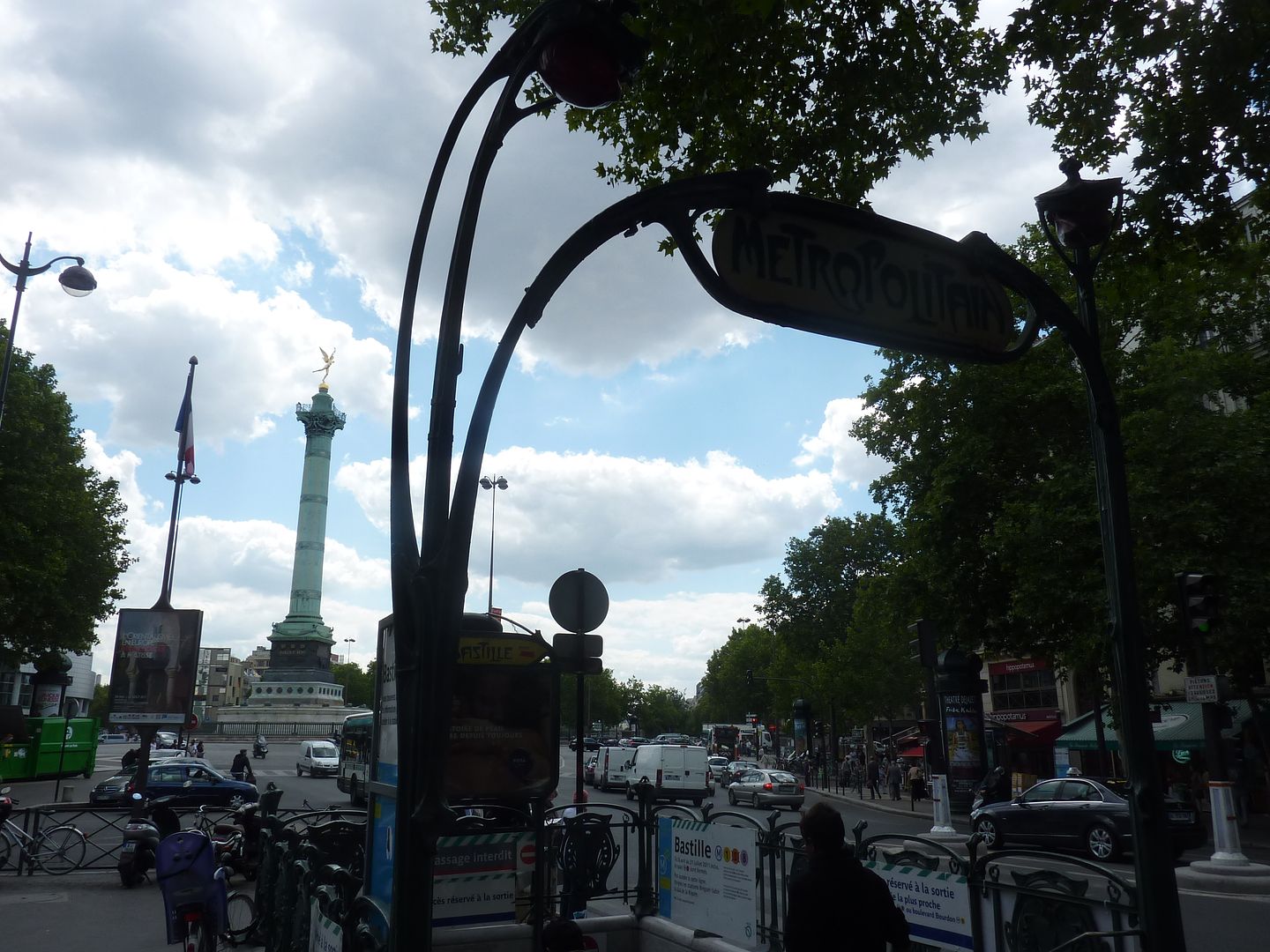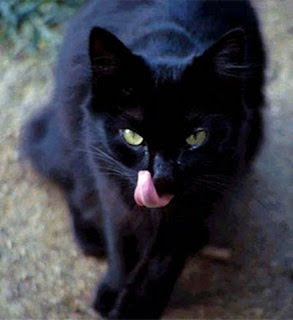|
|
Post by Deleted on Jul 1, 2011 5:50:43 GMT
The Grands Boulevards of Paris are a very specific succession of boulevards stretching from the Madeleine church to Place de la Bastille: Boulevard de la Madeleine, Boulevard des Capucines, Boulevard des Italiens, Boulevard Montmartre, Boulevard Poissonnière, Boulevard Bonne-Nouvelle, Boulevard Saint Denis, Boulevard Saint Martin, Boulevard du Temple, Boulevard des Filles-du-Calvaire, and Boulevard Beaumarchais. The boulevards replaced the old fortifications of Charles V and Louis XIII, so in spite of the different names, we are talking about one big seemingly endless street. I'll get back to a bit of the history later, but I want to start the report with the church of La Madeleine, which is unmissable for tourists, but which is the highlight on no one's visit. It's the church that almost never was, for one thing. It took 85 years to build, which wouldn't have been much in medieval times, but which was a huge delay by the end of the 18th century. Louis XV laid the first stone in person, and things went downhill from there. The architects could not agree on the exact blueprints, so things progressed very slowly, and then there was that pesky revolution which abolished religion. Napoleon decided in 1806 that it would be a temple to the glory of his Grande Armée, but then in 1837, Paris needed its first train station and that's what the building almost became. Finally, the nearby site of Gare Saint Lazare was chosen instead. The church finally opened in 1845, so it is a baby compared to a lot of the other monuments of Paris. The main reason that tourists can't miss it is that when they are standing near the Obelisk at Place de la Concorde, they can see the perfect alignment that the Madeleine mades with the Assemblée Nationale just on the other side of the Seine, both buildings in neoclassical style. 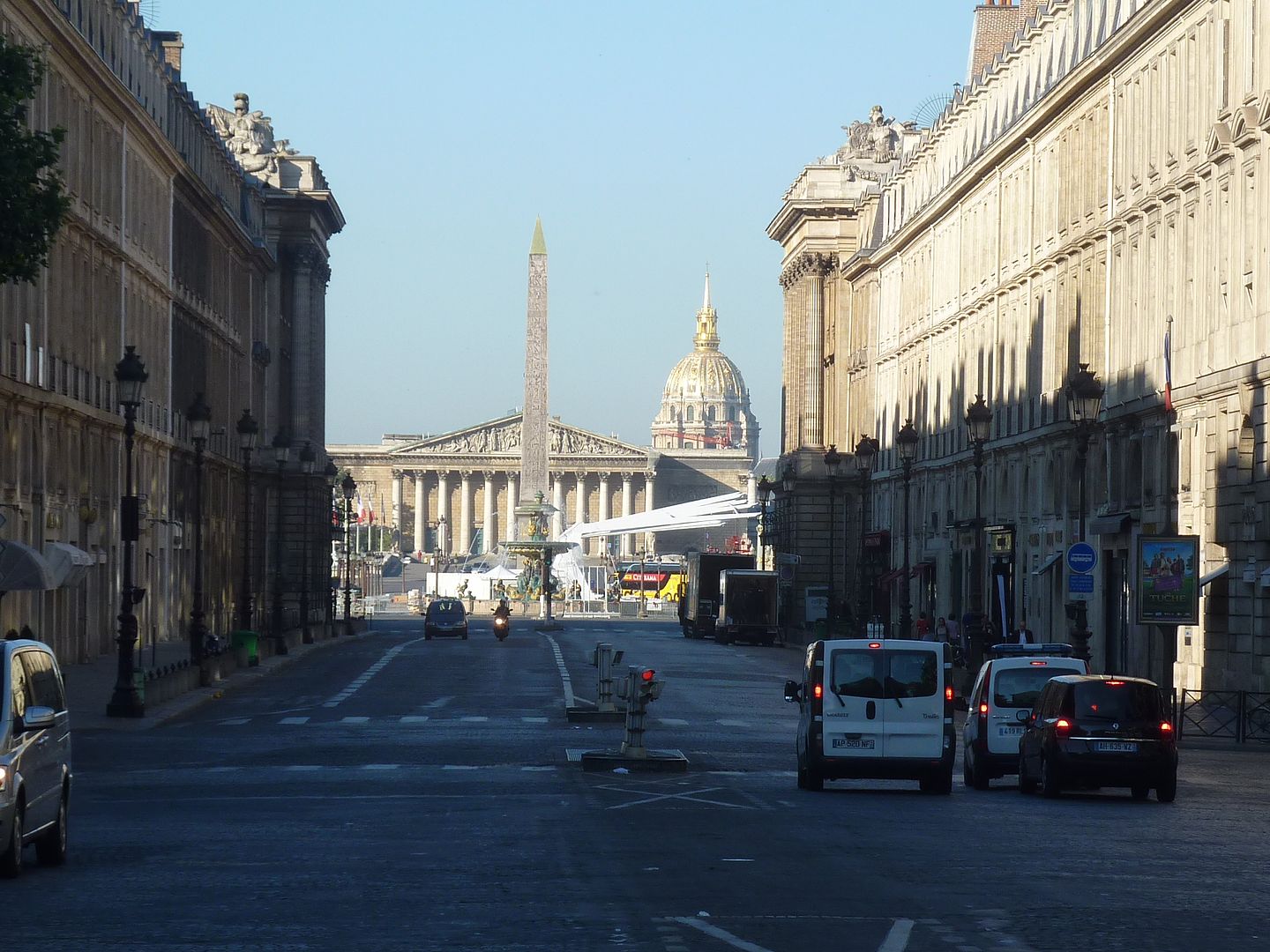 The flower boxes were added to the dreary steps during the summer about 10 years ago.  Once that you are up under the columns, you realize that the place is pretty damned big. 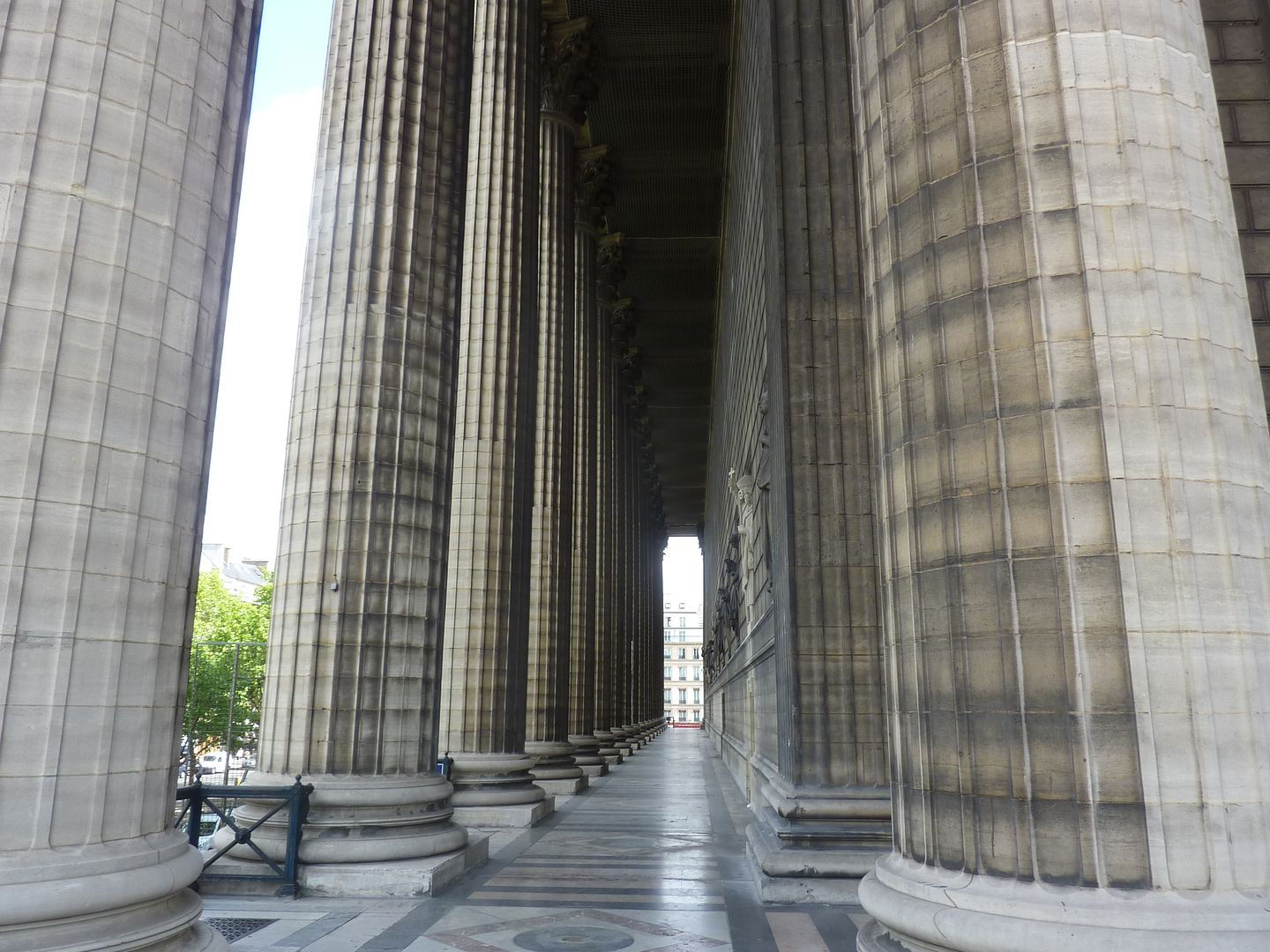 Inside is the big disappointment -- no windows so no stained glass. The place is just a big box. 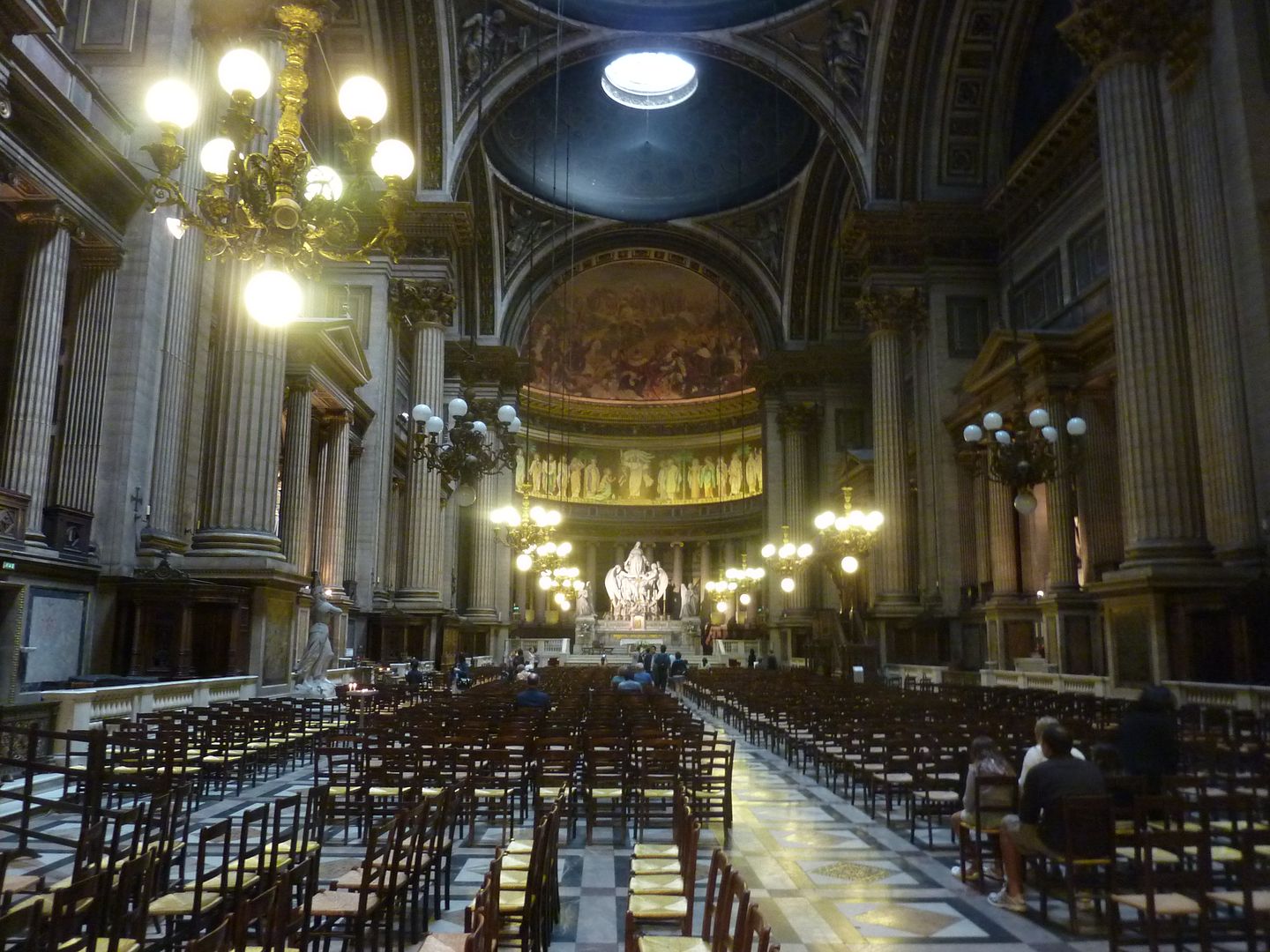  The list of organ pipes is impressive for people who understand that sort of thing.  Let's step back out and admire the view a final time. 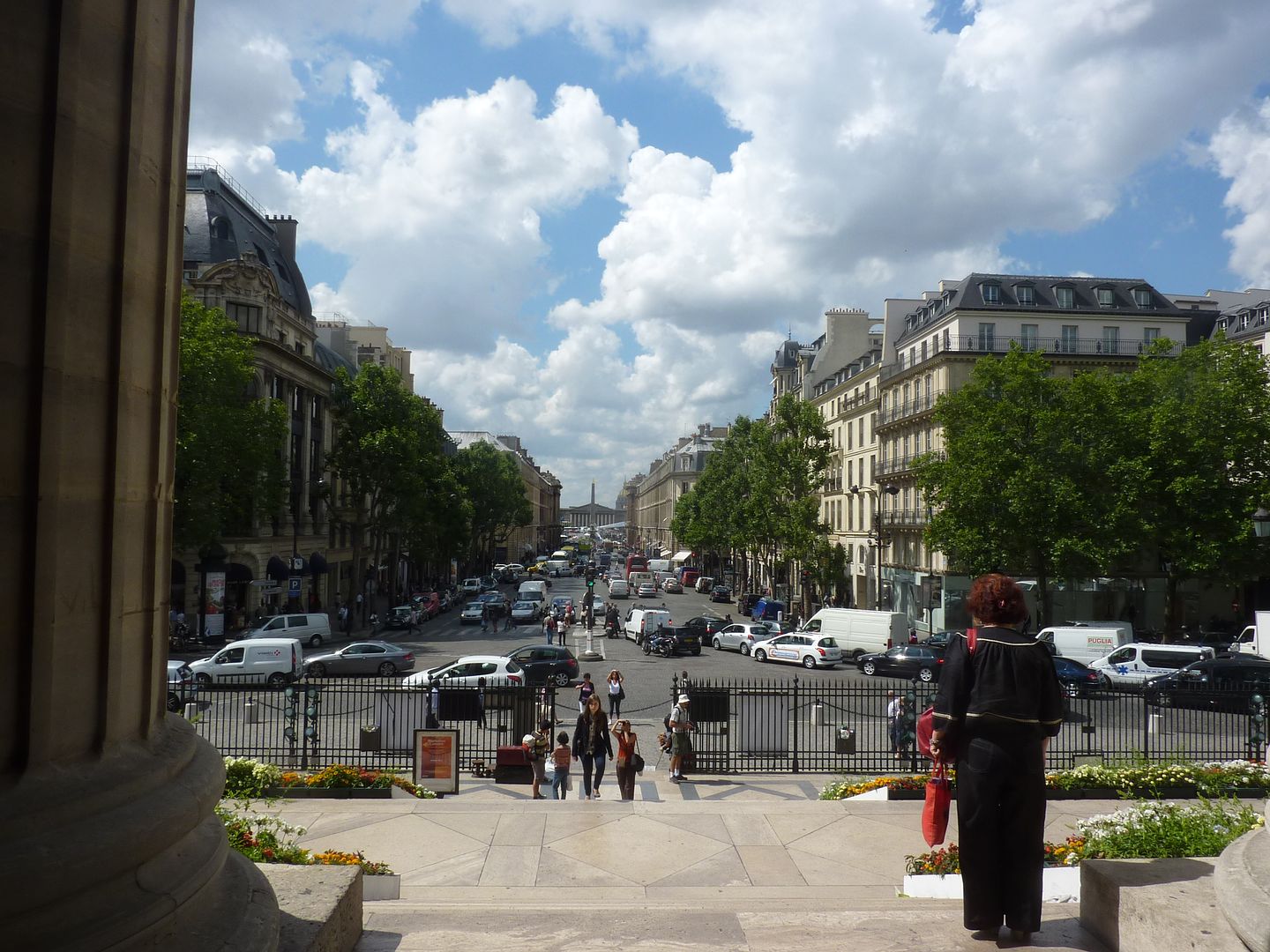 While the church is not great, Place de la Madeleine has other attractions that tend to cause a tourist stampede.
|
|
|
|
Post by Deleted on Jul 1, 2011 6:19:16 GMT
There are some big flower stands on one side of the church, and also the half-price theatre kiosk, but people come here for the gourmet shops. One of the main draws these days is the Maille mustard shop with at least 50 varieties of mustard and its famous mustard pumps, to which you bring your own mustard pot for a refill. The height of chic.  Finally, there is also the Pinacothèque private museum which is famous for spectacular expos that require reservations to visit. Not at the moment, though. 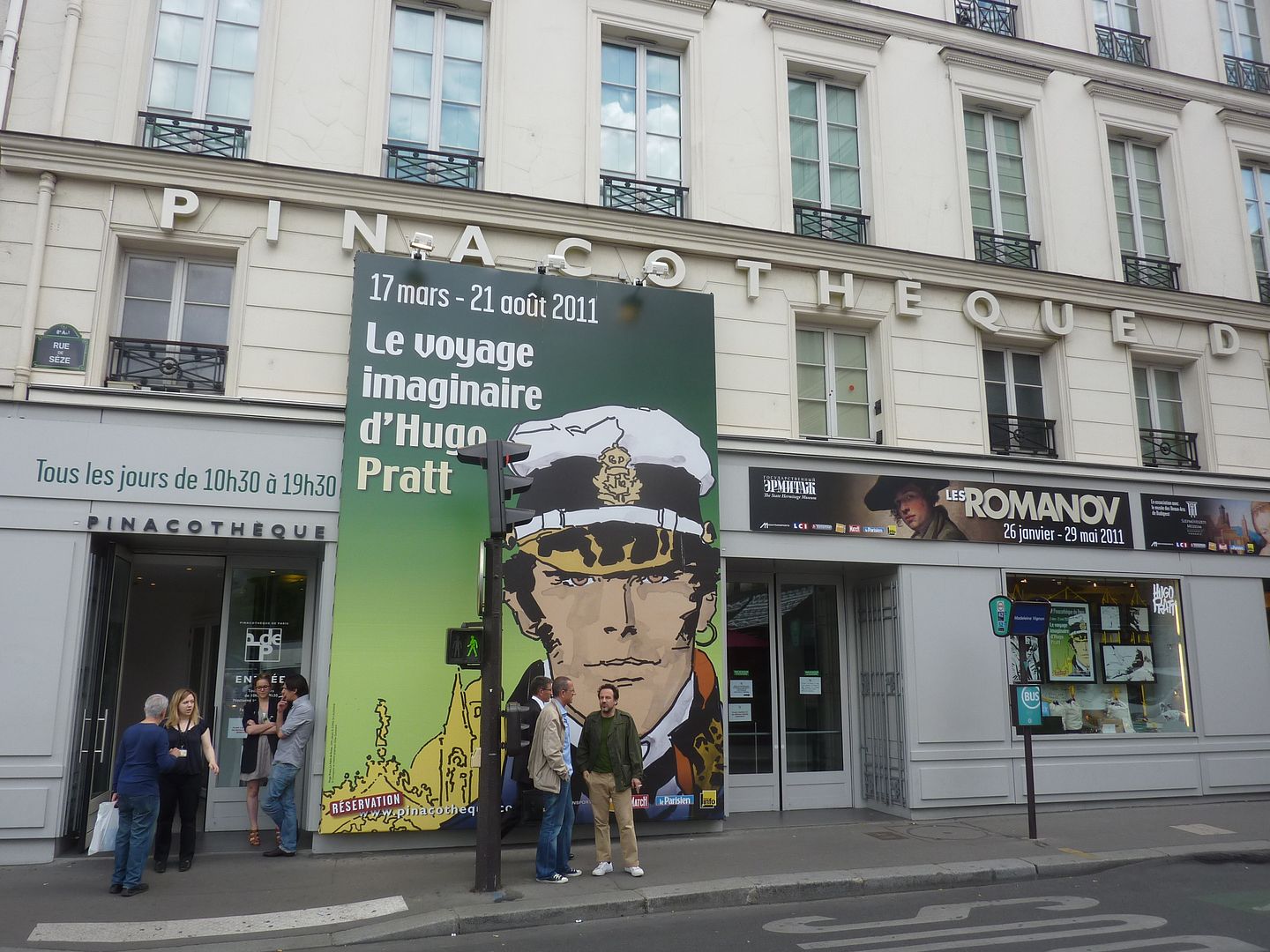 Time to start moving along the boulevards 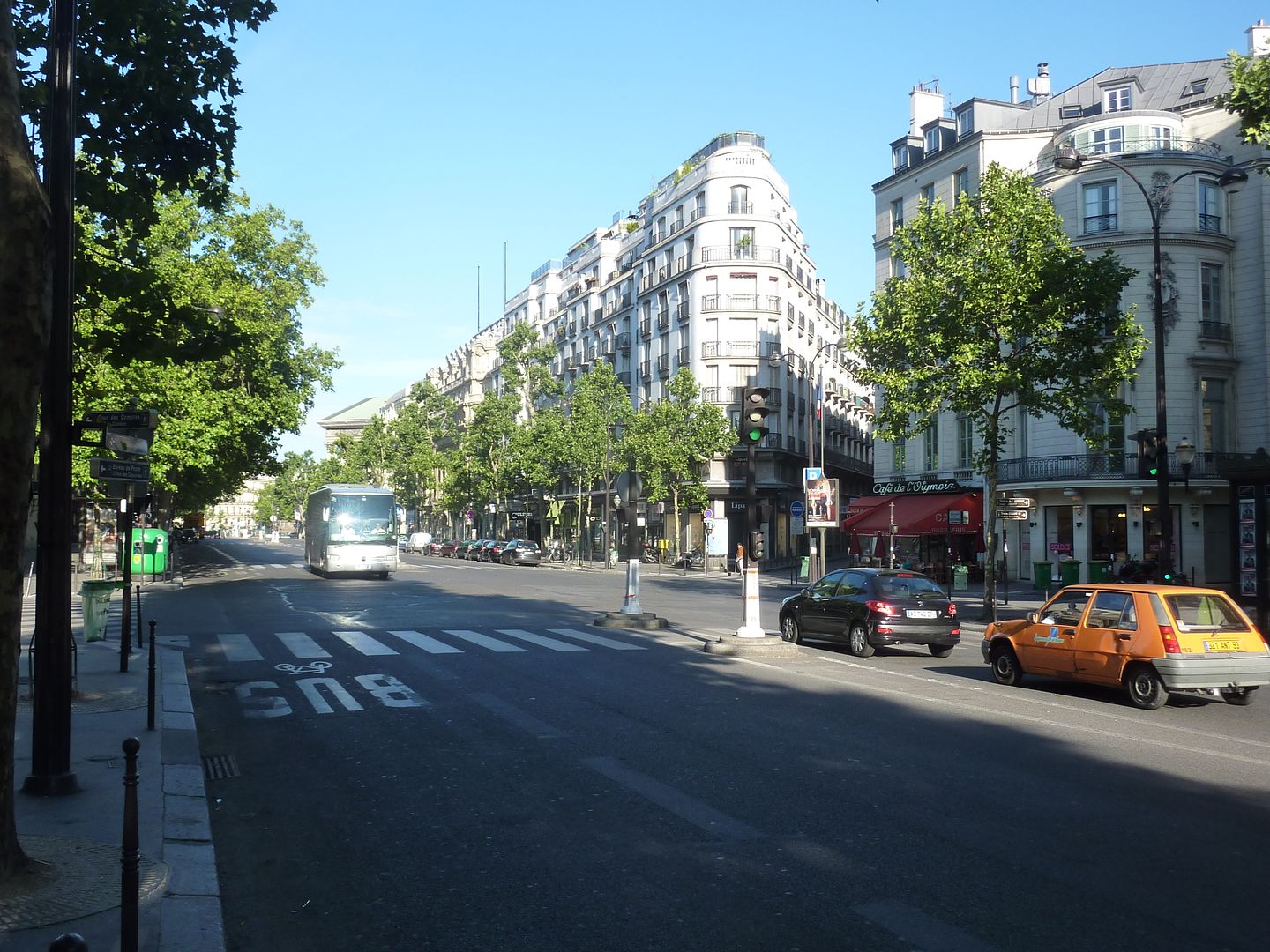 |
|
|
|
Post by hwinpp on Jul 1, 2011 6:35:00 GMT
An old R5! Can't believe they're still on the road.  |
|
|
|
Post by bjd on Jul 1, 2011 6:45:37 GMT
There are still quite a few Peugeot 205's around as well, HW.
I have a relative-by-marriage living near La Madeleine. I find it one of the most boring areas of Paris, and even she admits it's pretty dull.
|
|
|
|
Post by Deleted on Jul 1, 2011 17:47:14 GMT
There are districts of Paris for every taste. I am often flamed on the travel sites for my preference for more working class areas when so many other people want 'postcard & movie Paris.' In any case, the Grands Boulevards have been considered in the past to be extremely upscale and elegant, but a lot of the itinerary is no longer considered to be upscale at all. However, the first few blocks of Boulevard de la Madeleine, Boulevard des Capucines and Boulevard des Italians are still considered to be extremely upscale. I didn't take photos of all of the high end boutiques in the first section, but I did take some photos of the Olympia, the historic music hall where everybody-who-is-anybody has performed, whether they are a superstar in Europe, America or Africa. The Olympia is not huge, so the local expat community can fill it easily when their favorite artist is performing there. The huge neon letters of the sign often change every day, and I regularly do not necessarily recognize the star of the day. I would love to see the storeroom of the huge neon letters. It must be really massive. Did you notice the people already waiting on the sidewalk for the box office to open? I read who was performing there unexpectedly the other day, but I have already forgotten. There will be a new line on Sunday, because the two remaining living members of the Doors will be performing there to commemorate the 40th anniversary of Jim Morrison's death. Meanwhile, tickets are on sale for Liza Minelli and Charles Aznavour (I mention them because they were on the two posters on each side of the entrance, but you can't really see them.) In the hallway across from the box office, you can see posters for the other people performing soon. |
|
|
|
Post by Deleted on Jul 1, 2011 19:40:14 GMT
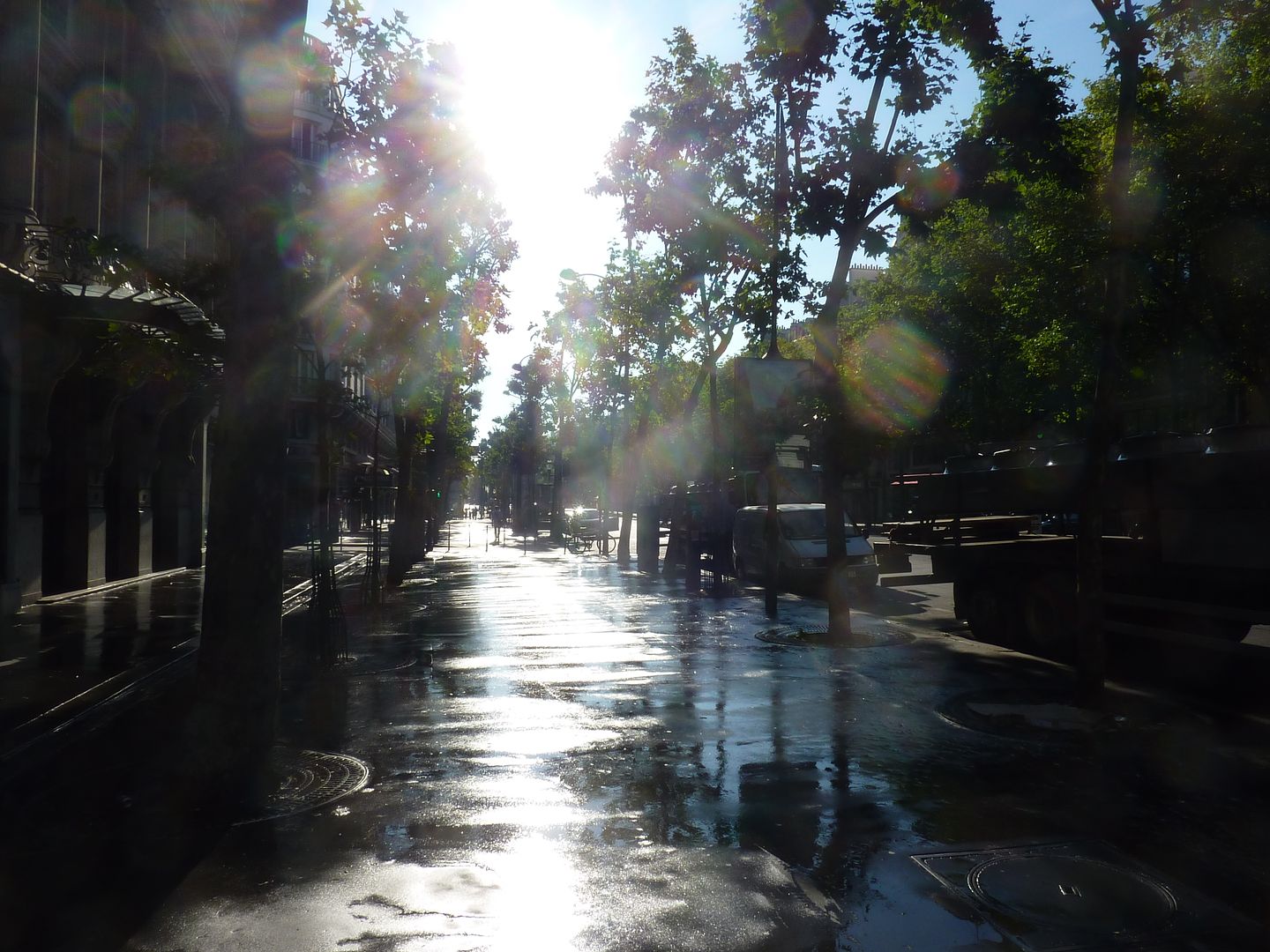 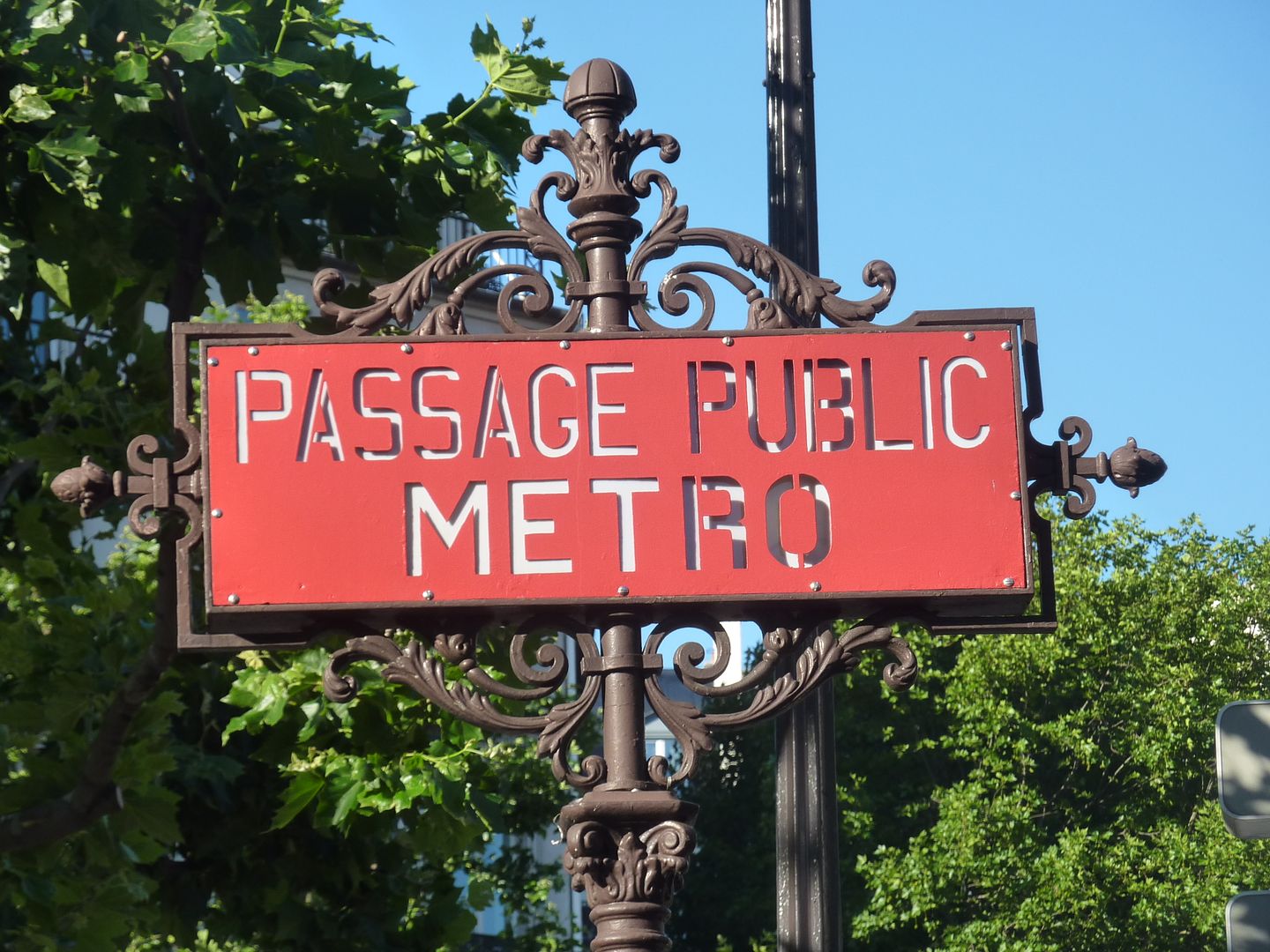 It should be mentioned that even though the Olympia is an extremely historic music hall, it is a total copy of the original. As famous as it was, it was threatened with closure numerous times, just because real estate is so expensive in that area that offices will always bring in more profit than a theatre. The government classified it as a historic building in 1993, preventing it from ever being changed architecturally, even if it became a supermarket. After quite a few negotiations, the bank that owned the entire city block obtained a permit to demolish everything and rebuild, as long as the Olympia was rebuilt identically. The private "rue Edouard VII" runs through this block, so just keep in mind that every single bit of it was built in 1997 no matter how old it looks. The Olympia was rebuilt as promised, just changing place slightly, to be pushed back about 150 meters from its original location. Having been to both Olympias, I can attest that it is absolutely impossible to tell the difference. |
|
|
|
Post by Deleted on Jul 3, 2011 10:43:41 GMT
On the way to the old opera, the Opéra Garnier, there are quite a few high end shops that have not changed in 50 years or more. Well, maybe the prices have changed a bit. Place de l'Opéra is a centerpiece of Haussmannian Paris, with huge streets leaving from it, notably rue de la Paix, with Place Vendôme and its column, and avenue de l'Opéra which makes a beeline for the Louvre. |
|
|
|
Post by Deleted on Jul 4, 2011 9:37:51 GMT
The Grands Boulevards were considered to be the absolute center of Paris for more than a hundred years in terms of entertainment, dining and nightlife. The grandest hotels were built along it and the bourgeoisie of the world flocked there. The incredible French invention, the cinematograph, was presented at the Grand Café in 1895. The Grand Café is still there (red awning), next to the Gaumont Opéra multiplex, which is of course much grander. The quirks of history! Right across from it is the Palais Berlitz, a fine example of streamline moderne architecture. 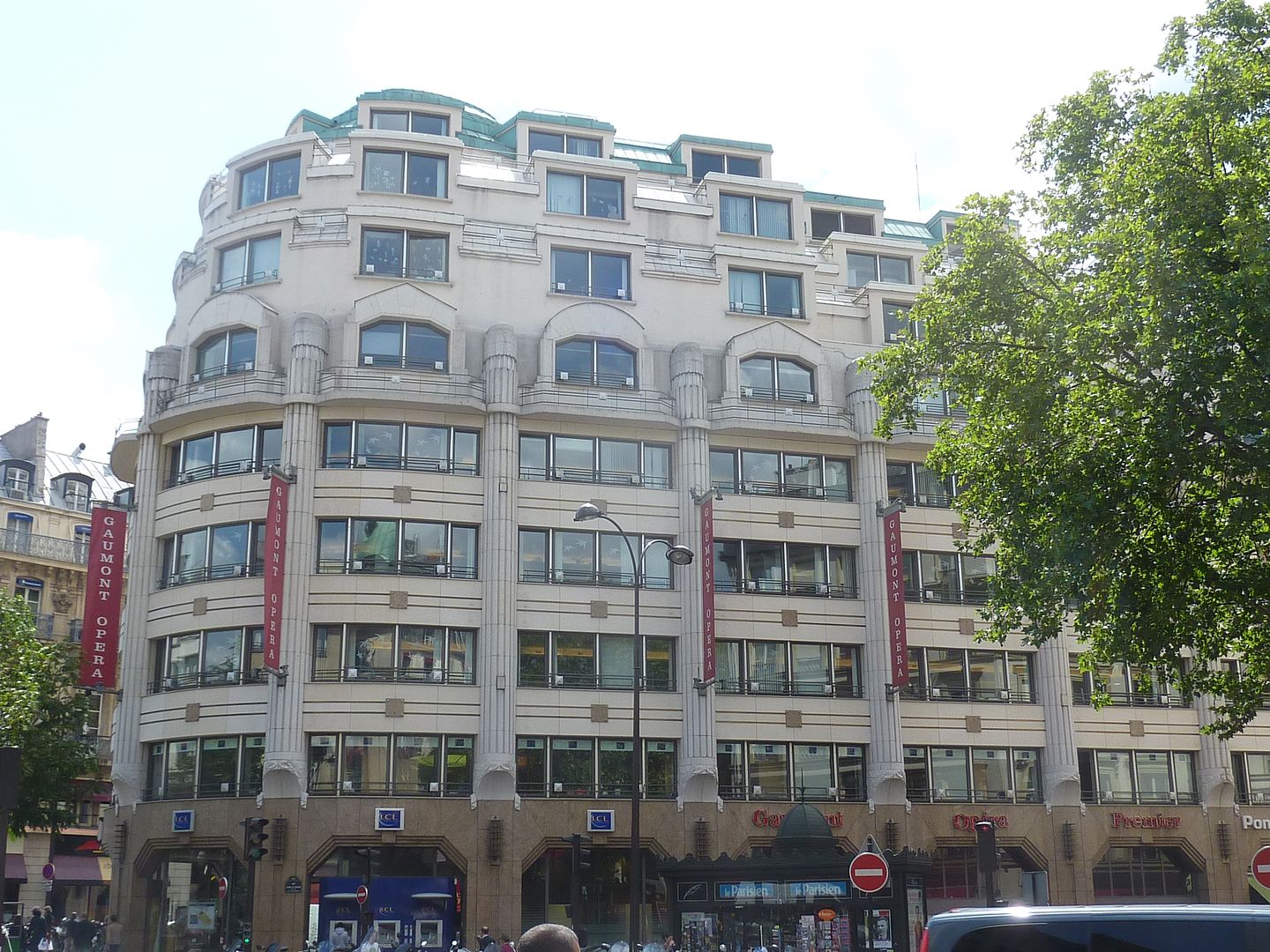 Berlitz itself has moved to an equally elegant Haussmannian building on Place de l'Opéra, so apparently they are still doing fine. It should be mentioned that the Grands Boulevards are no longer the center of Paris, far from it. I don't think they look all that bad, but the chic police decided by the late 1960's and early 70's that the area was completely passé, only worthy of ploucs (bumpkins). The area has thrived anyway, because there is no lack of bumpkins, and also European tourists, who love the area. (North Americans remain mesmerized by the Left Bank around Saint Germain des Prés, or else the Champs Elysées if they are high rollers.) Food of all sorts is available in profusion, not always French. There are still at least 20 or 30 cinema screens along the boulevards, but I still remember the ones that used to be there. Sometimes the architecture is a dead giveaway.  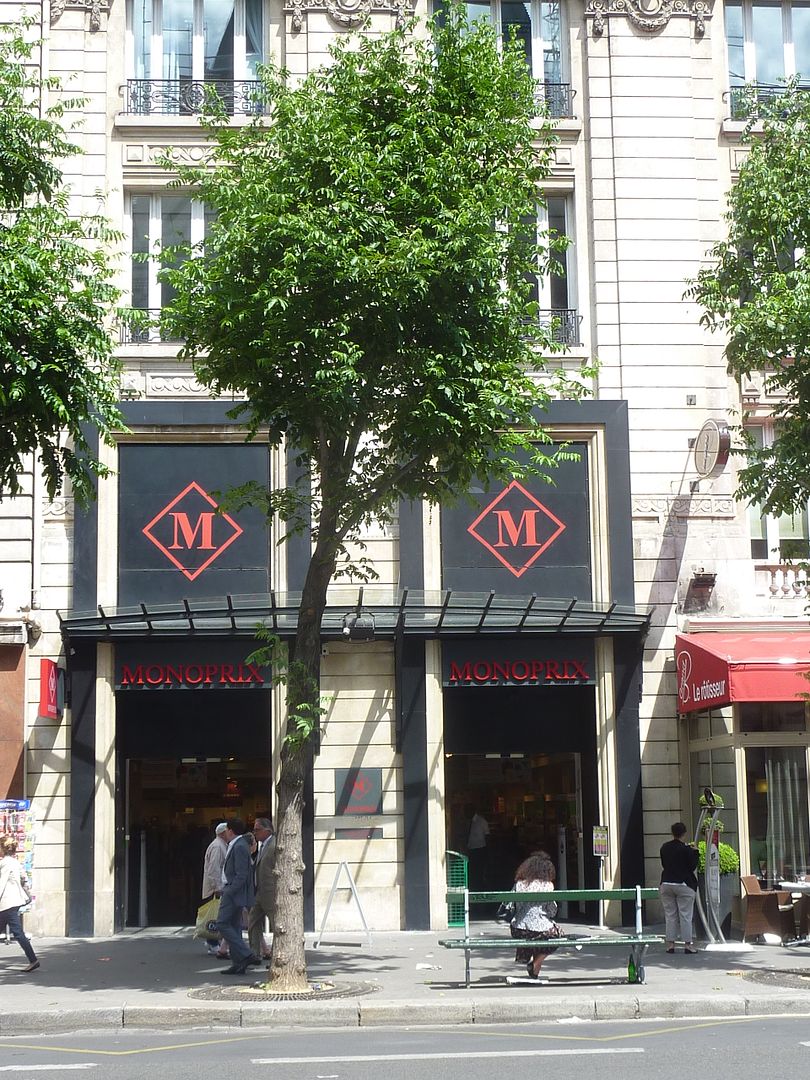 The old Crédit Lyonnais (bank) headquarters is being renovated. The artwork covering the scaffolding is excellent -- one side looks like a cardboard model of the building, and the other side looks like a concrete model. Right across from it is a building that is not all that striking, but it is somewhat historical for totally different reasons. It was the very first building in Paris that was "renovated" using the technique of preserving the façade and completely demolishing everything behind it to build a completely modern building. After this building was done, the technique spread around the world. Developers could finally destroy all of the inefficient old stuff and not get screamed at for making the city ugly.  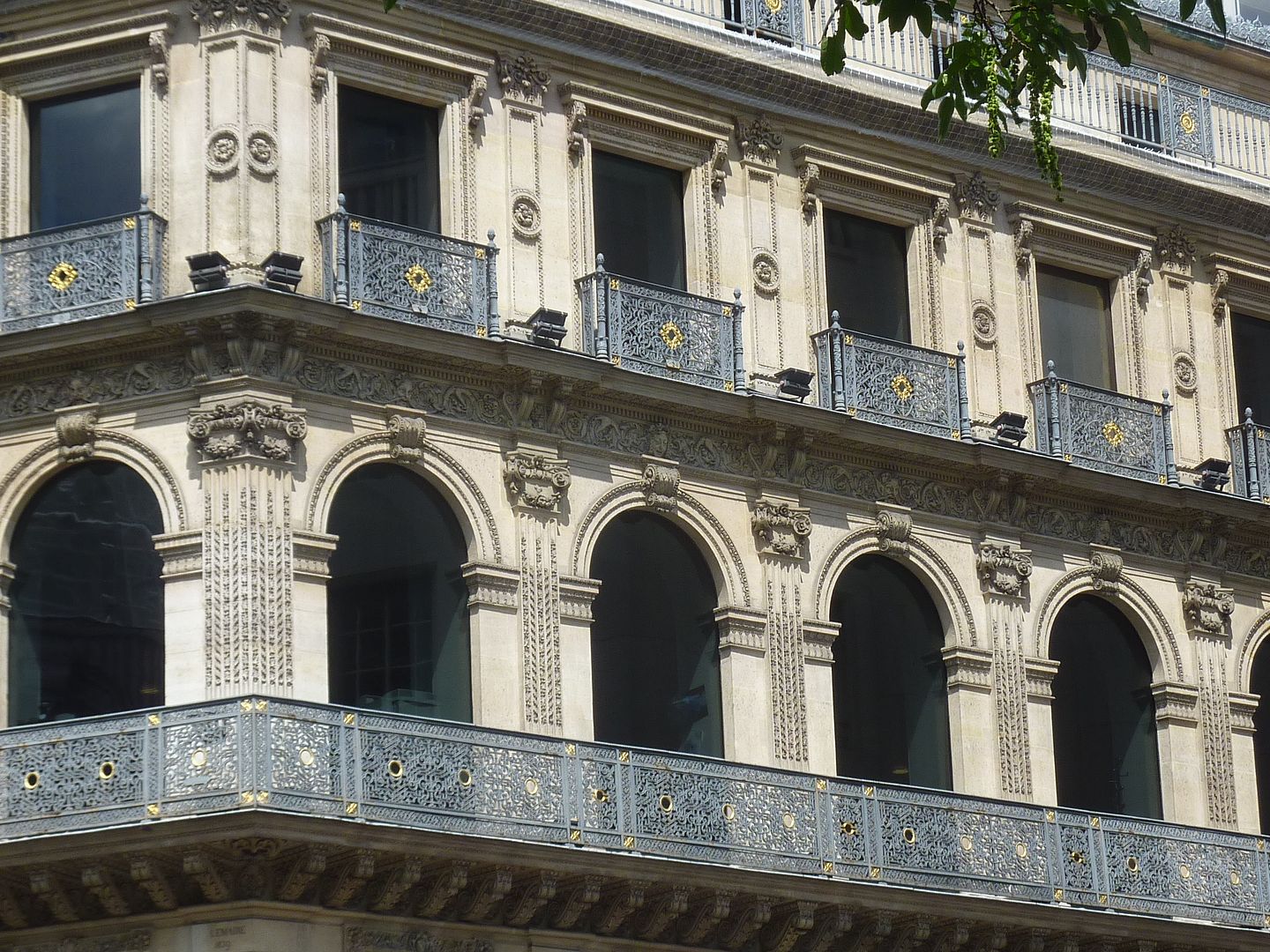 Of course plenty of things were built in the 50's or 60's without really worrying how they looked. 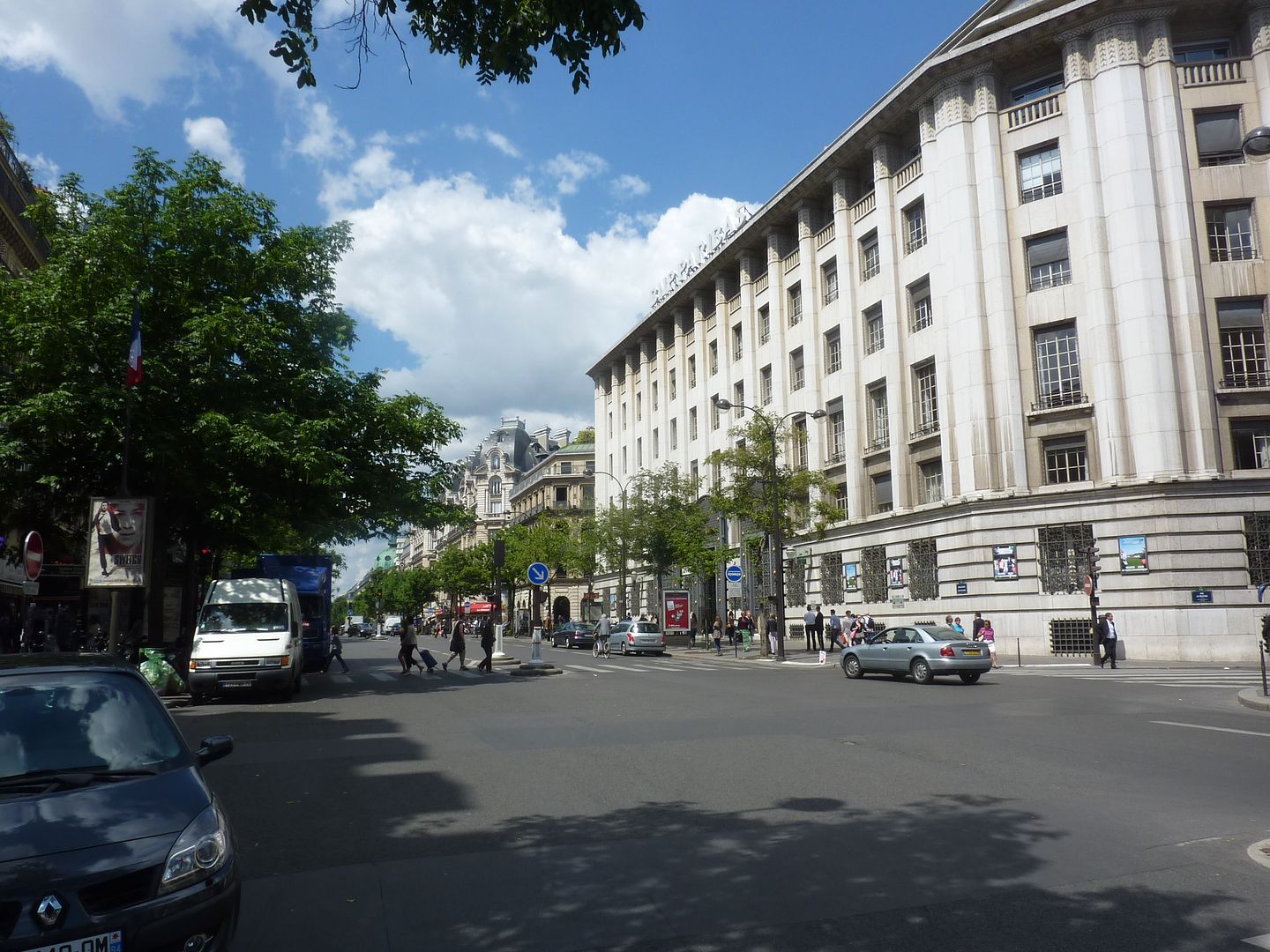 |
|
|
|
Post by Deleted on Jul 4, 2011 10:12:51 GMT
Plenty of big traditional cafés-brasseries are still holding their turf, like the Cardinal (Richelieu). 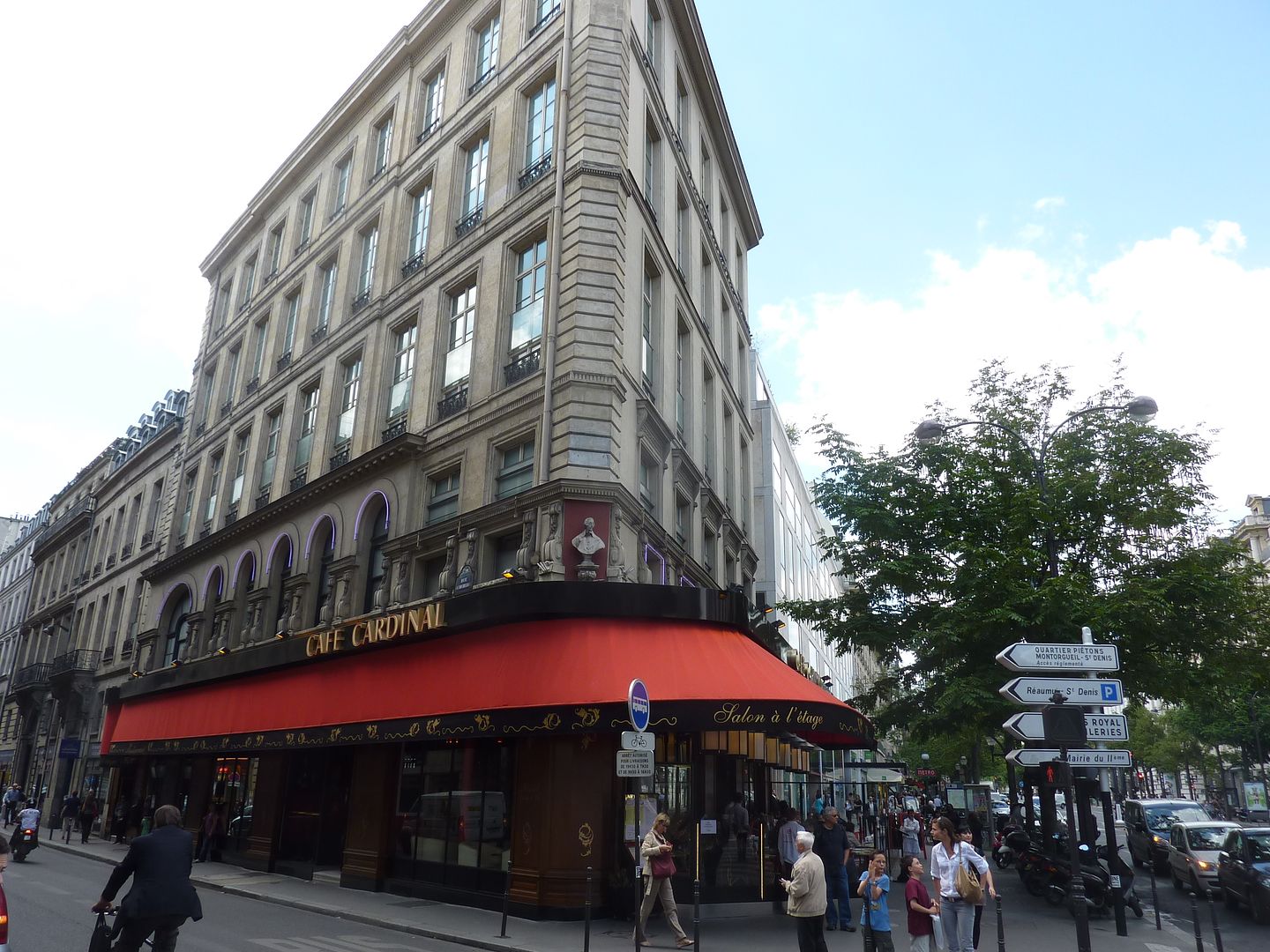 One thing about the boulevards is that they are indeed quite spacious. 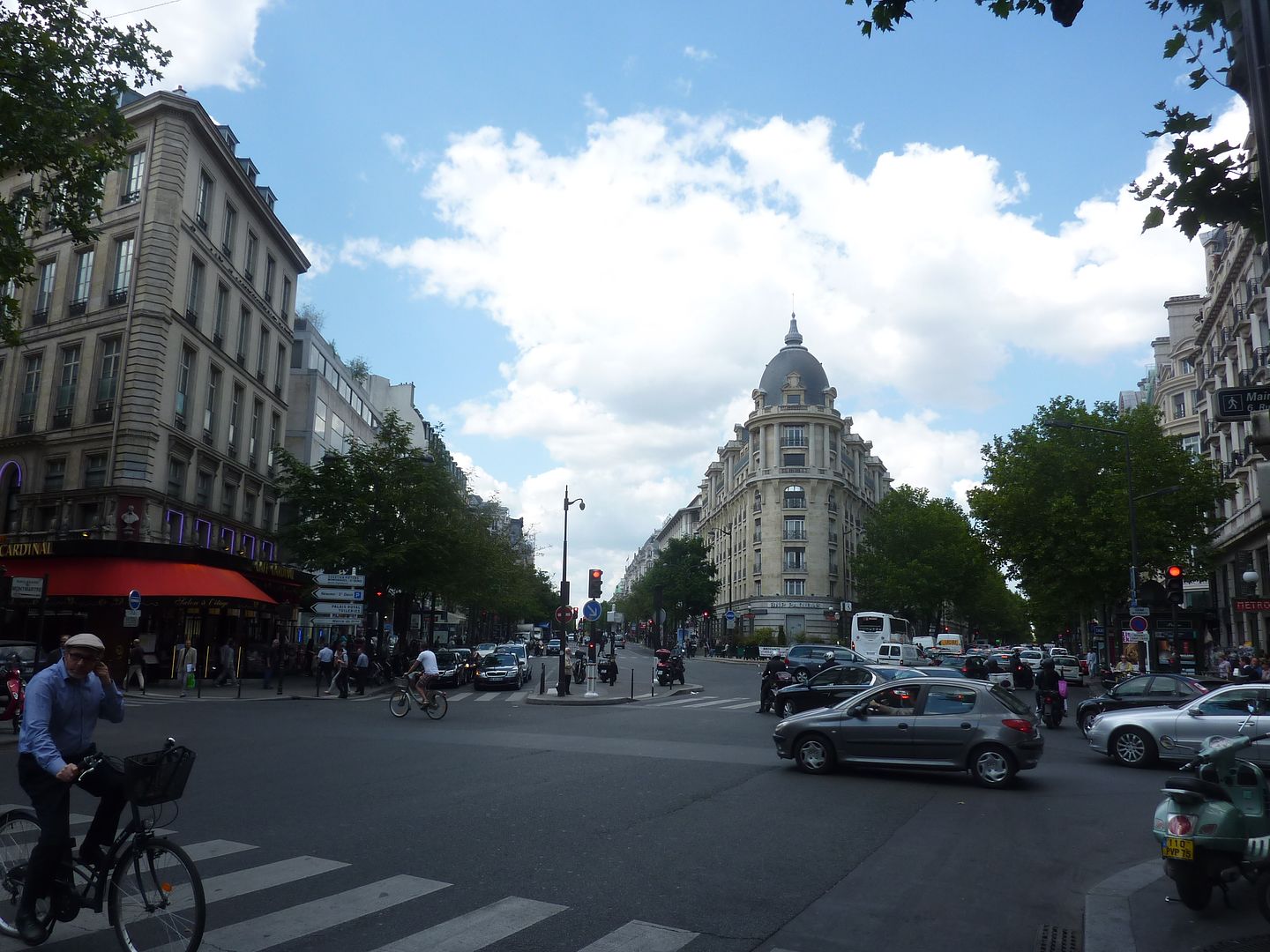 There is a big municipal plan to upgrade them and restore them to grandeur over the next decade. There will be a traffic revolution in a year or two, because a big section that has been one way for the last 40 years or so is going to return to two way traffic. There's always a lot of renovation going on in any case. 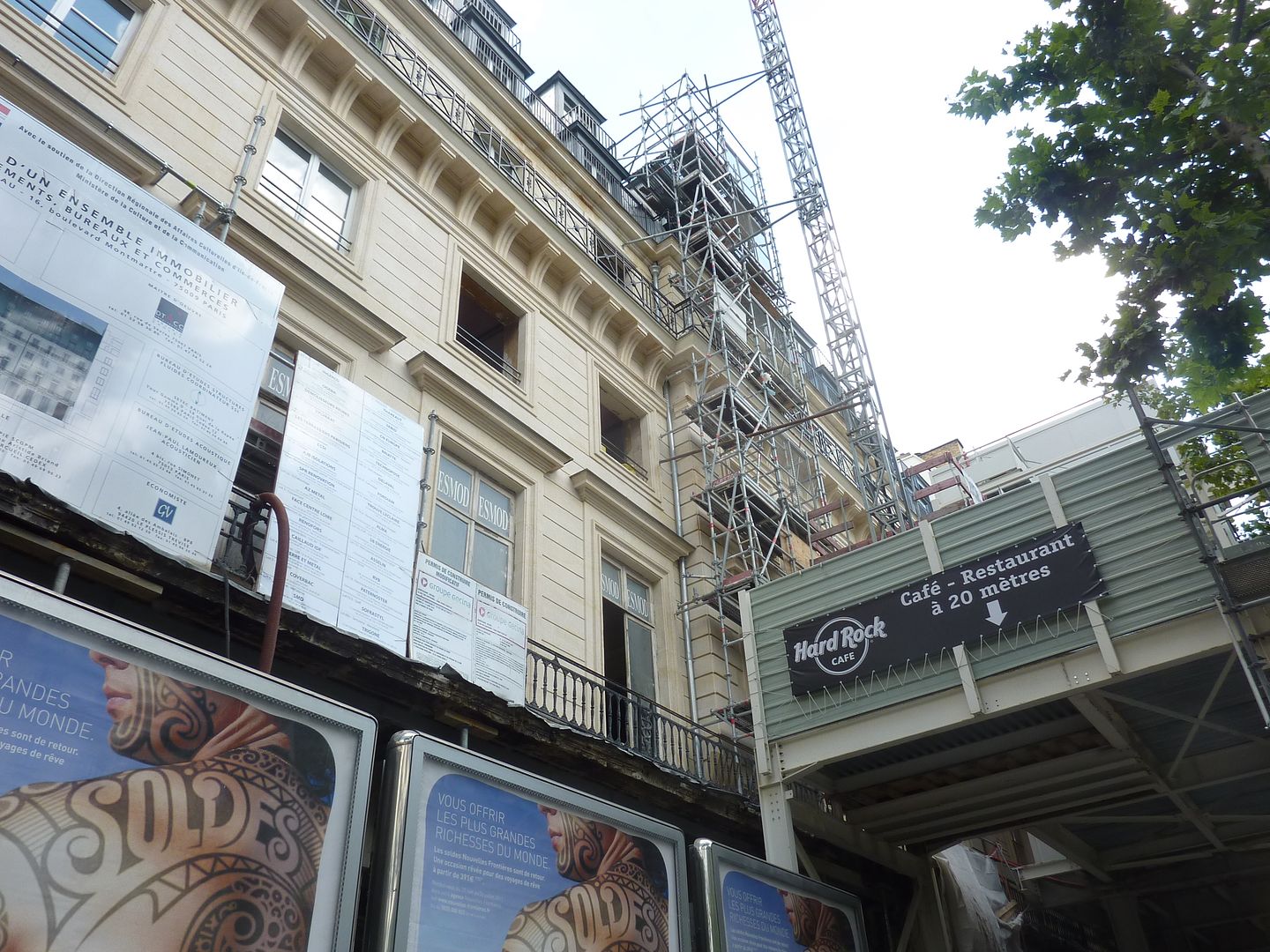 We won't visit the passages today, but they have been a major part of the area since around 1830. The precursor of the shopping mall? 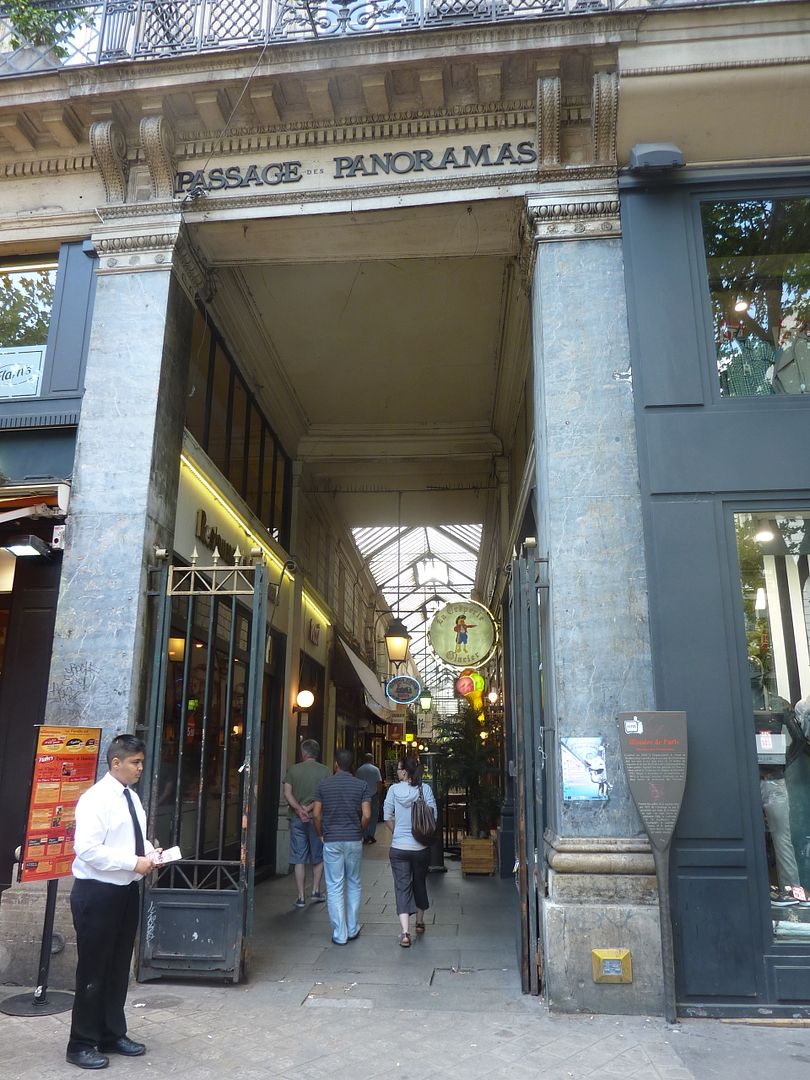 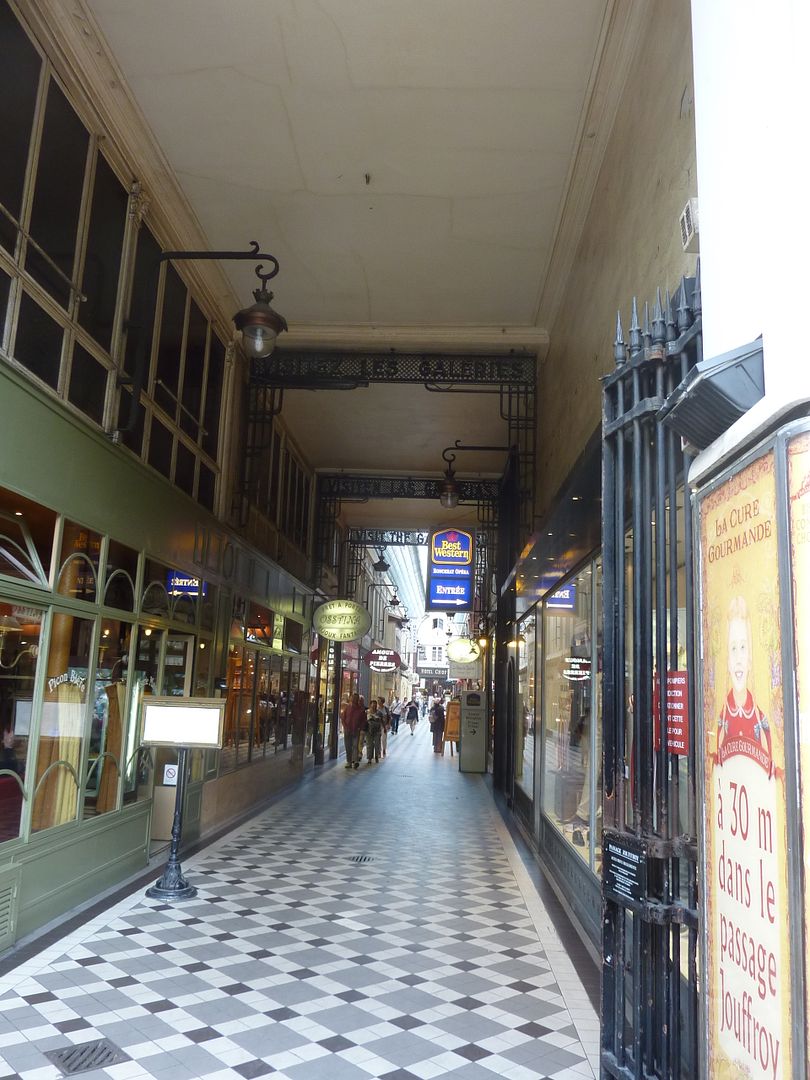 There is also the Musée Grévin, the Paris wax museum.  Tourists always love this place, too.  Virgin Mégastore has survived in France under the ownership of Hachette -- it concentrates more on books than CD's and DVD's, so it is surviving their gradual disappearance. I have a great memory for the transformations over the years. formerly a 5-screen multiplex 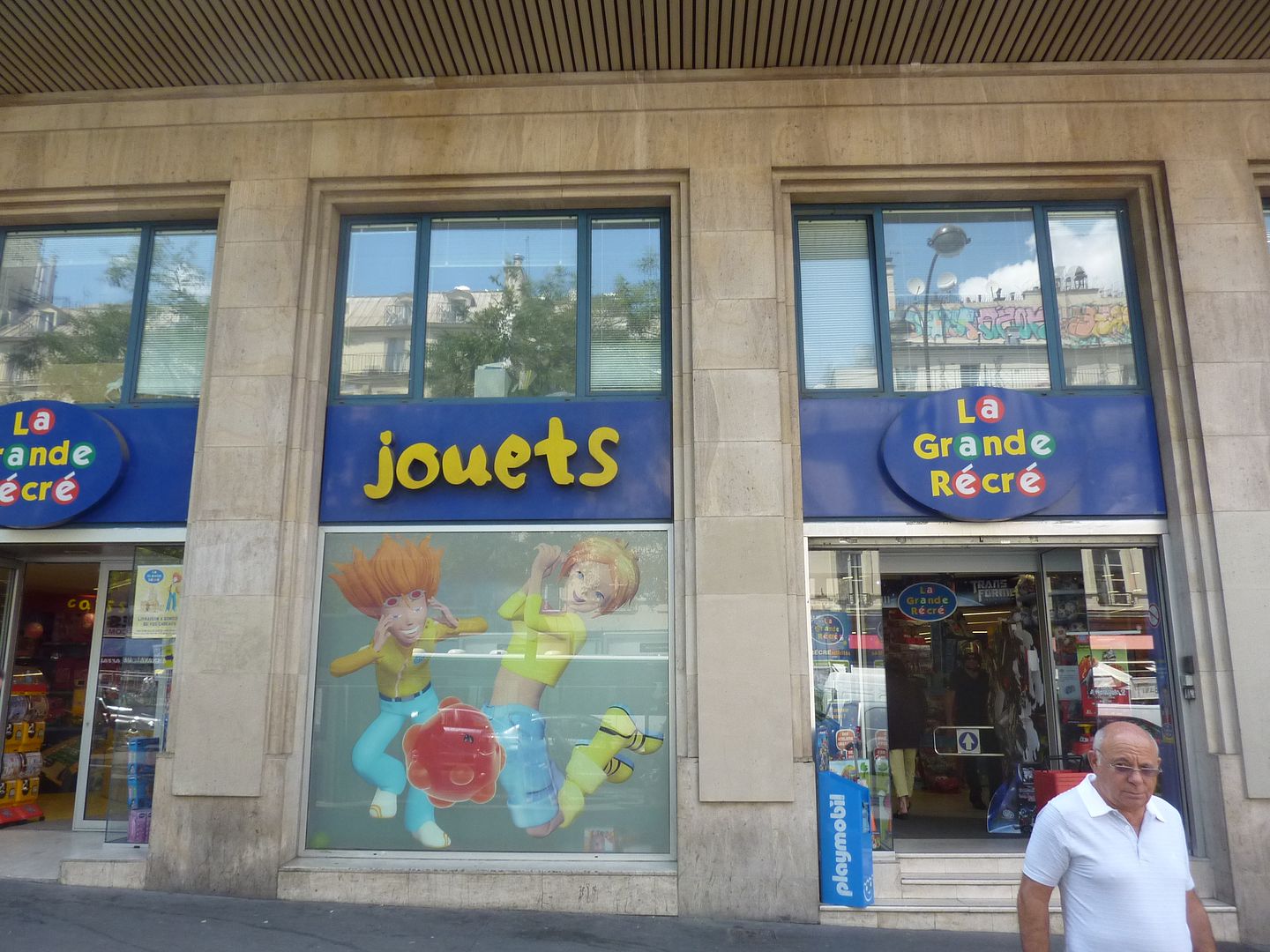 formerly a lesbian discotheque 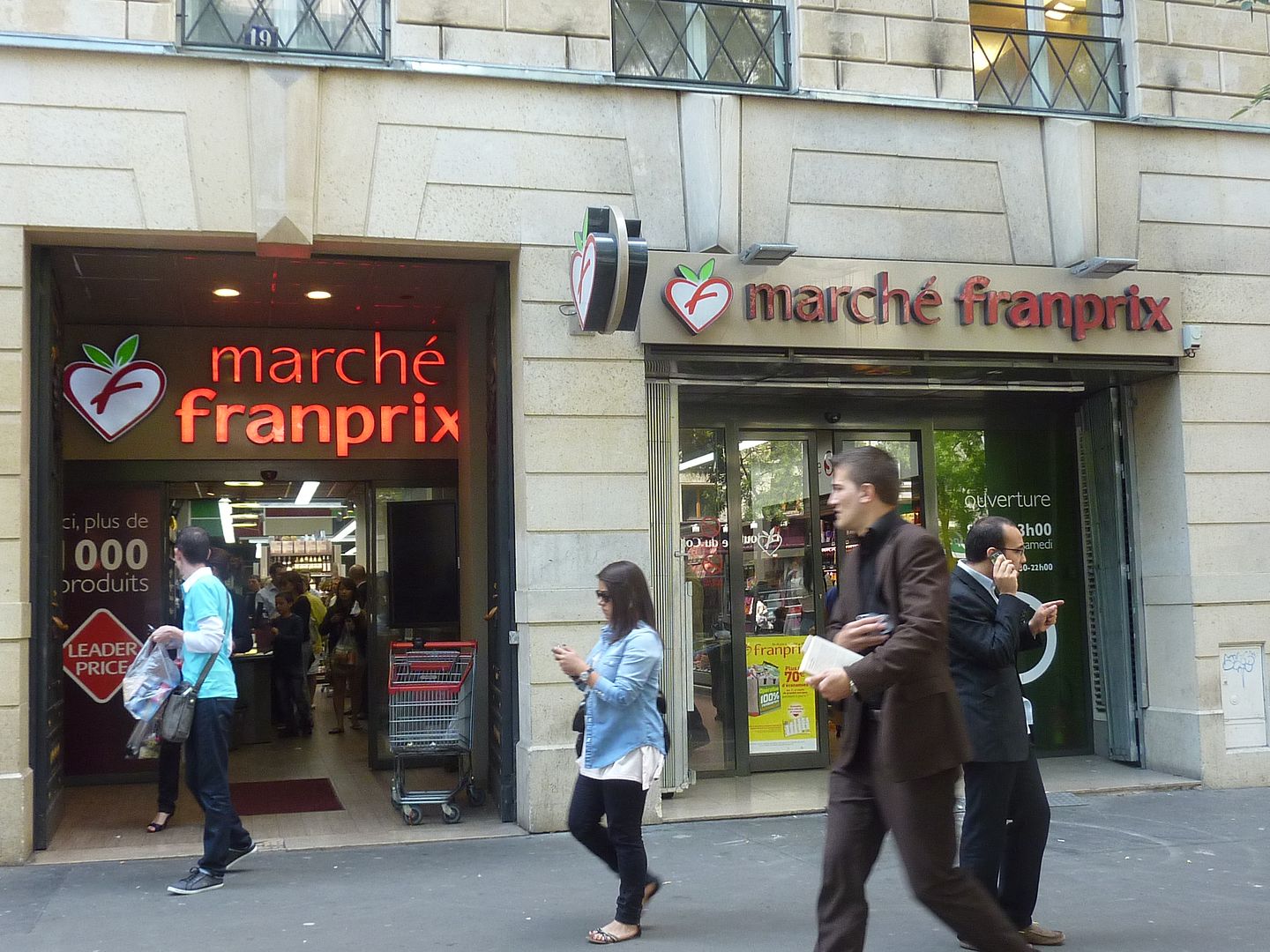 formerly a cinema 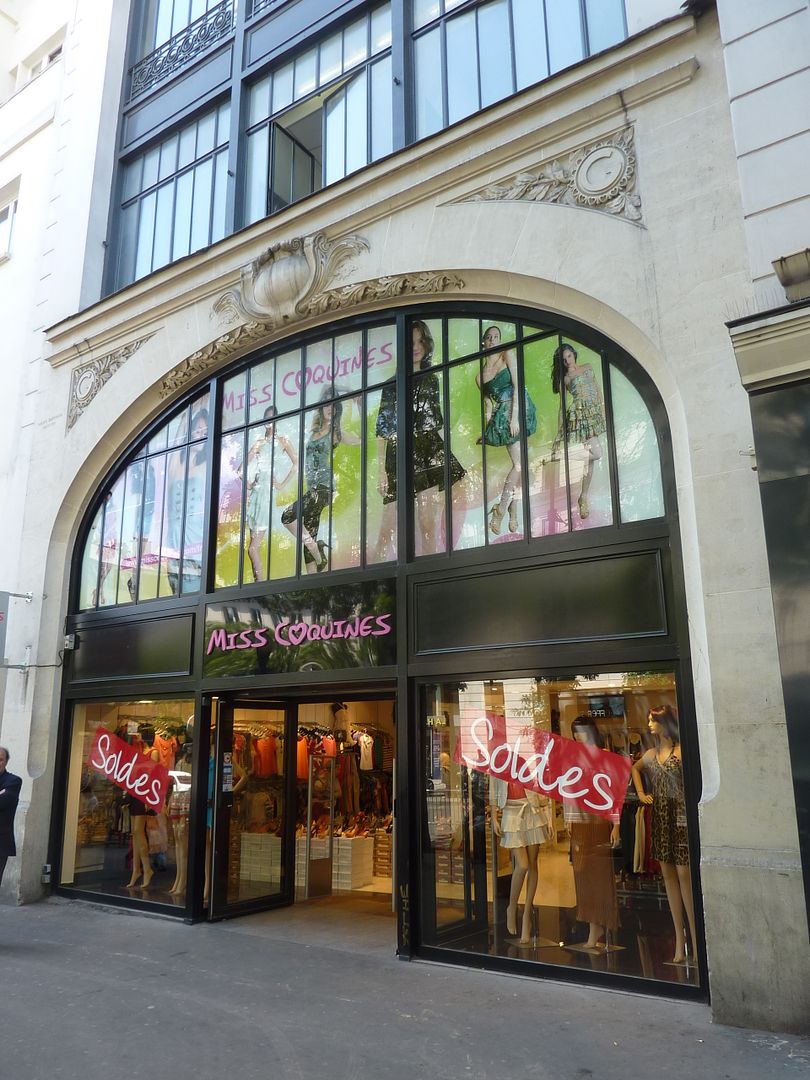 |
|
|
|
Post by zona on Jul 4, 2011 13:21:49 GMT
Love this post and all your photowalks, Kerouac. More informative than any guidebook! My husband and I have been trying to do a walk a day and have done some of the touristy stuff (like the Iles, Montmartre, and Rue du Bac) but today we went to Parc de Bercy and Cour St. Emilion and really enjoyed it. Planning to do the Grands Boulevards sometime this or next week so will refer to this post as a guide. Merci beaucoup!
|
|
|
|
Post by Deleted on Jul 4, 2011 18:42:52 GMT
Thanks, zona. There's still a lot of ground to cover.... Actually, the Grands Boulevards metro station only took that name in 1998. Before that, it was called "Rue Montmartre" since it was at the intersection of that street, but it was decided that it confused tourists too much, who would go there and wonder where the hell Montmartre was. Nowhere near there in any case! We are now in the main theatre district of Paris. "Théâtre de boulevard" has become a term of disparagement over the last 30 or 40 years to classify plays for entertainment only -- the famous French farces with the slamming doors as the characters miss running into each other by a split second or overhear the wrong part of a conversation and jump to conclusions. Whether or not such plays have any cultural value (I think they do), they have remained popular up to the present day, no matter what the intelligentsia says. Many of them are made into successful movies after a few years, just like in the United States or Great Britain. Here is one of the theatres living peacefully right next to a historic cinema. 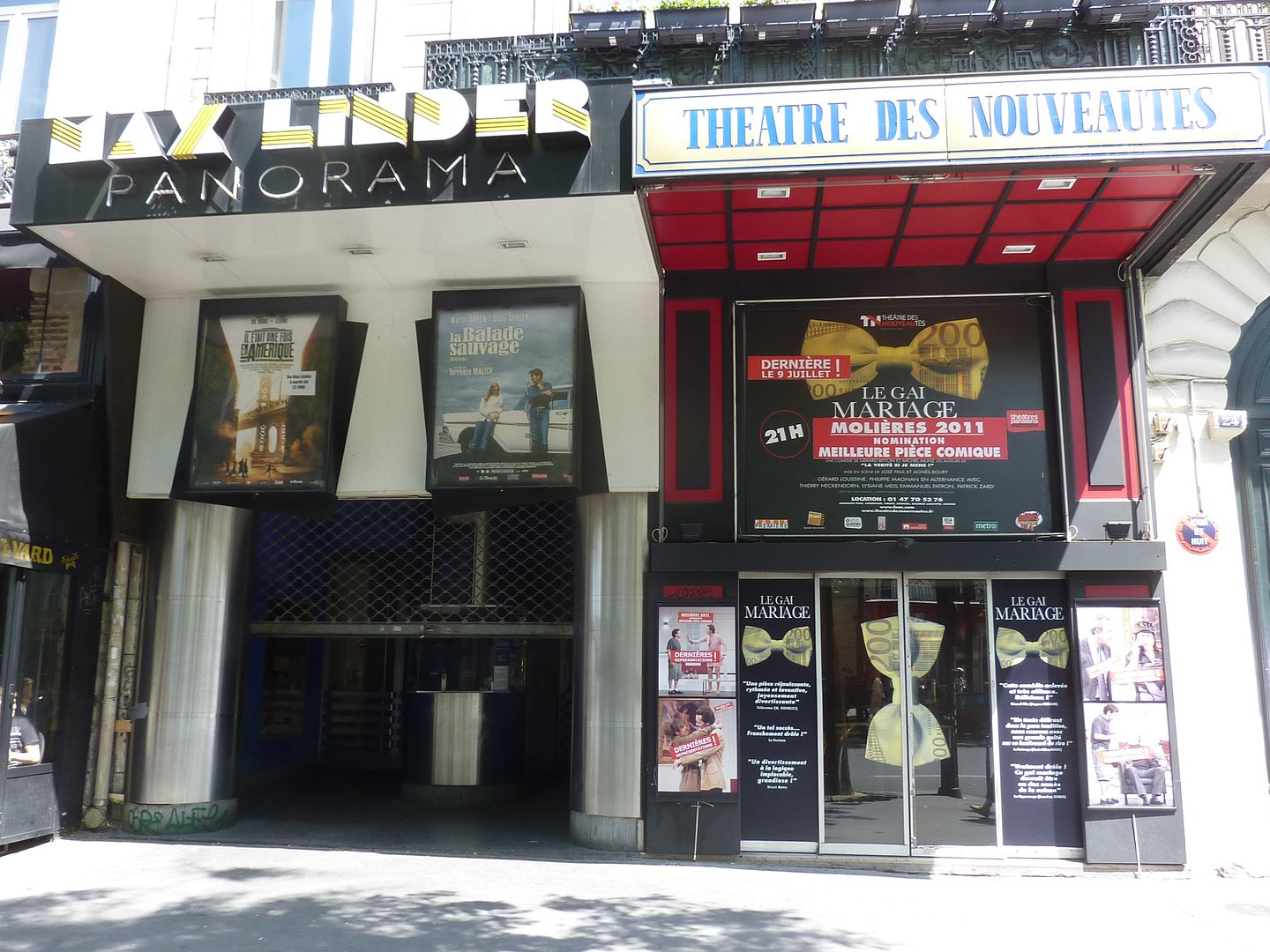 Right now is holiday time for the great majority of the theatres, time to renovate before September 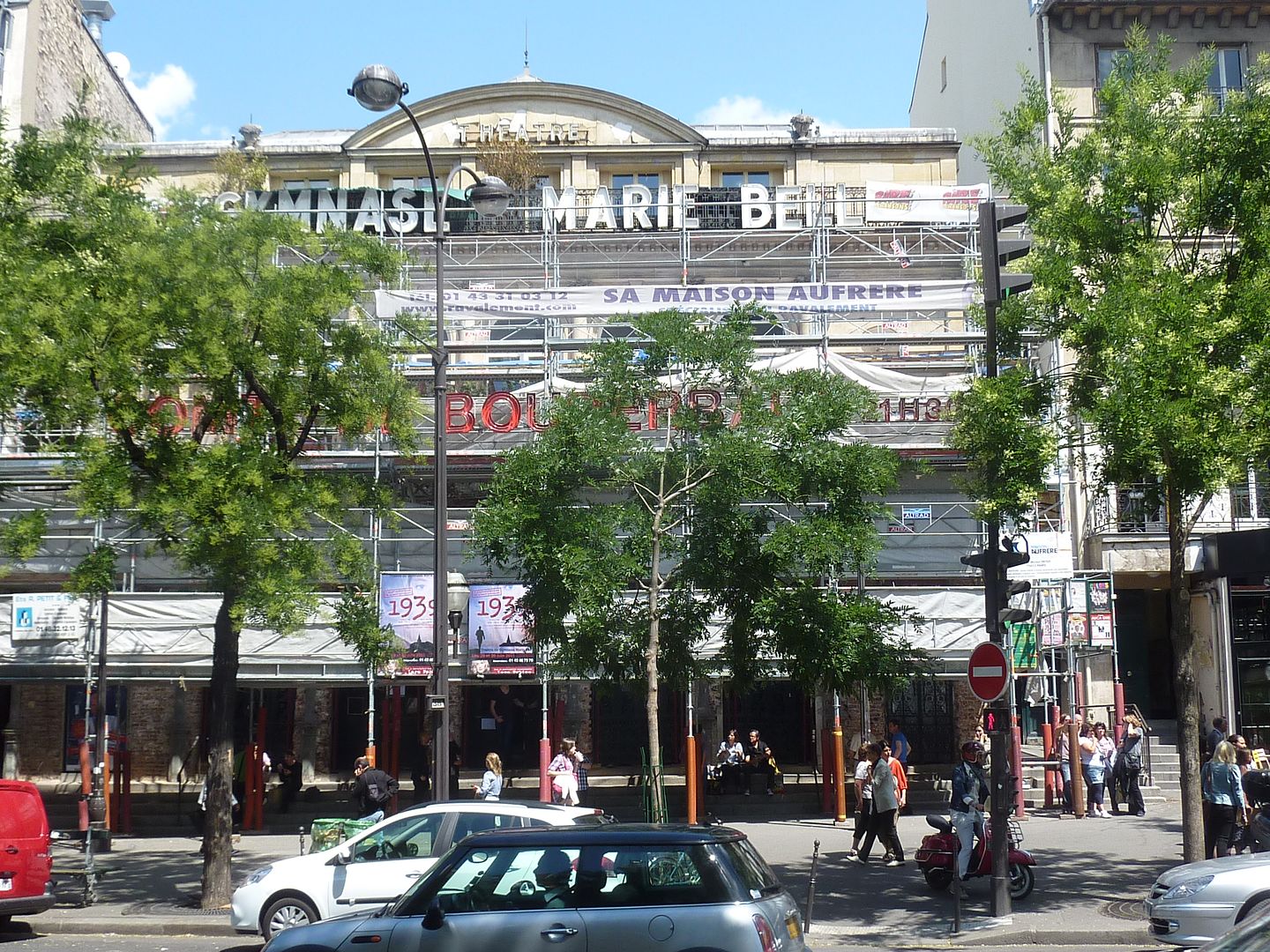 The Grand Rex is the largest cinema in Europe, with 2800 seats ( + a Rex multiplex next door ). It has two balconies besides the massive orchestra zone and is of course too large for modern needs, so it gets used quite often for rock concerts or other events. It returns to glory at Christmas, usually with the big Disney movie of the season, accompanied by a dancing water show which is really quite impressive when you think that you are seeing it right there in front of a cinema screen. It has other moments as well, such as the Harry Potter extravaganza in 2 weeks -- besides the midnight show on the day of the release, it will be having the marathon of all of the previous episodes shown in one endless flood. The Grand Rex even has a theme attraction, "Les Etoiles du Rex" which is absolutely of the same caliber of something that you might see in a Disney park. You walk through an amazingly long itinerary wearing multilingual headphones, learn about the history of the Rex, including a glass elevator ride behind the screen while movies are being shown, get attacked by King Kong, enter a black and white movie and other special effects before finally staggering out -- and it lasts 40 minutes. In the same block is the principal comedy club of Paris, which took over the location of the very first erotic cinema, the Midi Minuit. 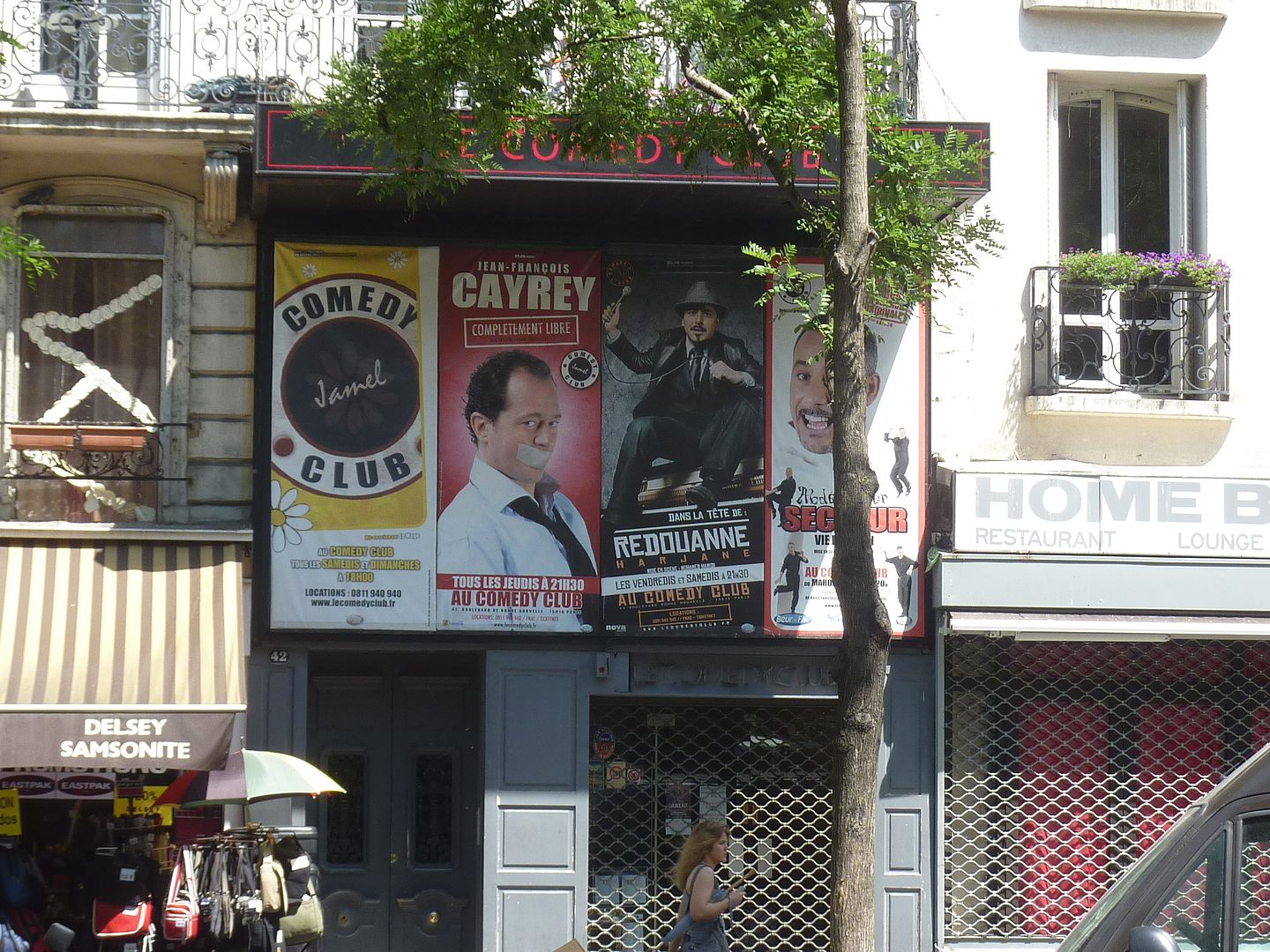 The boulevards go on and on. 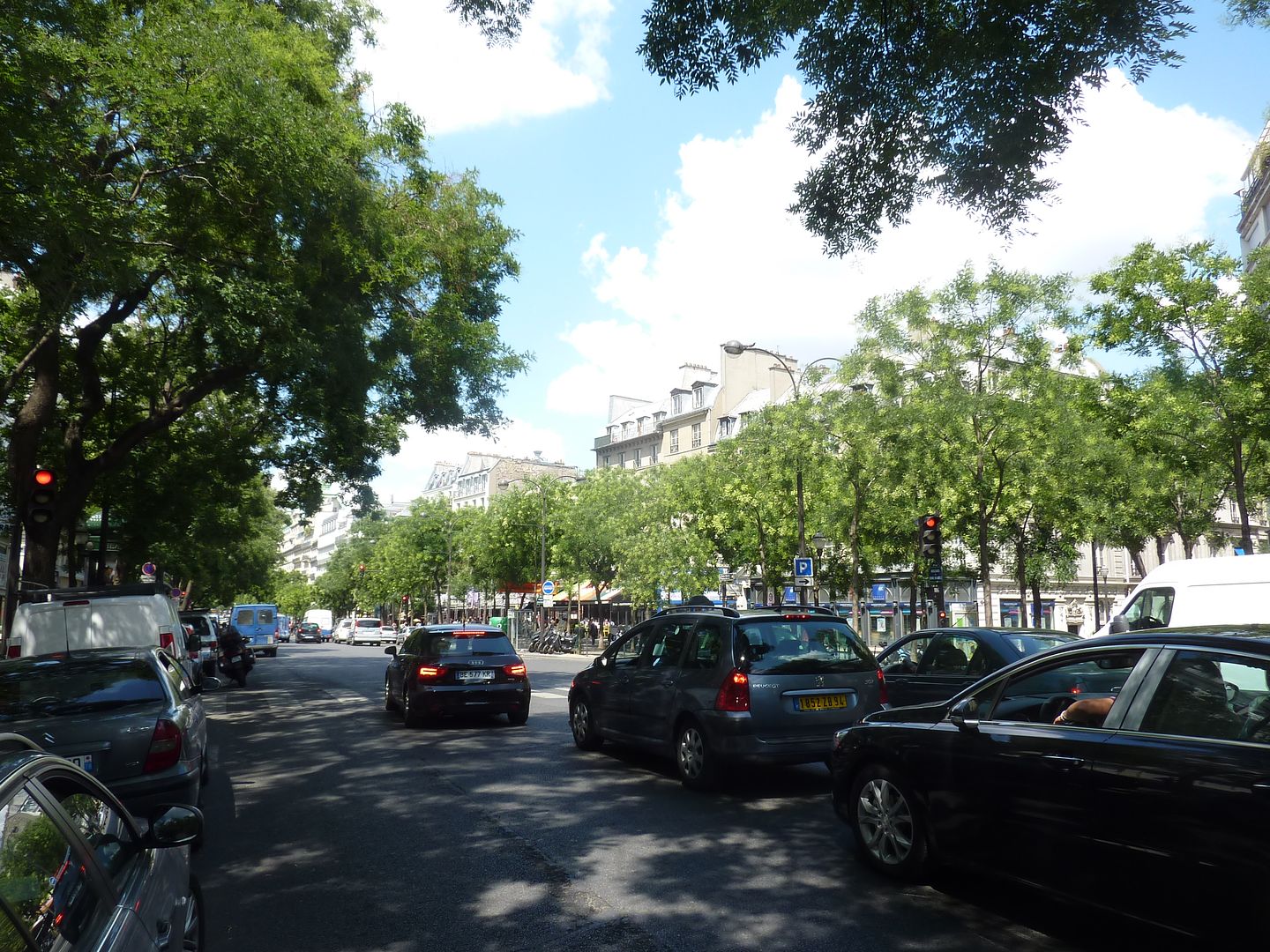 A streamline moderne post office! 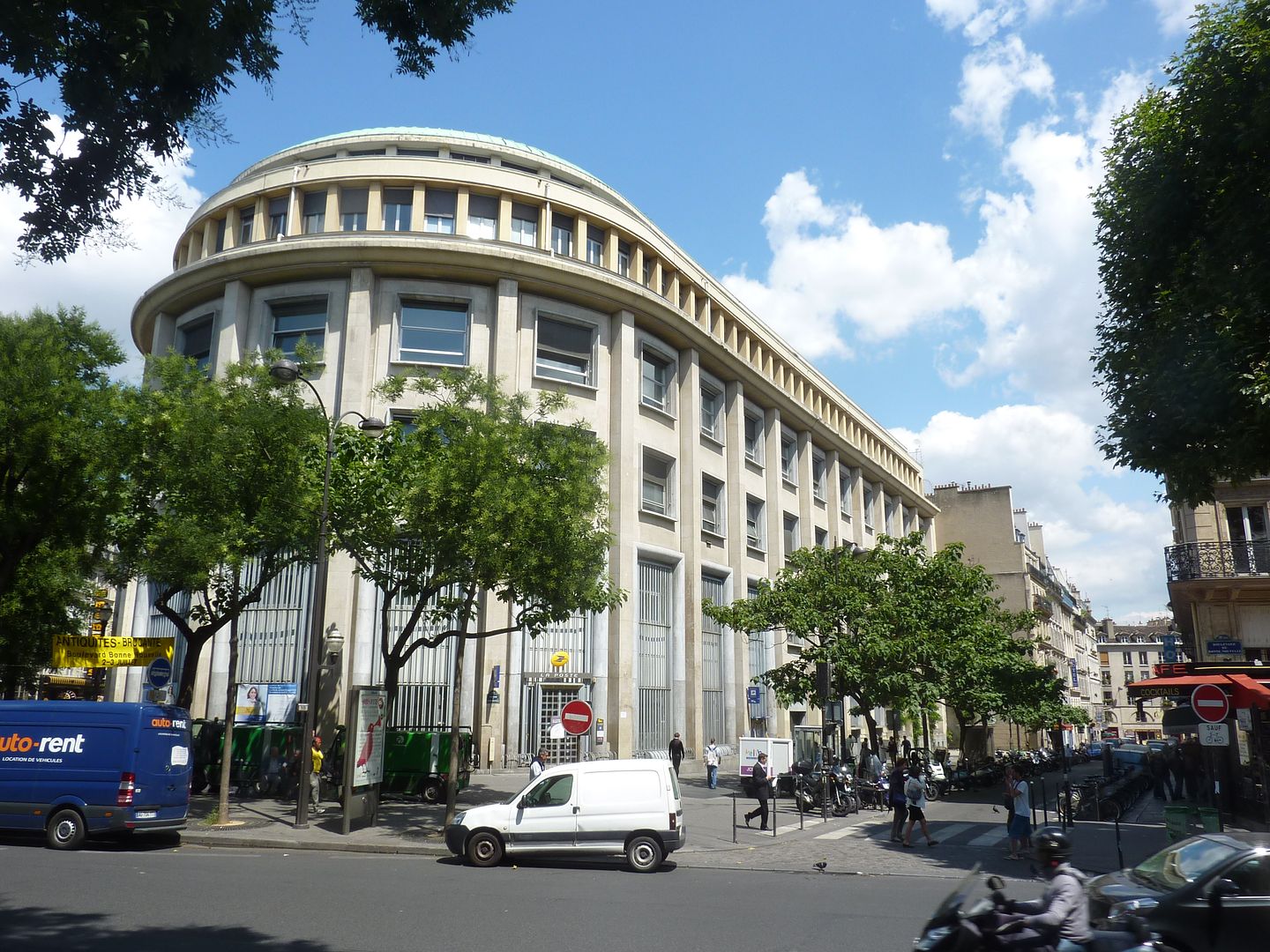 And we now arrive at the Porte Saint Denis, which I may have mentioned in another report. 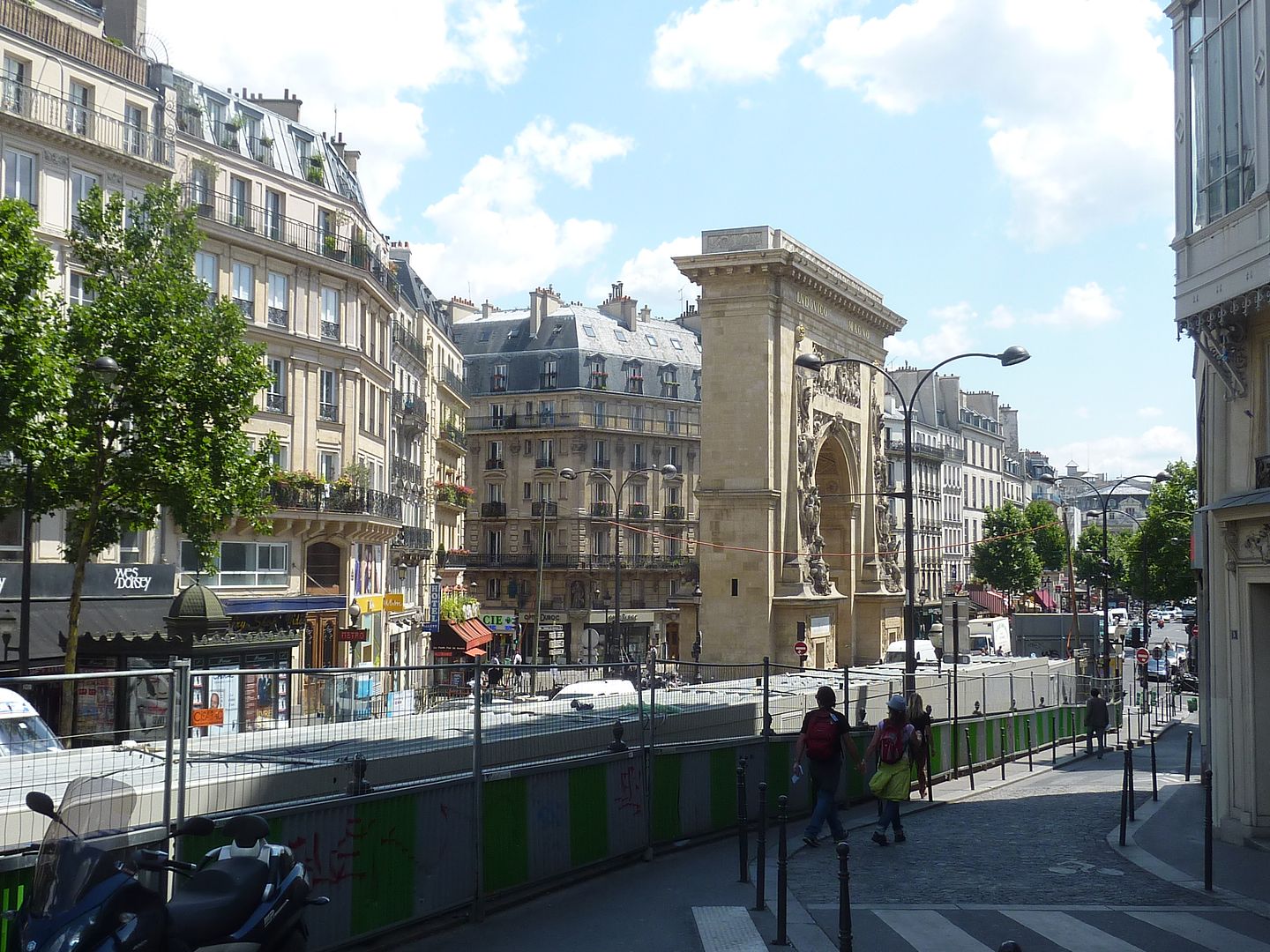 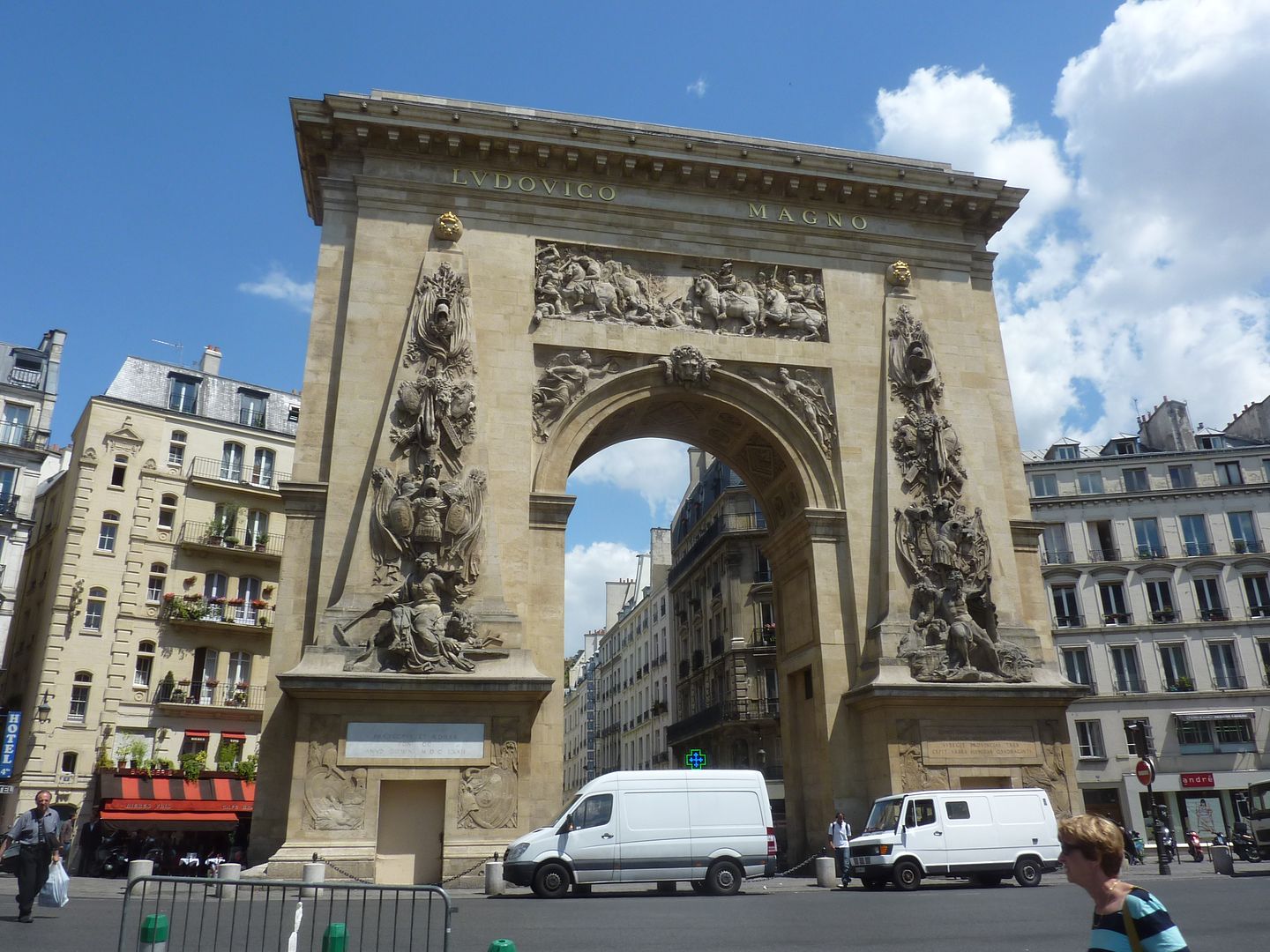 It might have been this report. |
|
|
|
Post by Deleted on Jul 4, 2011 19:40:58 GMT
We are now several kilometers from the elegant beginning of the boulevards around Madeleine and Opéra, and most of the buildings are no longer as elegant, although we are far from the slums. 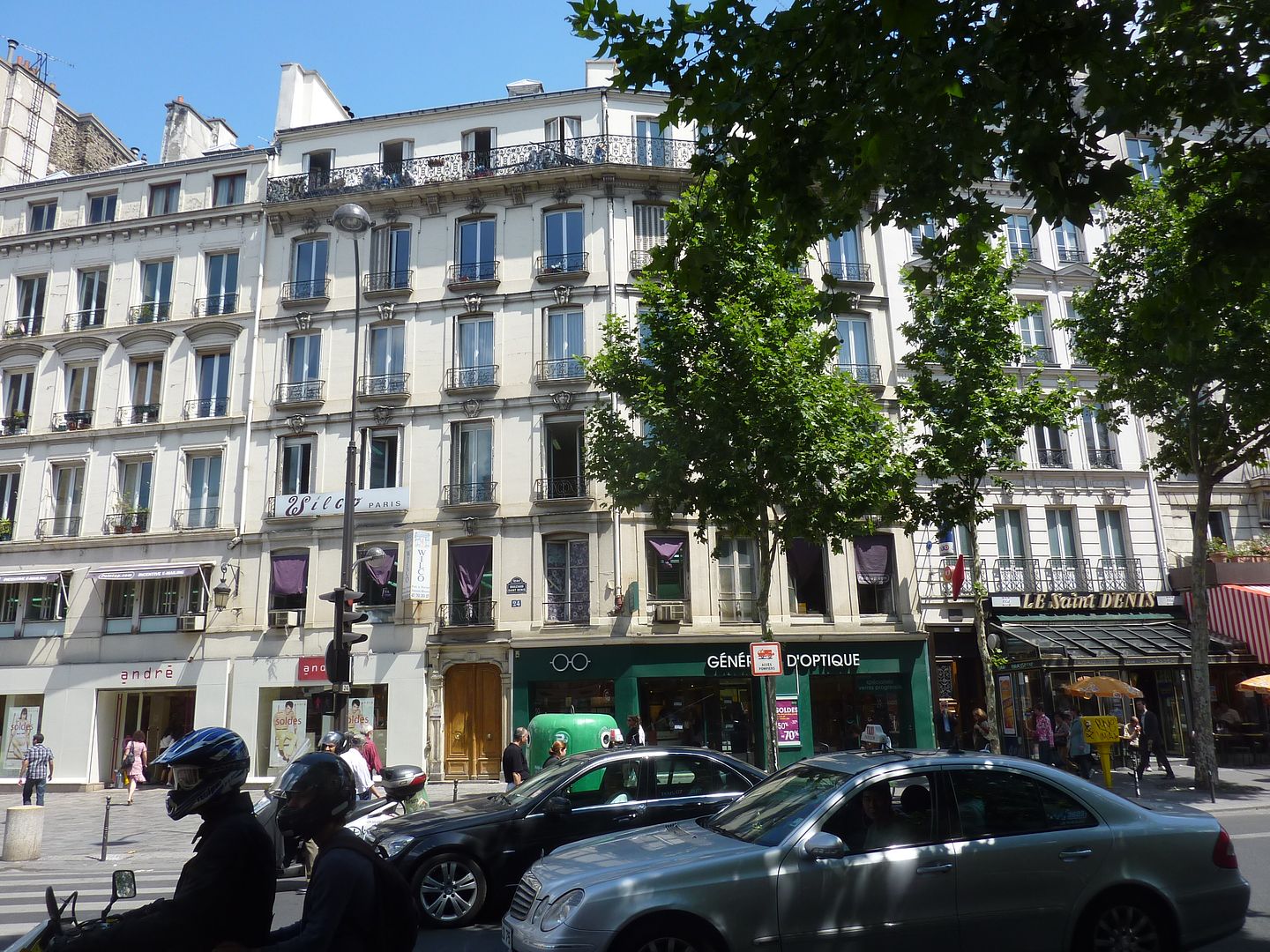 Another upcoming Mexican place amused me. These places have a life cycle of 2 or 3 years.  Right after the huge Haussmannian intersection of Boulevards Sébastopol and Strasbourg, is the second big porte, the Porte Saint Martin, separating rue Saint Martin from the Faubourg Saint Martin. |
|
|
|
Post by Deleted on Jul 4, 2011 20:08:21 GMT
We are arriving at one of the biggest squares of Paris, Place de la République. This last section of the boulevard used to be known as "Boulevard du Crime," starting from even before the Revolution, not because it was a dangerous area, but because there were a dozen theatres specialized in gruesome crime dramas. All of them were demolished when Baron Haussmann worked his magic on the streets of Paris in 1862. In 2011, the only theatre that you can find there is the Caveau de la République, a famous chansonnier specialized in political satire. There are maybe 4 or 5 of these places left in all of Paris, but they have diehard fans. 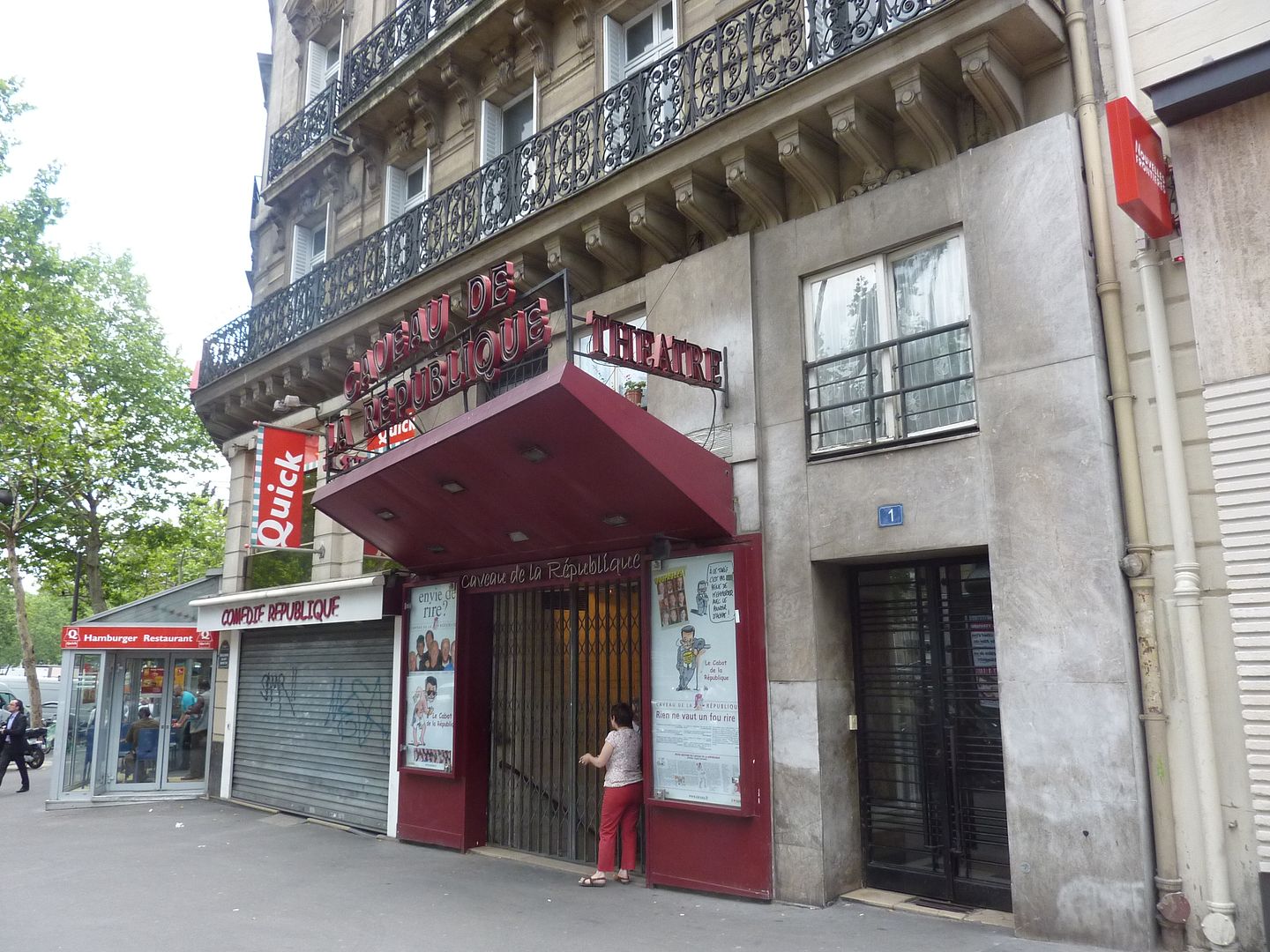 Quite a bit of Place de la République is devoted to economy rather than gastronomy. 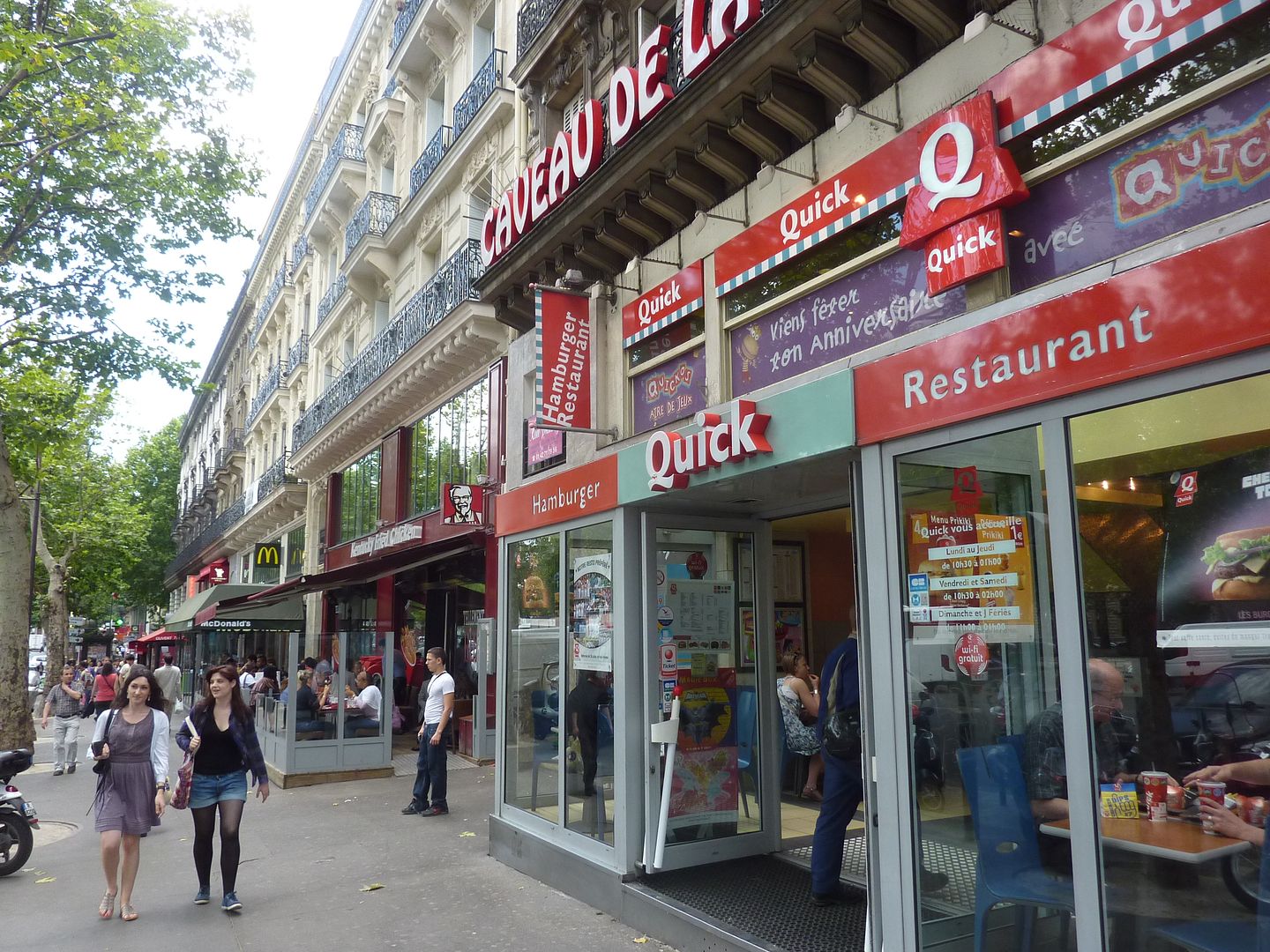 The square is really massive (besides being symbolic) and is the most common starting point for political demonstrations and marches. Most of the square is going to be pedestrianized rather than being a driver's paradise. The entire back side of the square will have the roadway removed, so it will no longer be a rectangle to drive around, and the Faubourg du Temple going to the Canal Saint Martin will become a pedestrian street as well. Here is the Crowne Plaza at the back of the square. It will be completely removed from all traffic.  There are also some very nice restaurants for those who did not jump into the fast food places. 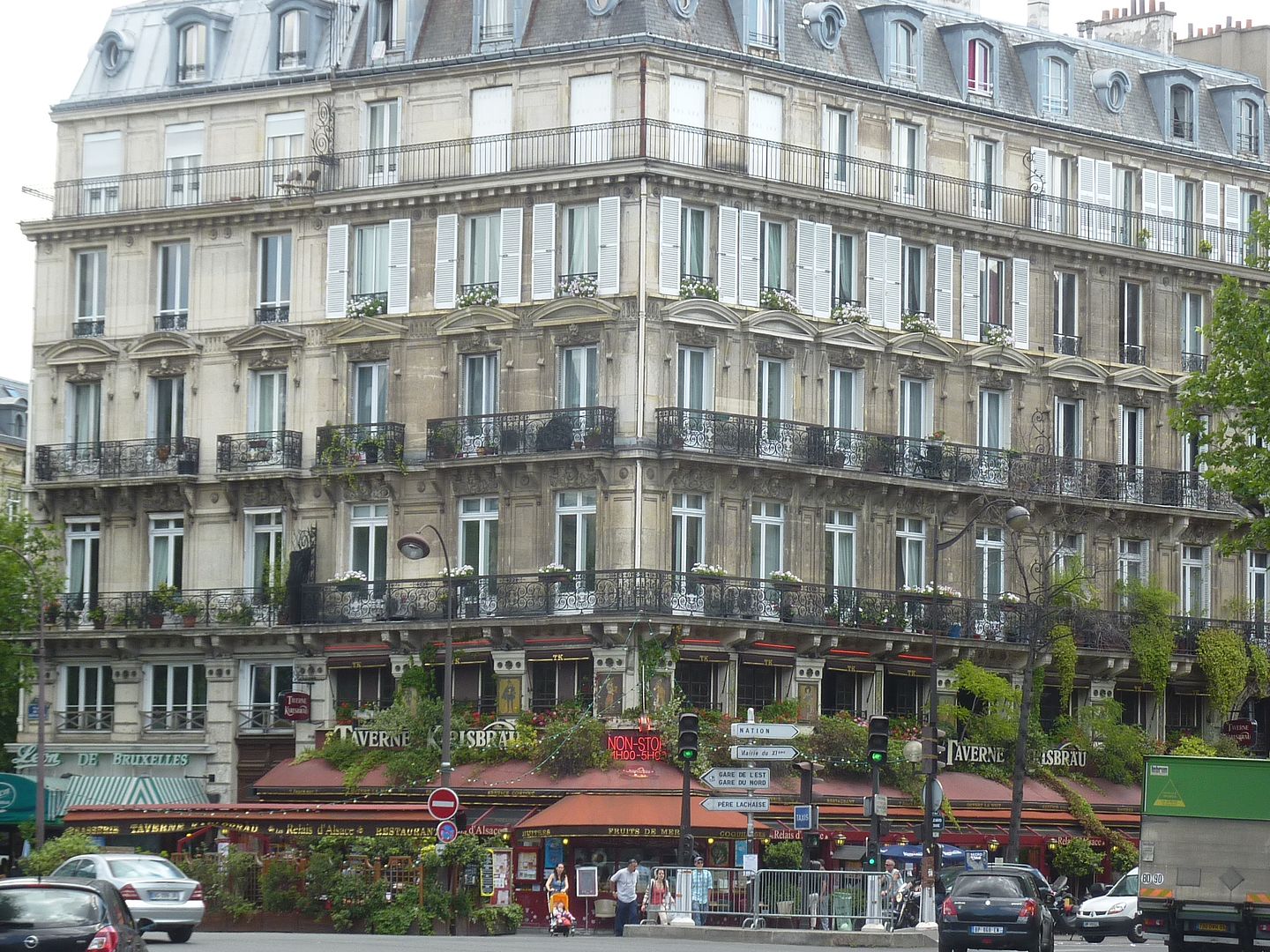 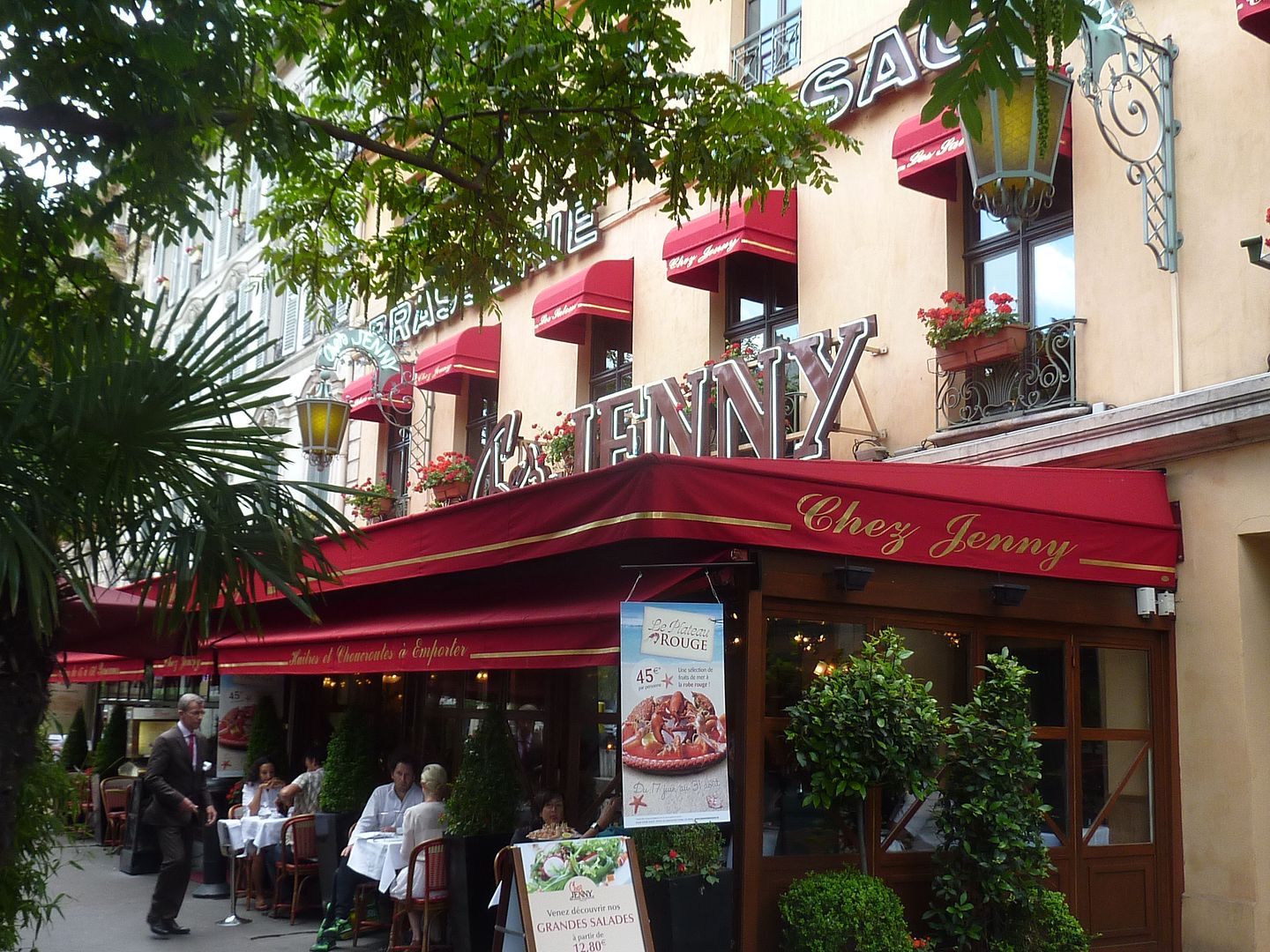 There are also some of the old "galleries" here. 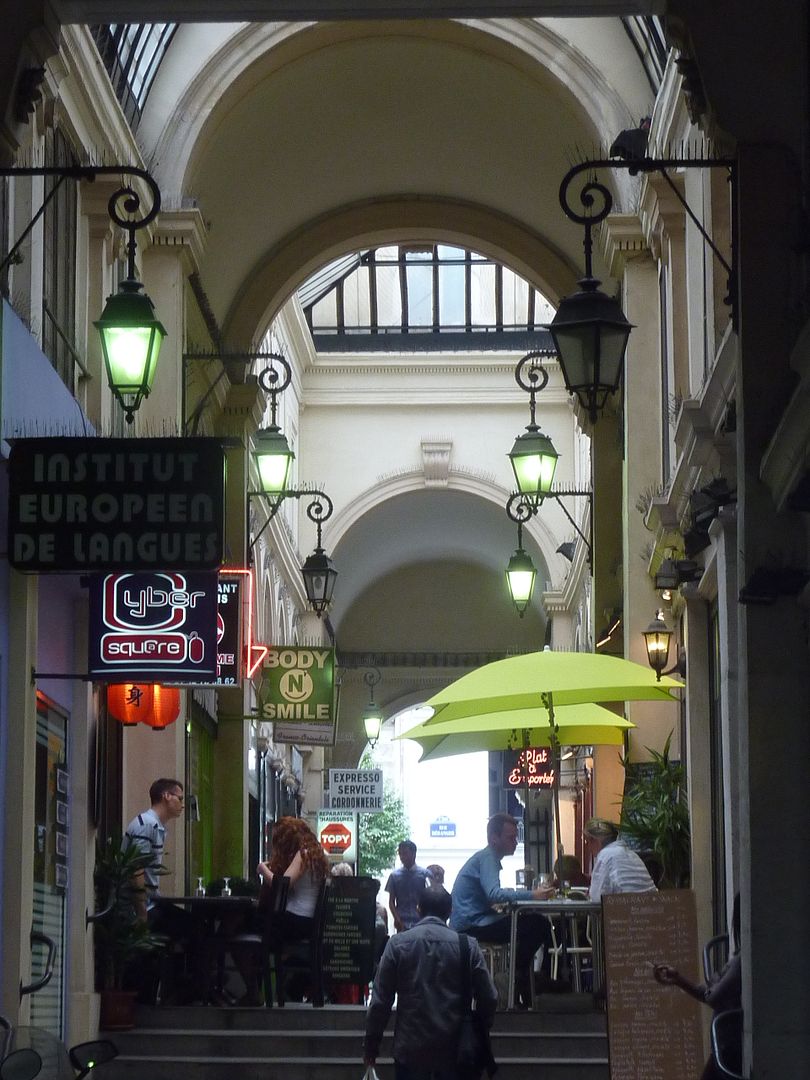 Onward in the direction of Bastille! 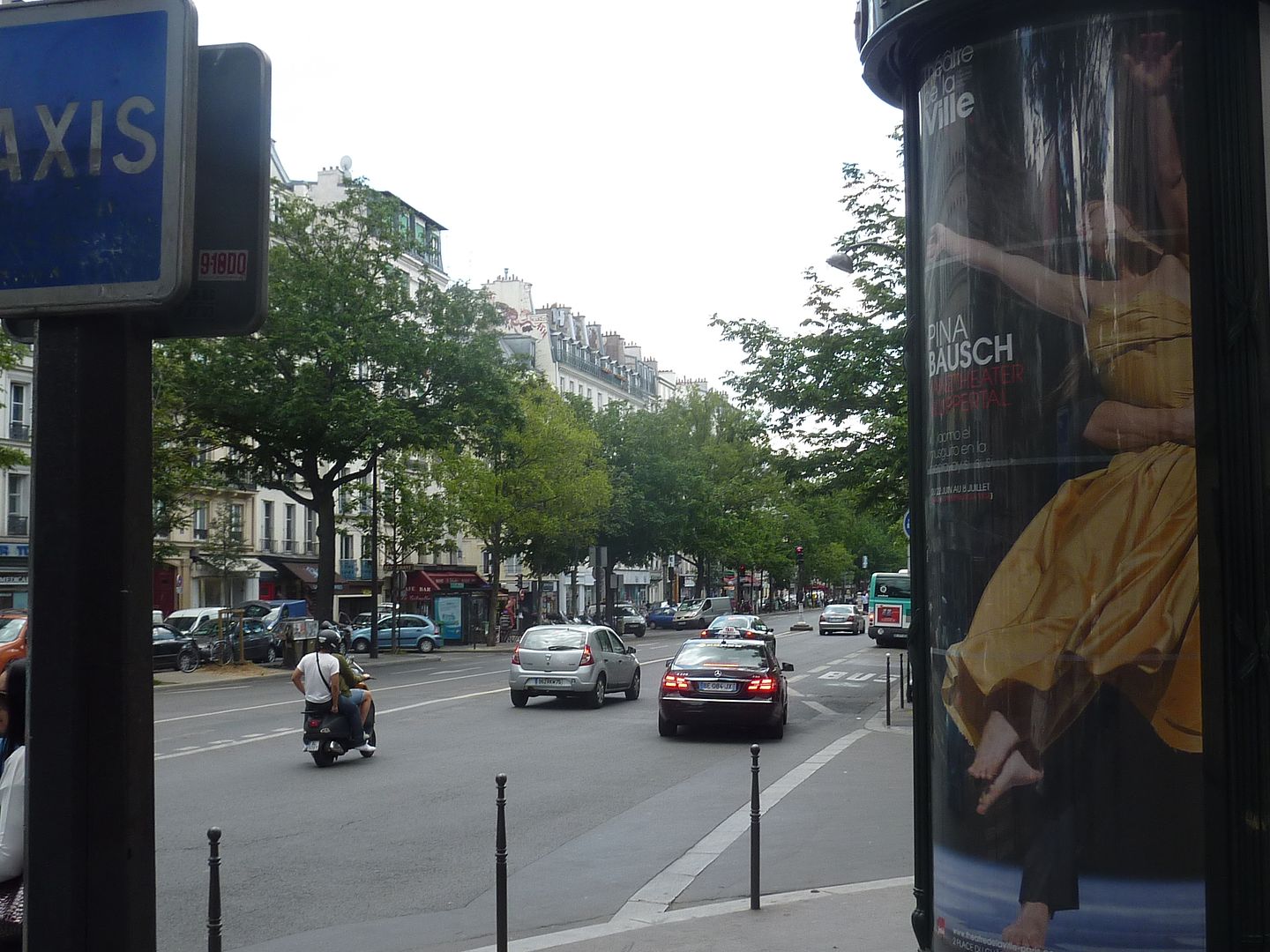 |
|
|
|
Post by mich64 on Jul 5, 2011 2:19:29 GMT
How wonderful to have such a guide around les Grande Boulevards. I am looking forward to walking around this area soon!
I have to admit to you, I picked up my laptop, held it to my face and even took my glasses off to try to see what Chez Jenny's was showing on their boards. ;D
Cheers,
Mich
|
|
|
|
Post by tod2 on Jul 5, 2011 13:20:38 GMT
I loved every photo and your commentary on les Grands Boulevards Kerouac! - some familiar like the REX cinema which we saw everyday as we made our way from the hotel to wherever and back. Some comments on other travel boards were that the 9th was kind of 'dead-end' Paris to stay in, but as I like all areas it certainly was interesting for us. I'm sad to say I never entered the Rex to have a look but maybe next year I will rectify that.
Yes Zona, I definitely think Kerouac is one hell of a tourist guide ! Many of his tips and mentions have been taken up by myself on my trips to Paris each year. Talking of guide books - Unless you get the trio of books on Paris by Thirza Vallois , you will miss a lot of information on what tourists see. I love history and info on buildings, people, streets, areas, etc., so never leave home without her three paperback editions "Around and About Paris, Vol 1, 2 3. Brilliant, just brilliant. You could get them there.
|
|
|
|
Post by Deleted on Jul 5, 2011 15:49:08 GMT
This part of the Grands Boulevards is the Boulevard des Filles-du-Calvaire ( = Daughters of Calvary ) and one of the main attractions is the Cirque d'Hiver which still indeed functions as a winter circus. At other times, it has some shows, concerts or even political rallies. But the other main attraction is the multitude of specialized shops for anybody interested in anything on two wheels, motorized or not. Various parts of Paris that I have shown in my reports fit together like pieces of a puzzle when you know where they are. |
|
|
|
Post by Deleted on Jul 5, 2011 18:50:16 GMT
Okay, now that I have bored everybody, I will wrap this up as fast as possible. I just wanted to mention the very last section of the boulevard which might be of interest to people who still enjoy taking traditional photographs. The last section is devoted to camera stores. I didn't even get a decent shot of the "Colonne de Juillet" because here was my bus arriving right at that moment, and since I had walked the entire length in one go, I was more than ready to sit down! |
|
|
|
Post by fumobici on Jul 5, 2011 21:40:19 GMT
Okay, now that I have bored everybody, I will wrap this up as fast as possible. Right. We collectively eat these Paris reports up like we were starving castaways and they were coq au vin paired to a sturdy Pouilly-Fumé. We shall never tire of Paris. Ever. |
|
|
|
Post by Deleted on Jul 5, 2011 21:58:25 GMT
Thanks, fumo. And your latest thread is great, too, even though I have not managed to comment on it yet since I am on the road with limited internet.
|
|
|
|
Post by bjd on Jul 6, 2011 5:06:17 GMT
Funny, I never associate Blvd Beaumarchais with the Grands Boulevards! In my mind, the latter are the areas with Galeries Lafayette, etc.
It's true that in the old Simenon books about Maigret, he and his wife used to go for a walk along the Grands Boulevards to the movies or to have a drink when it was hot outside. They lived Blvd Richard Lenoir.
|
|
|
|
Post by Deleted on Jul 6, 2011 5:45:41 GMT
Reading about the Grands Boulevards, I saw that it was mentioned that one of the most common mistakes that people make is to think that Boulevard Haussmann (i.e. the department stores) is one of the boulevards. In fact, it branches off the boulevards at Richelieu-Drouot (where the café Cardinal is shown in my report), but then it goes to the Arc de Triomphe, which is a completely different direction.
|
|
|
|
Post by tod2 on Jul 6, 2011 8:17:17 GMT
Great ending Kerouac! Loved seeing the Cirque D'Hiver again - the Bar du Cirque should'nt be confused with the famous Clown Bar just a few doors away with it's beautiful zinc counter and comical clowns painted on the walls. Apparantly the food is very good.
I have made note of those camera shops too!
|
|
|
|
Post by mich64 on Jul 7, 2011 0:48:05 GMT
Fumo I like your comment and agree that none of us ever tire of these photo essays, never ever ever!
Cheers,
Mich
|
|
|
|
Post by darcy on Jul 8, 2011 3:26:25 GMT
Great photos and narrative, Kerouac! Do you have an idea of how far you walked? How long did it take?
Thanks,
|
|
|
|
Post by Deleted on Jul 8, 2011 4:48:17 GMT
ViaMichelin tells me that it is 4.5 km and that walking time is 1h10min. That's without stopping to look at anything of course!
|
|
|
|
Post by kerouac2 on May 10, 2018 16:29:18 GMT
Wow, so many things have changed in 7 years. Virgin Megastore? What on earth was that?
I need to update this one of these days.
|
|
|
|
Post by bixaorellana on May 10, 2018 17:18:24 GMT
An update would be fabulous, of course, but for the time being I am delighted with the existing report. I don't know what I was doing or in what part of my body I had my head inserted in July 2011, but this entire report is completely new to me.
The interior of La Madeleine manages to look like a poorly designed theater. So strange that it was finally completed as a church. Is a visit to Maille to fill ones mustard pot still a fashionable thing to do? It and the shops around it really typify a starry-eyed vision of what shopping must be like in Paris. Some beautiful pictures in this report -- I particularly like the rain-splashed street view and the public metro sign just after it.
I doubt you'd get a fevered argument over calling the Opéra Garnier perhaps the most impressive building in the city, although it might set up a chorus of favorites from other people. Not saying these are my favorites from your report's pictures, but the Cirque d'Hiver is a most interesting and rather pretty building and the Grand Rex proudly goes full-bore streamline moderne, in contrast to the other, more sedate and rather Hausmannian-tinged examples of that style you show.
The dedicated two-wheeler section was a surprise.
I need to go look here and there in your other reports to see the evolution of Place de la République since you made this thread, but am very much looking forward to a full update here one of these days.
|
|
|
|
Post by lagatta on May 11, 2018 12:27:01 GMT
If I recall, Kerouac did do a report on the renovated Place de la République ... and then how the place became a commemorative centre for the victims of the Bataclan and other massacre sites. La Madeleine also has a resto associatif. While very modestly priced, it would be too expensive for street people (unless they get some kind of voucher, which is not indicated). I guess it is more for workers nearby, or pensioners who aren't too poor. foyerdelamadeleine.fr/ |
|
|
|
Post by kerouac2 on May 13, 2018 12:11:14 GMT
Going back to the start of the Grands Boulevards, I thought I would try to take a look at a few different things. One thing I did not mention when I started this report were the famous public restrooms at Place de la Madeleine. They were an absolute masterpiece. Unfortunately, they closed in 2011. The old men's restroom was transformed into a storage space for telecommunications equipment. The other restroom stayed open for mixed use briefly and then it closed, never to reopen. Periodically, there is a call to reopen and restore the restroom but frankly there is no need for them, and it would cost a fortune in tax money that can be used otherwise. So here is all that remains to be seen of the old entrances. Finally, as we leave Place de la Madeleine, there is another interesting building. For a long time (1932-1990) it was the Trois Quartiers department store. Then it was transformed into a high end shopping gallery and offices. It was renovated again in 2009 and turned into a C&A clothing store for the most part as well as a sporting goods super store in the basement levels. C&A moved out, because it is the wrong kind of neighbourhood for them, and anyway they have another huge store nearby on Boulevard Haussmann. Why am I telling you this? Because a new incarnation is on the way -- it is going to become a downtown Ikea store, the first ever downtown location in France. Ikea is so important to Parisians that it runs free huge coaches with baggage holds from no fewer than five different locations in Paris to various stores in the burbs. So this should be a major revolution. At the moment, this is what the building looks like. |
|
|
|
Post by bixaorellana on May 13, 2018 13:59:43 GMT
It is surprising that those washrooms have not been repurposed in some clever way. I imagine those stairs down to them smell like a not-very-nice washroom for now.  Is it sick and Philistine-ish of me to contemplate putting one of those bus trips to Ikea on a Paris to-do list?  |
|
